San Jose in the 1920s was a city on the rise. As the third largest city in California, it was a vibrant community with a mix of agriculture, burgeoning industry, and cultural development. The decade was marked by significant changes and events that shaped its future.
Life in the 1920s
Life in San Jose during the 1920s was a blend of small-town charm and urban growth. The population was around 40,000, and the city was known for its friendly neighborhoods and community spirit. People enjoyed a slower pace of life compared to today, with many residents working in agriculture or small businesses.
Transportation was evolving. Automobiles became more common, and the city saw improvements in its road infrastructure. The advent of cars changed daily life, making it easier for people to travel to work and leisure activities.
Read more
Famous Places and Events
One of the most famous places in San Jose during the 1920s was the Winchester Mystery House. This sprawling mansion, built by Sarah Winchester, attracted visitors with its mysterious staircases, doors leading to nowhere, and unique architecture. It became a popular tourist attraction and remains a historical landmark.
The Civic Auditorium, built in 1936, was another key location. While it opened just after the 1920s, its planning and construction began in this decade. It became a central venue for community events, concerts, and public gatherings.
In 1927, San Jose saw the grand opening of the Sainte Claire Hotel. This luxurious hotel was a symbol of the city’s growth and prosperity. It offered elegant accommodations and became a hotspot for social events, attracting visitors from across the state.
Economy and Industry
The economy of San Jose in the 1920s was primarily driven by agriculture. The city was known as the “Valley of Heart’s Delight” due to its fertile land and abundant orchards. Prunes, apricots, and cherries were major crops, and the canning industry thrived. Companies like the California Prune and Apricot Growers Association played a significant role in the local economy.
Industrial growth was also notable. San Jose was becoming a hub for innovation and manufacturing. Companies producing agricultural equipment, food products, and consumer goods set up operations in the city, providing jobs and boosting the economy.
The financial sector saw growth as well, with the establishment of new banks and financial institutions. These developments helped support the city’s expanding business activities and population.
Construction and Infrastructure
The 1920s were a time of significant construction and infrastructure development in San Jose. The city invested in modernizing its roads and public services to accommodate the increasing population and automobile traffic.
One of the major construction projects was the building of new schools to serve the growing number of children. San Jose High School, one of the oldest high schools in California, expanded its facilities during this period.
Residential construction boomed, with new neighborhoods and housing developments springing up. The architecture of the time reflected the popular styles, including Craftsman bungalows and Spanish Colonial Revival homes. These houses added to the charm and character of the city.
Restaurants and Food
Dining in San Jose in the 1920s offered a variety of options, reflecting the city’s diverse population. Local restaurants served hearty, traditional American fare, with diners and cafes being popular spots for socializing.
One notable restaurant was Original Joe’s, which opened in 1937 but was rooted in the traditions established during the 1920s. It became famous for its Italian-American cuisine, offering dishes like spaghetti and meatballs, steak, and seafood. Restaurants like this laid the groundwork for San Jose’s culinary scene.
Farmers’ markets were also common, where residents could buy fresh produce directly from local growers. These markets were a staple of community life, offering a wide array of fruits, vegetables, and homemade goods.
Entertainment and Culture
Entertainment in San Jose during the 1920s was lively and diverse. The city had several theaters, including the Liberty Theater and the Jose Theater, where people enjoyed silent films and live performances. Vaudeville shows, featuring a mix of comedy, music, and dance, were particularly popular.
Music played a big role in social life. Jazz, a new and exciting genre, captivated audiences. Dance halls and speakeasies, though technically illegal during Prohibition, provided venues for people to enjoy music and dance the night away.
San Jose State Teachers College, now known as San Jose State University, was a center of cultural activity. The college hosted lectures, performances, and sporting events, contributing to the city’s intellectual and cultural growth.
Social Issues and Movements
The 1920s in San Jose, like much of the United States, was a time of social change. Prohibition, which lasted from 1920 to 1933, had a significant impact. While alcohol was banned, speakeasies operated secretly, and bootlegging became common. This period also saw the rise of organized crime related to the illegal alcohol trade.
Women’s suffrage, achieved nationally in 1920, empowered women in San Jose to become more active in civic life. Women began to take on more prominent roles in business, education, and community organizations.
The city also grappled with issues of immigration and labor rights. San Jose’s agricultural industry relied heavily on immigrant labor, leading to tensions and advocacy for better working conditions and fair wages.
Education and Public Services
Education was a priority in San Jose during the 1920s. The city expanded its public school system, building new schools and improving existing ones. San Jose State Teachers College played a crucial role in training teachers who would go on to educate the next generation.
Public services, including healthcare and transportation, saw improvements. The city built new hospitals and expanded medical services to cater to the growing population. Public transportation systems were upgraded, making it easier for residents to move around the city.
Fashion and Lifestyle
Fashion in San Jose during the 1920s reflected the broader trends of the decade. Women embraced the flapper style, with shorter hemlines, bobbed haircuts, and a more relaxed attitude toward traditional gender roles. Men’s fashion also evolved, with more casual styles becoming acceptable in everyday wear.
Leisure activities included picnics in the park, visits to local swimming holes, and community events. The people of San Jose enjoyed a strong sense of community, with neighbors often gathering for social activities and celebrations.
Technology also began to change daily life. The introduction of radio brought entertainment and news into homes, connecting residents to national and international events. Telephones became more common, making communication easier and more efficient.
San Jose in the 1920s was a city of growth and change, with a rich blend of agriculture, industry, and culture. The decade laid the foundation for its future development, shaping it into the vibrant community it is today.
#1 Group portrait of cyclists, San Jose Bicycle Day, May 5 ,1923
#2 Confiscated stills in front of the San Jose courthouse, 1925
#3 Hotel Vendome, San Jose, 1922
#4 Downtown Campbell, California. 1925
#5 Exterior of the Biceglia Building, also showing exterior of Frisco Furniture Store, 1928
#6 Bank of San Jose Building, 1920
#7 Tree-planting ceremony on the grounds of San Jose State Teachers College, San Jose, 1925
#8 Burrell Building, Standard Furniture Company, San Jose, California, 1925
#9 The Completed San Jose Hospital, 1923
#10 San Jose Rubber Works 51 South Third Street, 1920s
#11 San Jose Nursing Department Members, Superintendents and Staff, 1925
#12 Columbia Hospital in downtown San Jose at Market Street and Auzerias Avenue, 1920
#13 Freight train on Fourth Street in downtown San Jose, 1920s
#14 Porter Building, 1920s
#15 San Jose Hospital, 1928
#16 Post Office on North First Street, San Jose, 1927
#17 Automobile, tractor, and hay-filled cart in a field in Evergreen, near San Jose, California, 1920
#18 Threshing activity seen from a distance in an expansive field in Evergreen, near San Jose, California, 1920s
#19 Commercial card titled “Winchester Mystery House, Near San Jose, California, 1920s
#20 Porter Building, on the Northeast Corner of Second and Santa Clara Streets, San Jose, 1925
#21 Back of Winchester Mystery House, 1920s
#22 Radio antenna on top of building, San Jose, 1925
#23 Woman pulling car with teeth, San Jose, California, 1926
#24 Red Star Laundry, 360 Park Avenue, 1926
#25 R. M. Lipe, Machine Shop, San Jose, 1926
#26 Henry M. Bland, Edith Daley, Edwin Markham, 1927
#27 Men working canning machines at Hunt Brothers Packing Company. Cannery was located at 361 North Fourth Street, San Jose, 1925
#28 Walsh-Col Co., Wholesale Grocers, 1925
#29 Boy Scout Parade, South First Street, 1924
#30 Butcher Electric modernized the electrtical fixtures in the Red Star Laundry, 1928
#31 Knights of Columbus Building, 40 North First Street; built in 1926 Had swimming pool on fourth floor, 1926
#32 Olmstead Band playing at San Jose, 1929
#33 Bernard Panella Hauling Co. truck and trailer loaded with fruit boxes. In the background is the Artana building located at 349 West Santa Clara Street, 1922
#34 Downtown San Jose from Wyckoff’s offices, including St. James, the old Post Office (later library and San Jose Museum of Art), as well as the City Hall, 1920s
#35 Exterior view of the Casa de Pedrorena, the first frame house built in Old Town, 1920
#36 Charles Herrold in radio lab booth, 1925
#37 Man posing with two confiscated stills, 1925
#38 Eagle Brewery with gas station, 1920
#39 The Shaw Warehouse & Forwarding Company and E. H. Renzel Wholesale Grocers, 1920s
#40 Two railroad cars, 1920s
#41 Peach Pitter, 1926
#42 Pathfinders sitting on hillside overlooking valley, 1920s
#43 Naptime for the Pathfinders after their hike at Inverness, 1920s
#44 Race of the Cyclists, 1925
#45 O’Brien’s Ice Cream Store and Candy Factory, 1928
#46 San Jose Street scene with electric light tower, 1920
#47 Dirt drive, lined with rocks, leading to Schuhardt’s at La Honda, 1920s
#48 Muirson Label Company employees standing in front of the Muirson building located at 435 Stockton Avenue, 1923
#49 Holy City, 1928
#50 Mare Island Naval Shipyard equipment, 1920s
#51 Parade in San Jose, 1920s
#52 Benson & Weaver, Studebaker Trucks, 1923
#53 FMC Equipment Cooker, 1927
#54 Building under construction, 1926
#55 Brace Avenue, Willow Glen, 1922
#56 Muirson Label Company Pressroom, 1926
#57 Bean Tire & Rubber Works, 1925
#58 Associated Oil Company Service Station, 1922
#59 FMC Equipment Preheater, Sterilizer, and Cooler, 1927
#60 Pathfinders at the Beach, 1928
#61 A family standing in front of a building, 1921
#62 Irvington Grammar School, 1928
#63 Kolster Radio Compass and Position Finder, 1921
#64 Golden Gate Packing company, 1920
#65 United States Products Corporation exterior, 1926
#66 Eddie Rickenbacker with biplane and automobile, 1925
#67 FMC Equipment – Conveyor, 1922
#68 Race in Veledome, 1925
#69 Coyote Creek Bridge on Berryessa Road, 1920
#70 Truax & Drew’s Garage on North side of Franklin Street between Main and Franklin, Santa Clara, 1920
#71 Northern California Members 1929 California Legislature, 1929
#72 City Truck and Transfer Company about 1925
#73 A large piece of equipment is being manoeuvred out of building onto railway car below, 1924
#74 Peninsular Railway Car No. 108 speed eastbound along Stevens Creek Road, 1920s
#75 Post Office on N. First Street, 1920s
#76 College of the Pacific building, women strolling in front of building, 1925
#77 The wooden frame building on the right is the old Renzel house, 1920s
#78 Looking down hill, from print shop to restaurant, 1928
#79 Meadow and Trees, Big Basin, California, 1920s
#80 Sunnyvale Garage, William Cockrell & N. Nielsen, 1922
#81 FMC Equipment Preheater, Sterilizer and Cooler, 1927
#82 Parachutist landing, 1920s
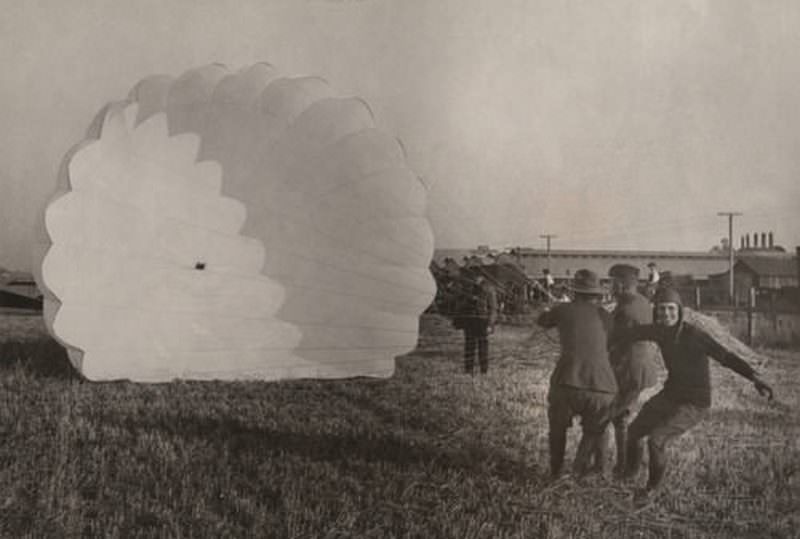
A parachutist lands at an air field. Stunt flyers were attracted to Phelan Field, a large tract of open land extending from First Street to the Southern Pacific Railroad's Fourth Street tracks. To make the event even more spectacular, parachutists such as the one in this picture were added.
#83 Exterior of multi-story factory, 1924.
#84 FMC Equipment, 1924
#85 Canello Hayes Canello Ford Lincoln Dealership, 1923
#86 FMC Equipment Pressure Cooker, 1927
#87 Pajaro District School, 1925
#88 California Cured Fruit Association, 1920s
#89 Booker School, 1920s
#90 Lick eclipse expedition camp near Ensenada, Mexico, 1923
#91 Small house nestled up against wooded hillside. Two cars are parked alongside the dirt roads, 1920s
#92 Pathfinders at Vill-del -Leau – beach area with rock outcropping in background, 1926
#93 Sargent’s Frozen Foods/Ice Sickle Zero Storage, 1920s
#94 47th California Legislature, 1927
#95 Front of large estate with gate, possibly one of Sarah Winchester homes, 1922
#96 Joe and Frank Madeiros, 1925
#97 Benson & Weaver Automobile Business, 1920
#98 Henrietta Escobar (Bernal) playing the Guitar in New Almaden Parade, 1920s
#99 Peninsular Railway Car Co., 1920s
#100 FMC Equipment, 1924
#101 Penitencia Creek Bridge on King or Capitol, 1920
#102 FMC Equipment Dryer, 1927
#103 Markham House Cottage, 1926
#104 Calkins Ranch (line of automobiles and people in field), 1925
#105 Transporting fruit for canning by open truck, 1925
#106 San Jose, Market Street and West Santa Clara Street, 1925
#107 Car in front of the Market Street Post Office, 1921
#108 Main Office of Richmond Chase Company, Plant Number 7, San Jose, 1920s
#109 Hotel Sainte Claire viewed from the grounds of the Municipal Auditorium, 1920s
#110 Mission San Jose, 1920
#111 Flower Lover’s Club group portrait, 1923
#112 Western Well Works Company, 1925
#113 Hunt Brothers Packing Company, 1920
#114 San Jose High School, 1920
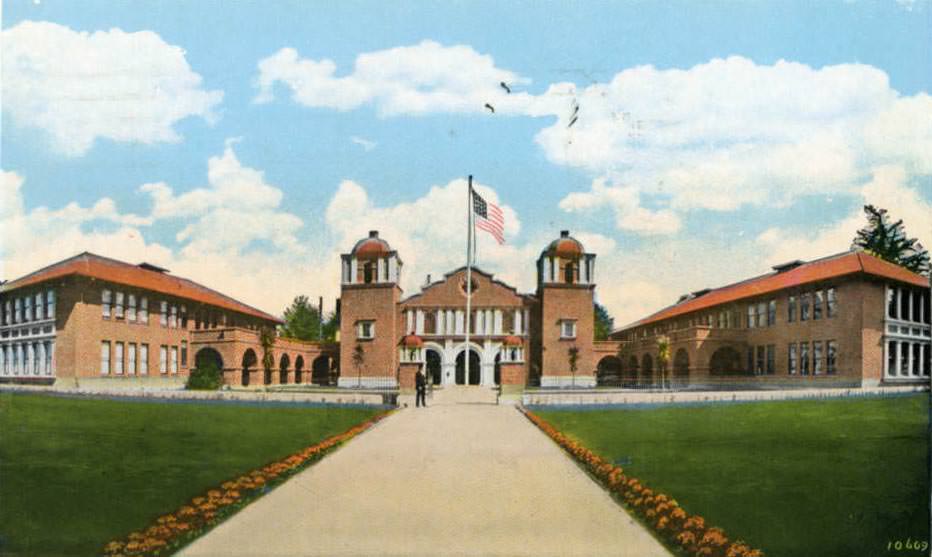
View of San Jose High school looking south from San Fernando Street. A path lined with flowers and lawns lead to the main entrance. A man stands on the left by the front gate. A large flag flies from the flagpole in front of the school. The entrance in the center leads to administrative offices and an auditorium. The school is built in the Mission Revival style with flanking bell towers. The wings on either side hold classrooms. This school was built on the site of the old high school destroyed in the 1906 earthquake. The school was moved in 1952 when adjacent San Jose State College needed space to expand.
#115 High frequency transmitter, built by Heintz and Kaufman, 1923
#116 Elks Building, 1921
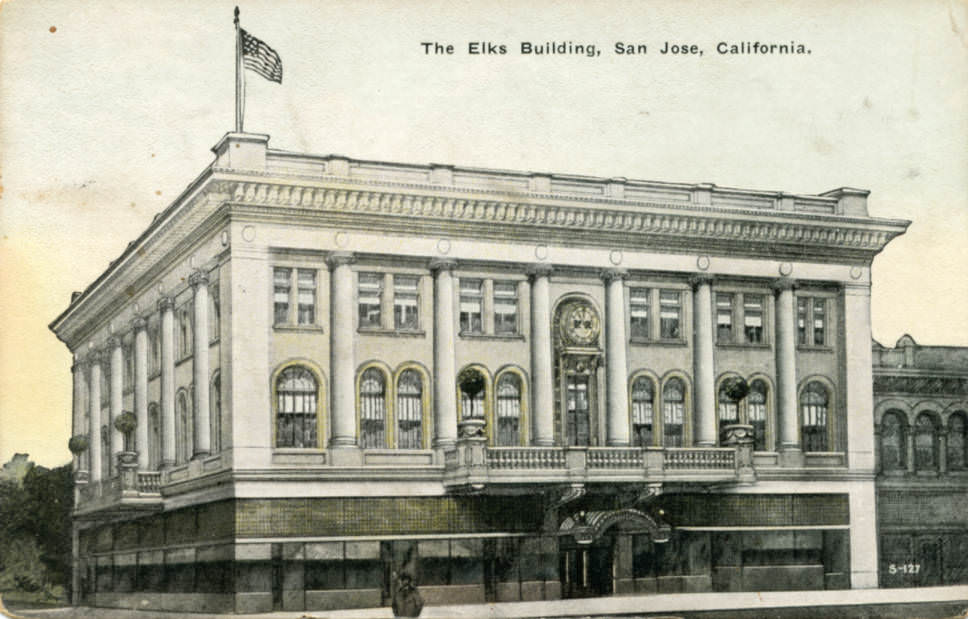
View of San Jose High school looking south from San Fernando Street. A path lined with flowers and lawns lead to the main entrance. A man stands on the left by the front gate. A large flag flies from the flagpole in front of the school. The entrance in the center leads to administrative offices and an auditorium. The school is built in the Mission Revival style with flanking bell towers. The wings on either side hold classrooms. This school was built on the site of the old high school destroyed in the 1906 earthquake. The school was moved in 1952 when adjacent San Jose State College needed space to expand.
#117 Peter Andreucetti in front of the Purity Baking Company building, 1925
#118 Linda Vista Country Club, 1925
#119 Mission San Jose, 1920
#120 Businesses on the East side of South First Street, 1925
#121 Saint Joseph’s Church, 1925
#122 Kuwabara Hospital under construction in 1920
#123 The Triangle Service garage located at East Williams Street, 1925
#124 Residence of Mr. L. T. Lenox, 1928
#125 Lester Apartments, 1920
#126 Alice Smothers in front of trolley car, 1920
#127 Blase Bros. & Company, delivery truck, 1925
#128 First full length (de Forest) newsreel with sound on film, 1927
#129 Three men next to De Forest Phonofilm matinee sign, 1925
#130 The Salvation Army truck at 211 South Market Street, 1925
#131 Sainte Claire Hotel, 1926
#132 North First Street looking south, 1928
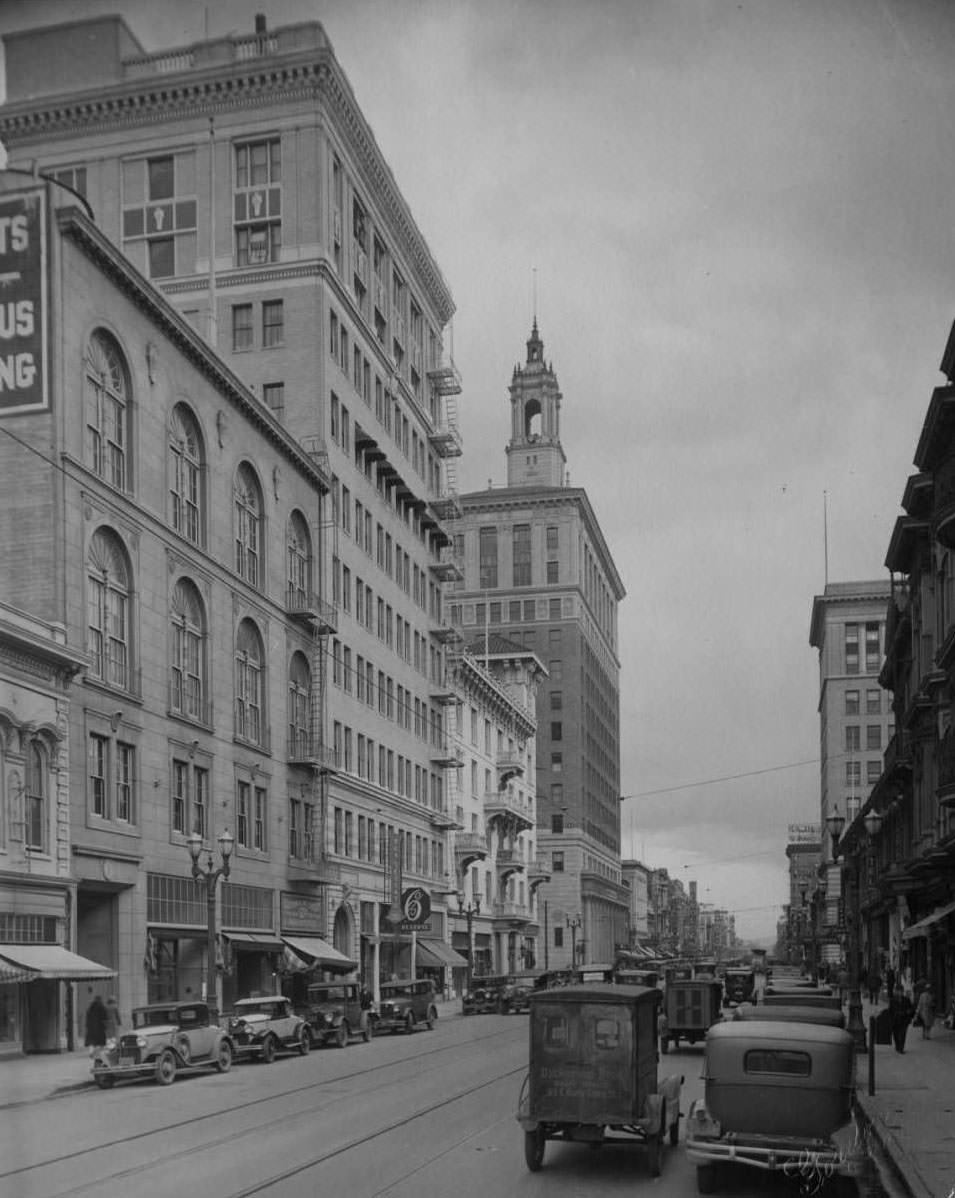
This view looking south from the 100 block on North First street in San Jose shows a section of the business district. From the left are the Knights of Columbus building, Commercial Building, Bank of San Jose and the towering Bank of Italy. The street is crowded with several pedestrians on the sidewalk and cars parked on either side of the street.
#133 Kinghts of Columbus Building, 1928
#134 Administration Building, U.S. Naval Air Station, Moffett Field, 1929
#135 School Buses at Live Oak High School in Morgan Hill, 1924
#136 First Unitarian Church in San Jose, 1920
#137 San Jose High School float, 1926
#138 Looking east from Market to San Carlos, 1928
#139 Holiday shoppers, 1924
#140 Opening of the California Theatre, 1927
#141 Louise A. F. Kelley House, 1929
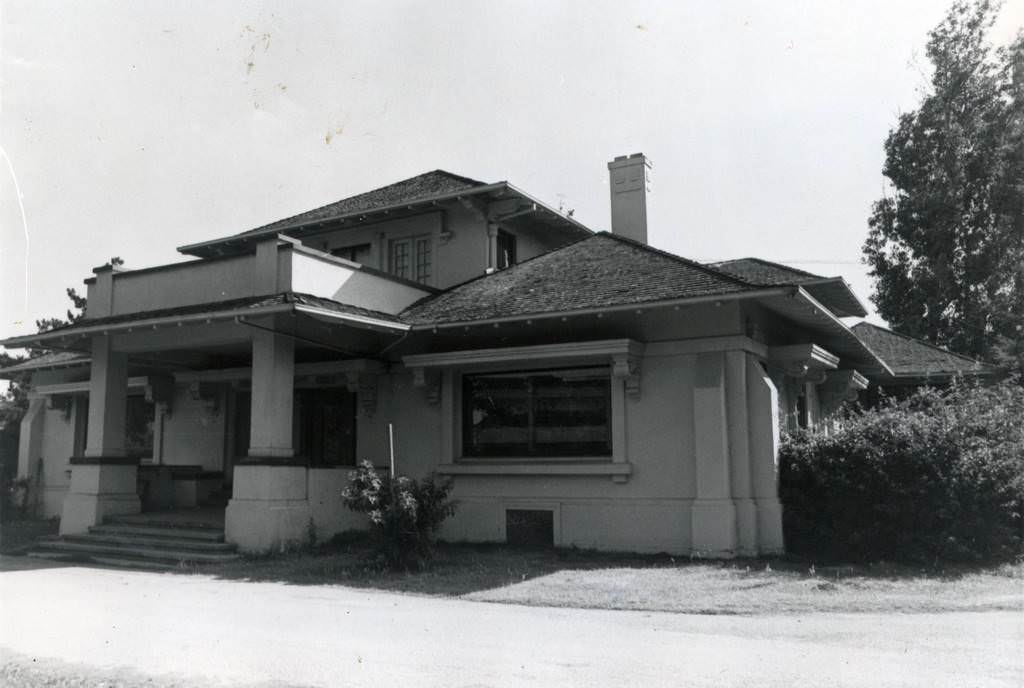
This residence was designed by Charles Greene for Louise A. F. Kelley, built on land originally owned by her father Judge Lawrence Archer, prominent San Jose attorney, mayor, state legislator, judge and fruit grower. Louise called the estate "Ar-Kel Villa" and it remained part of Kelley Park until it sustained severe fire damage in 2012.
#142 Bank of San Jose, 1922
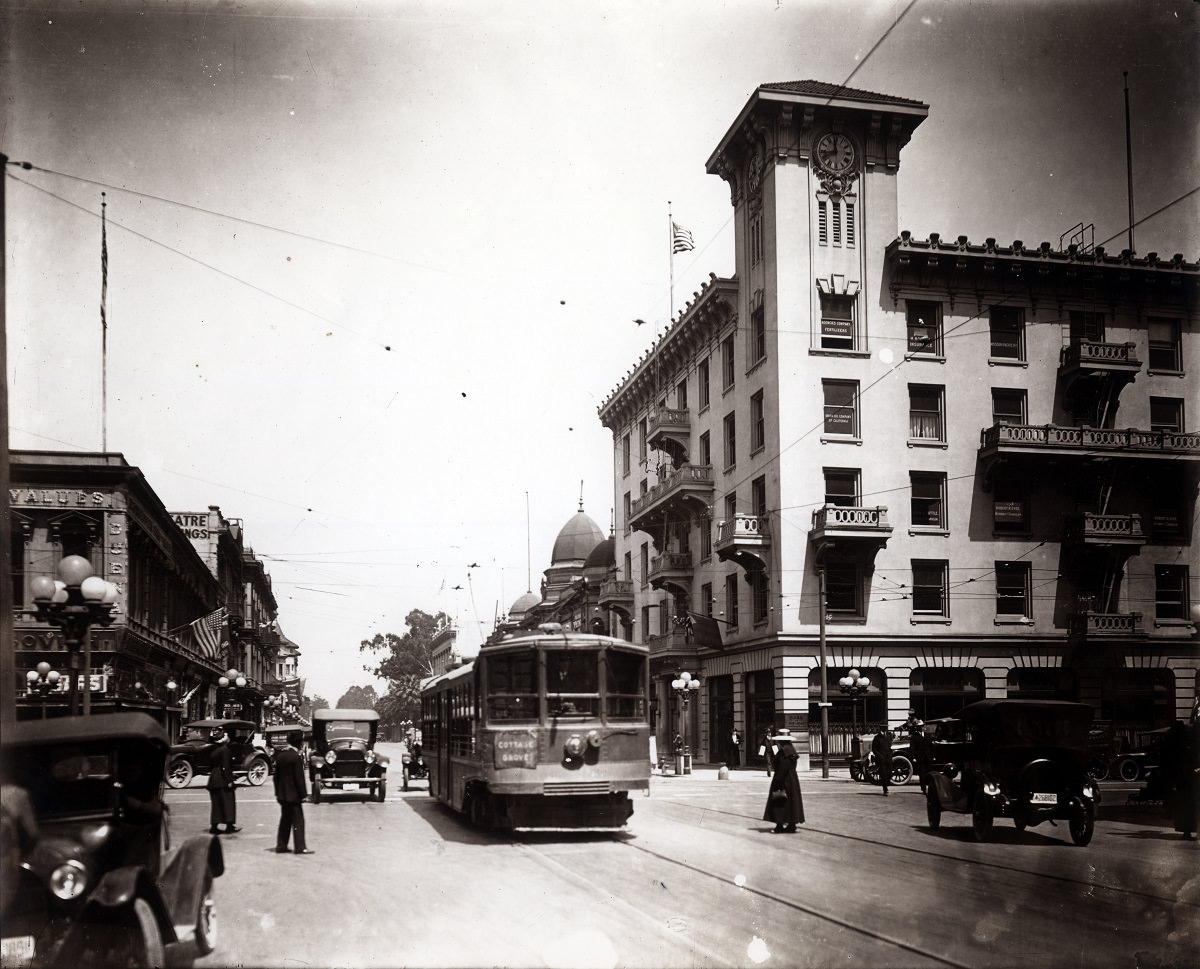
Electric streetcar traveling on First and Santa Clara Streets. The Beans Building on the right was home of the Bank of San José, built after the old structure was damaged beyond repair in the 1906 earthquake. It was acquired by the Bank of Italy in 1927, and demolished in 1947.
#143 South First Street at Fernando, 1927
#144 Plaza along the northeast side, 1920
#145 Holy City, San Jose, 1929
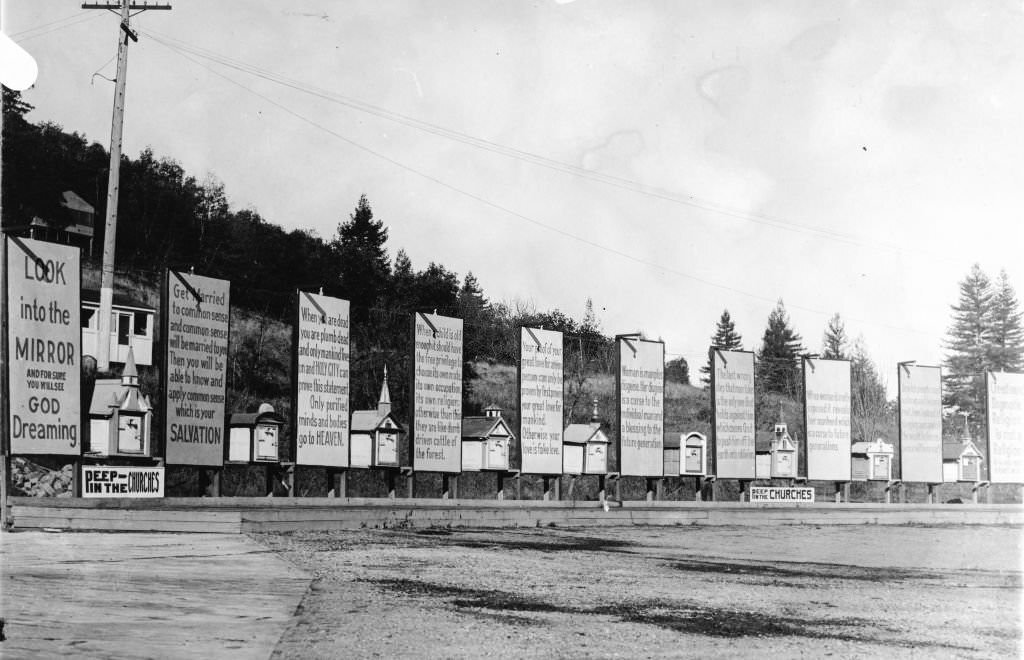
From left, the town's restaurant, movie house and printing press. Holy City was founded as a religious colony by William E. Riker - a man for whom scandal followed. It survived as a tourist attraction for motorists driving to San Jose the Old Santa Cruz Highway before the construction of State Route 17.


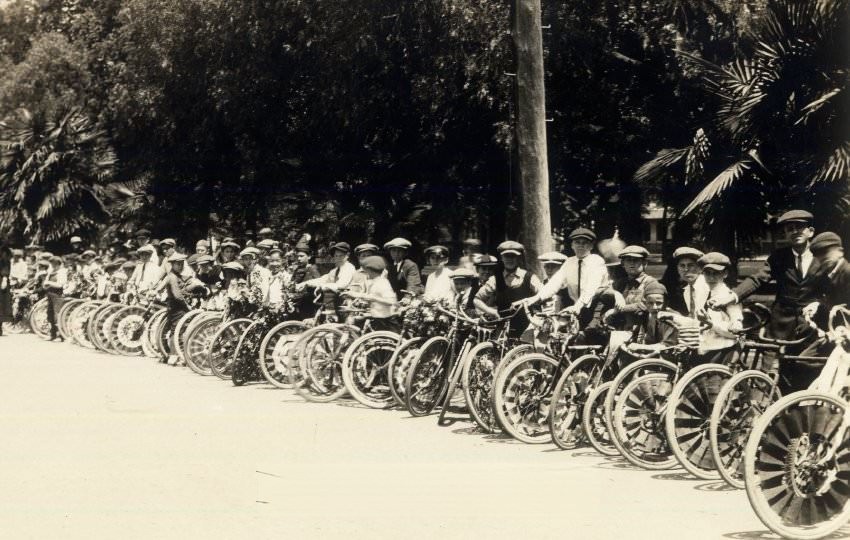
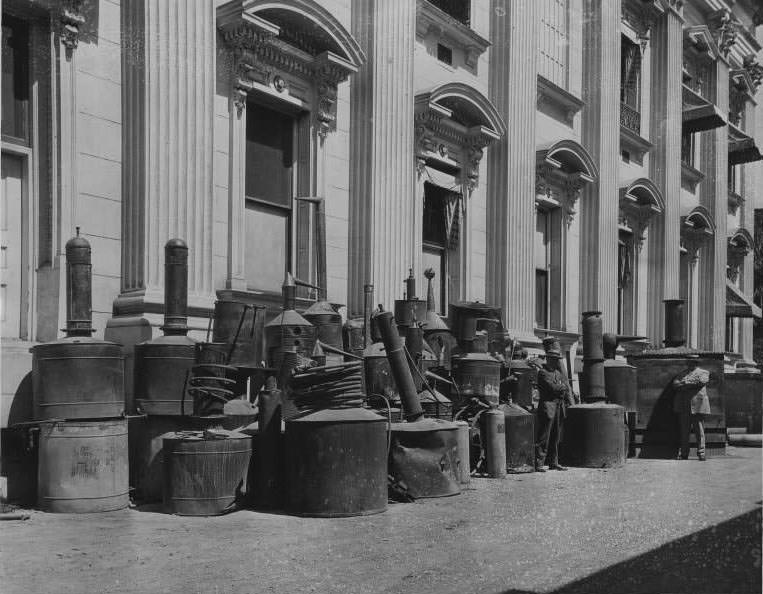
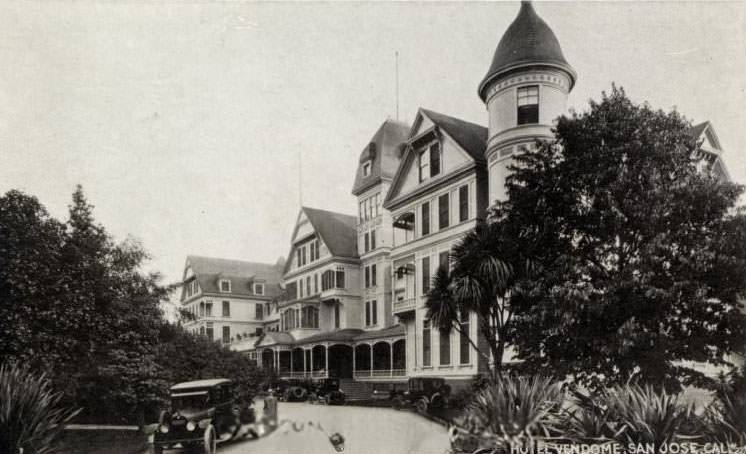

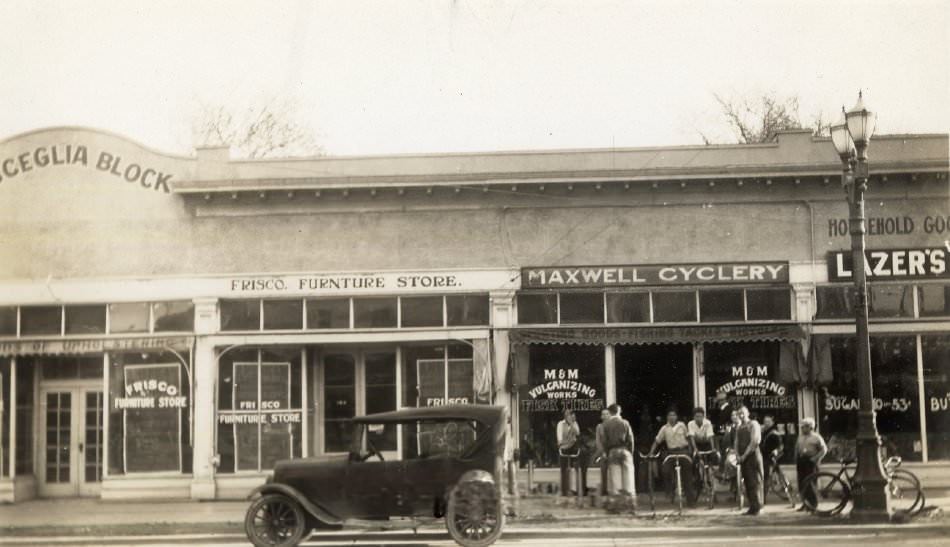
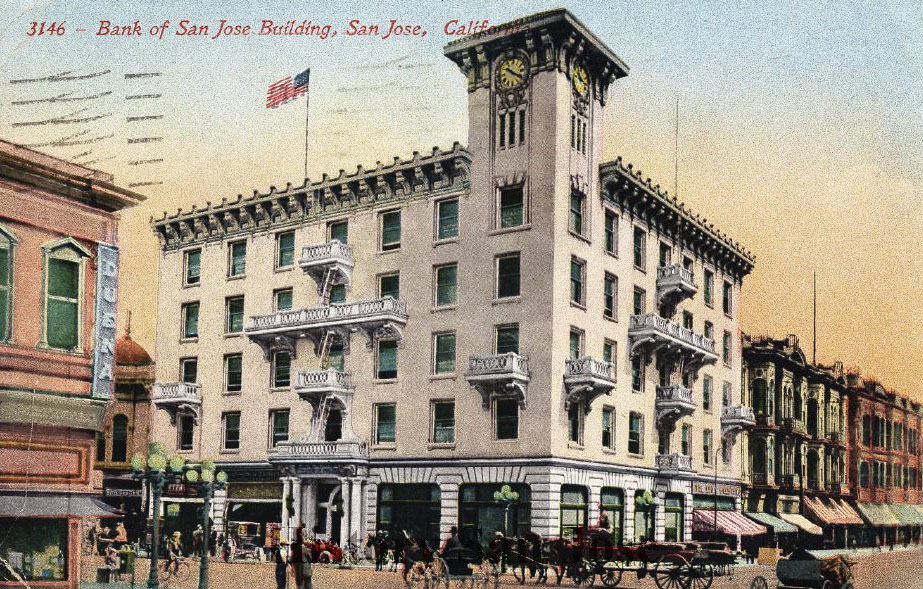
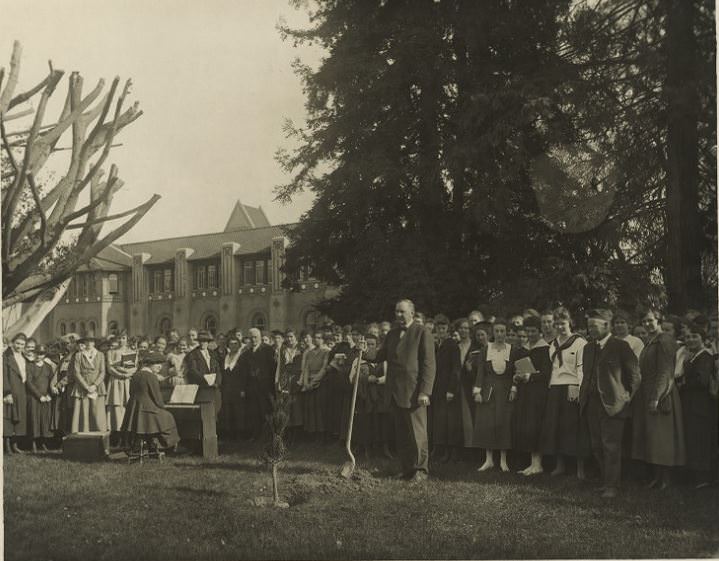
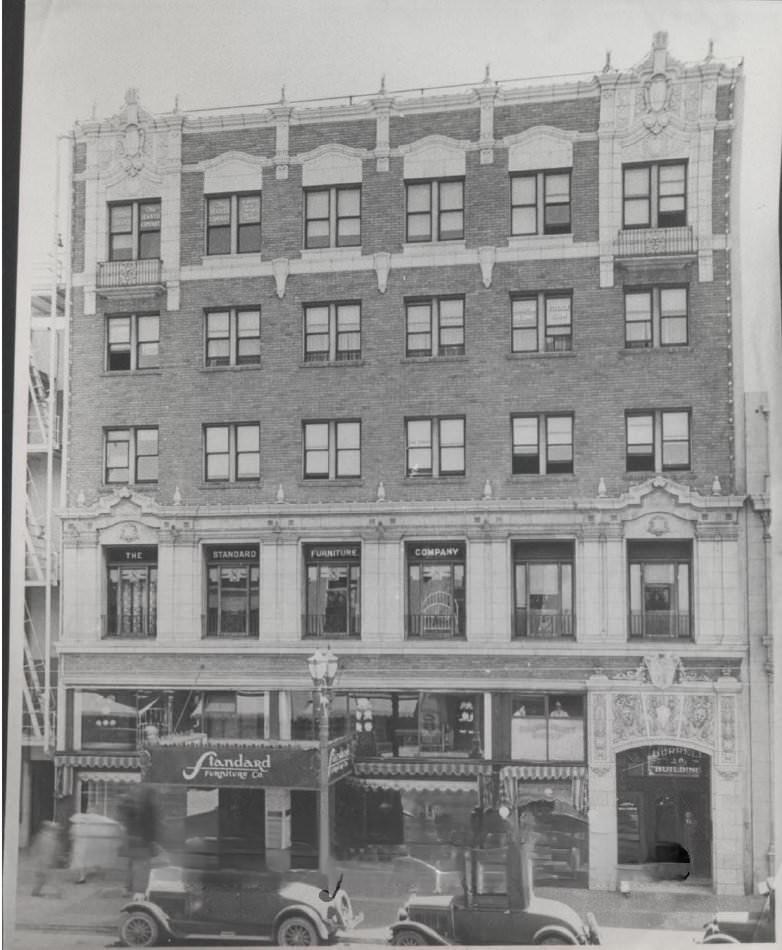
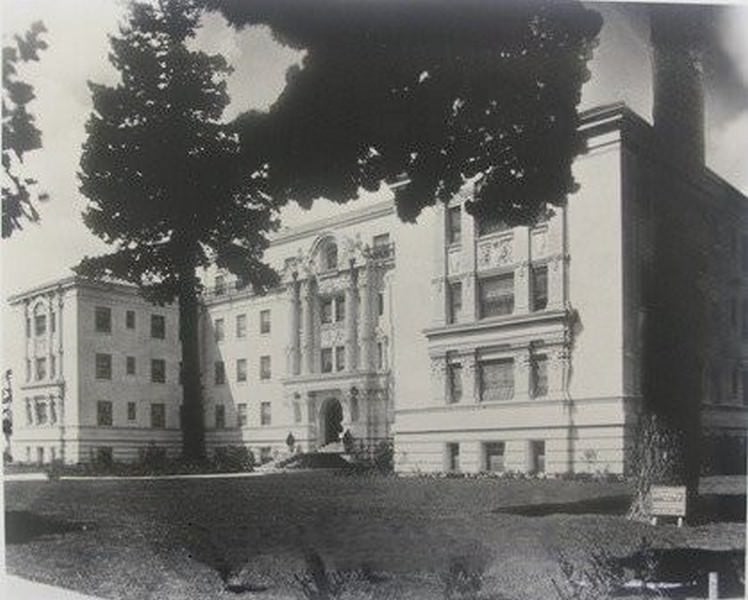
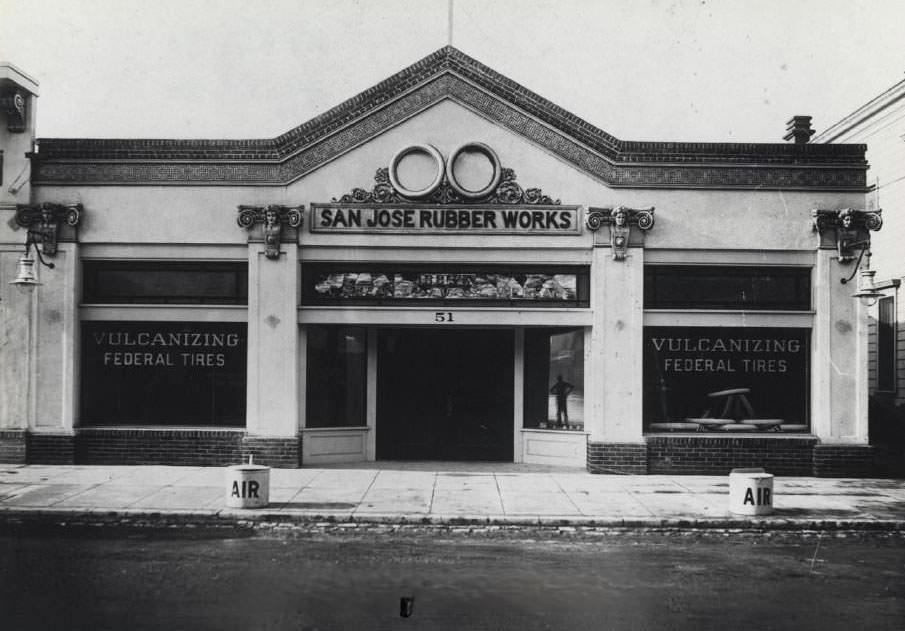
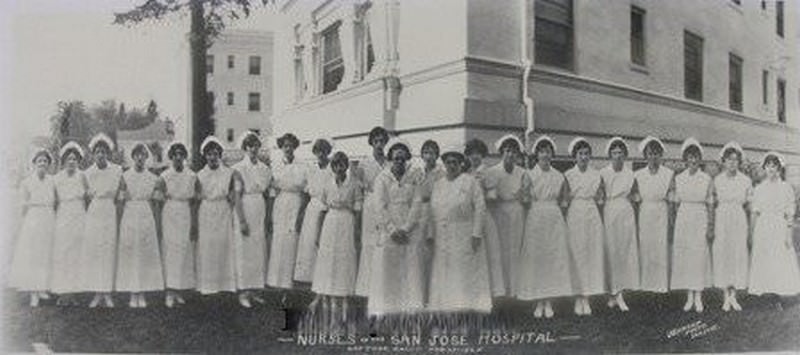
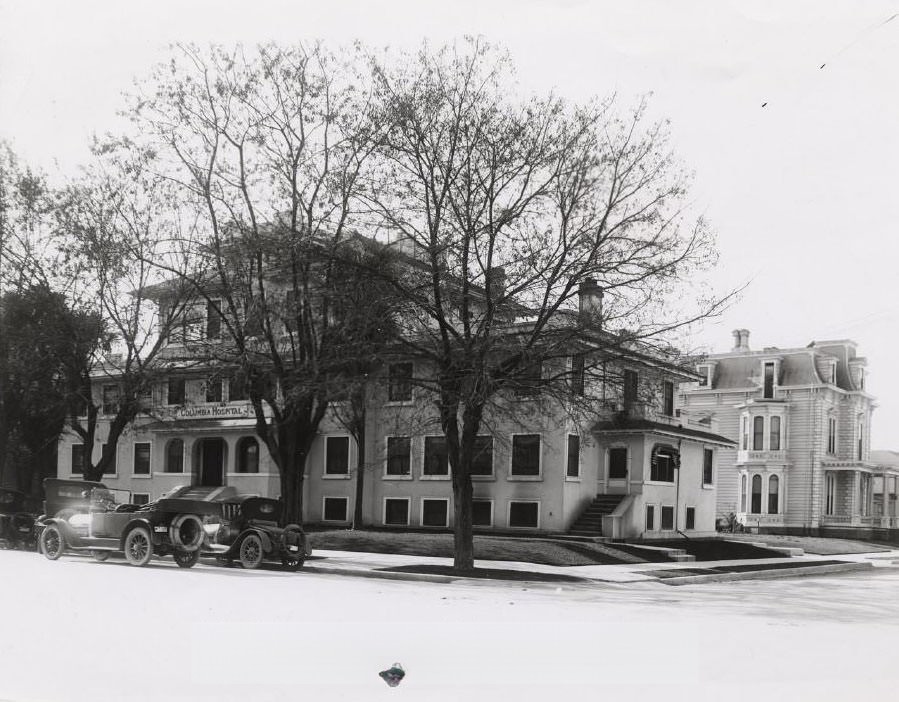
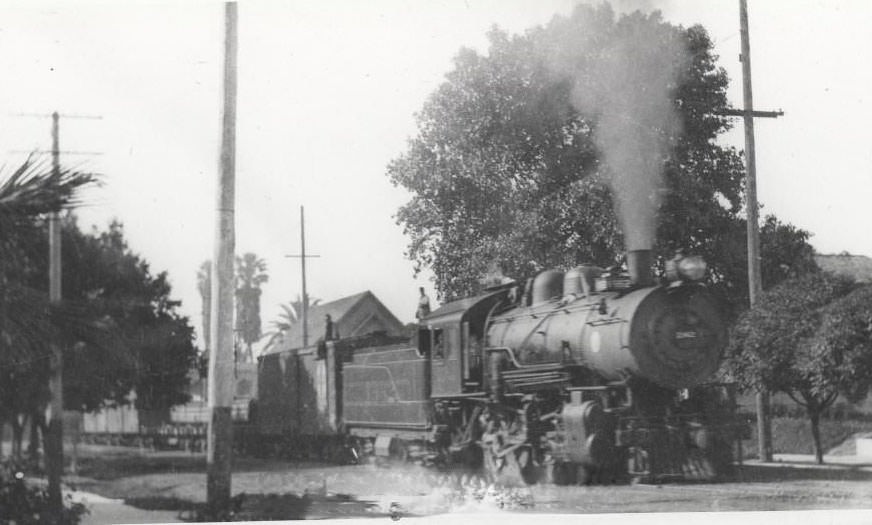
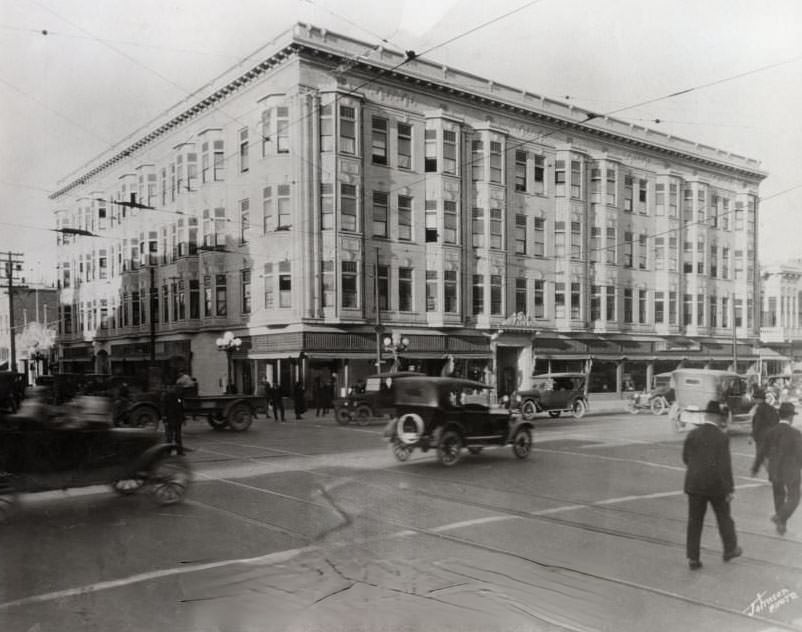
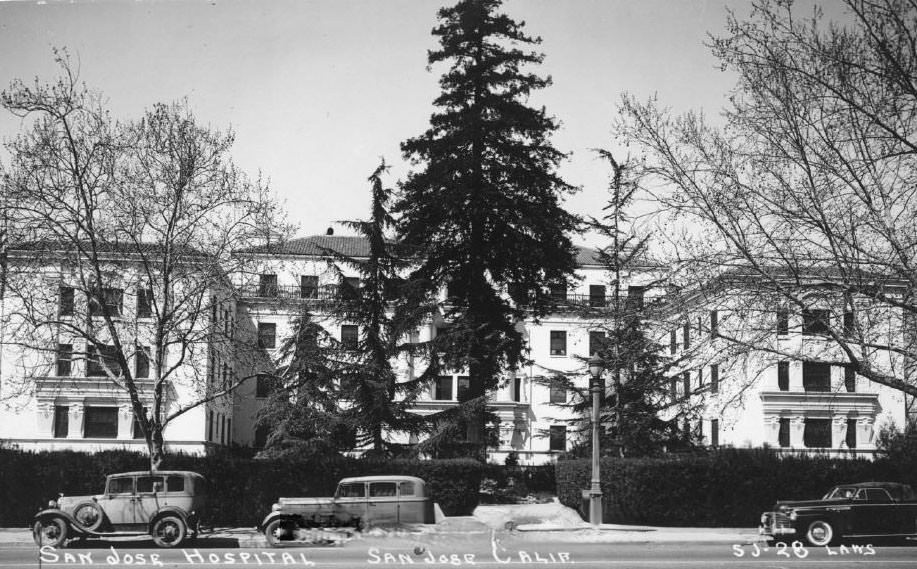
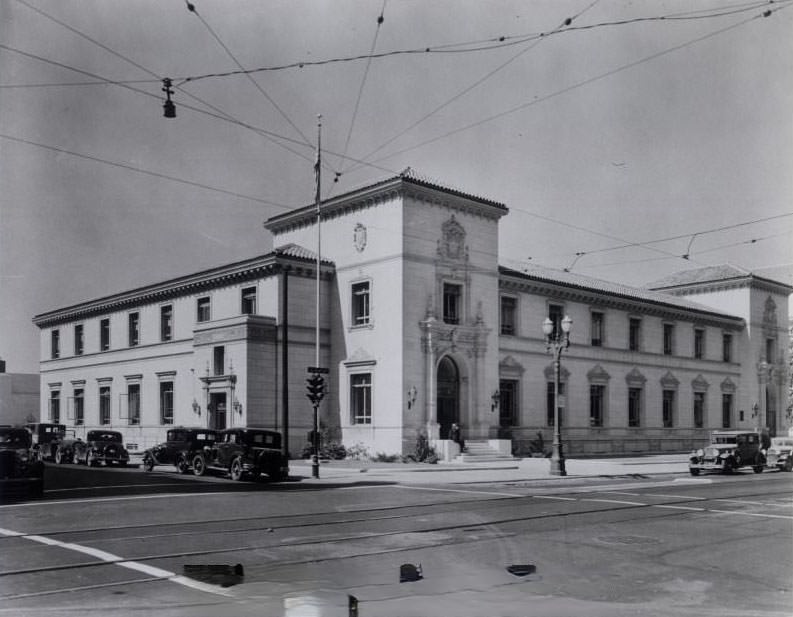
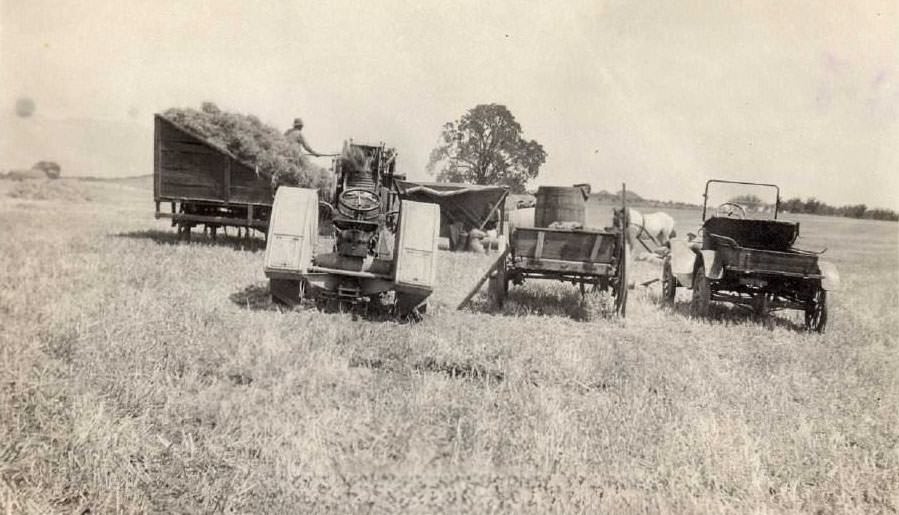
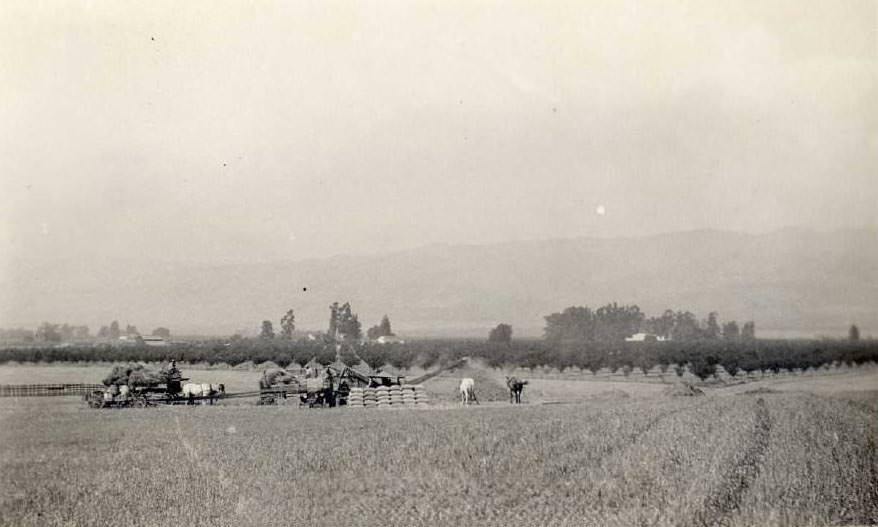
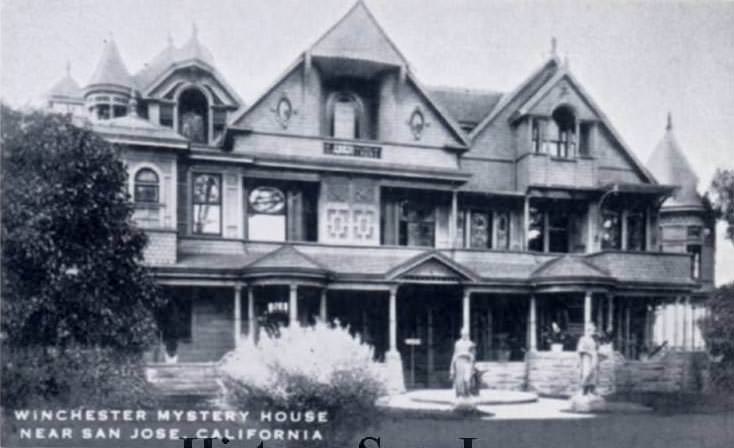
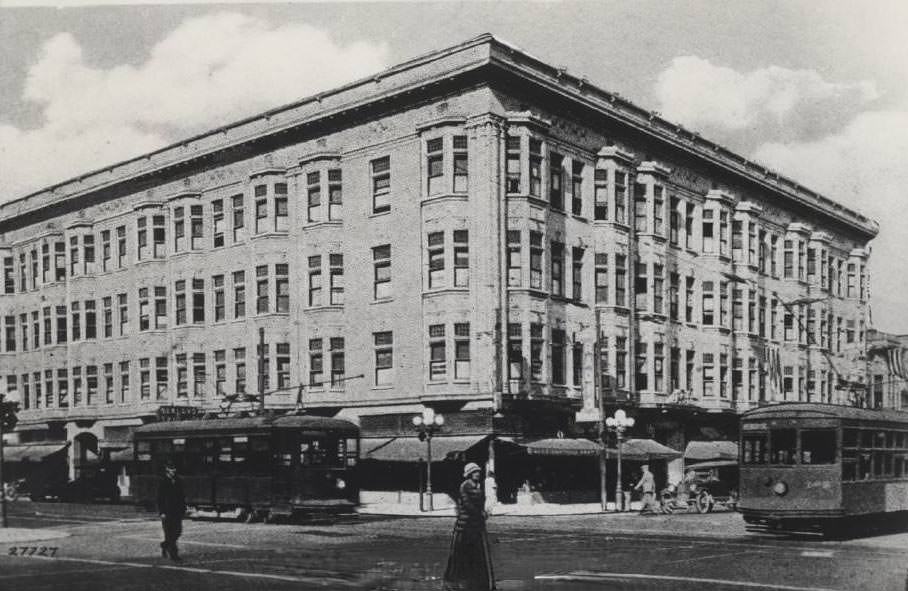
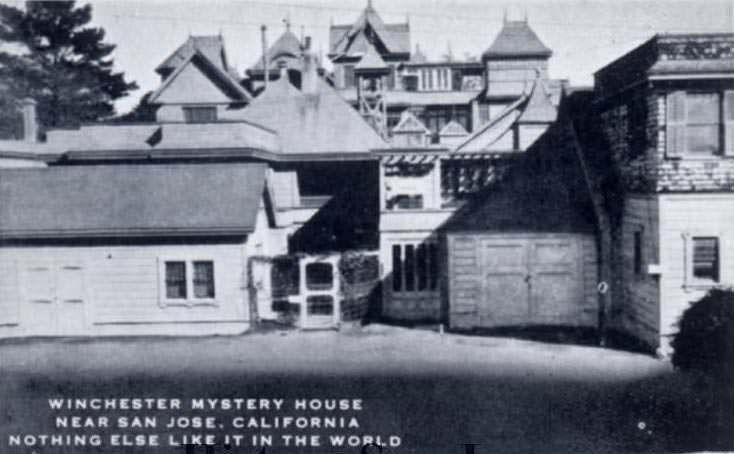
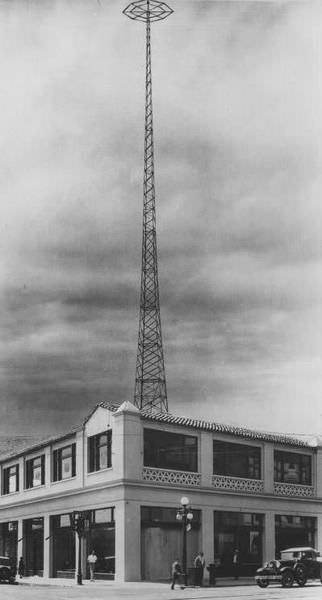
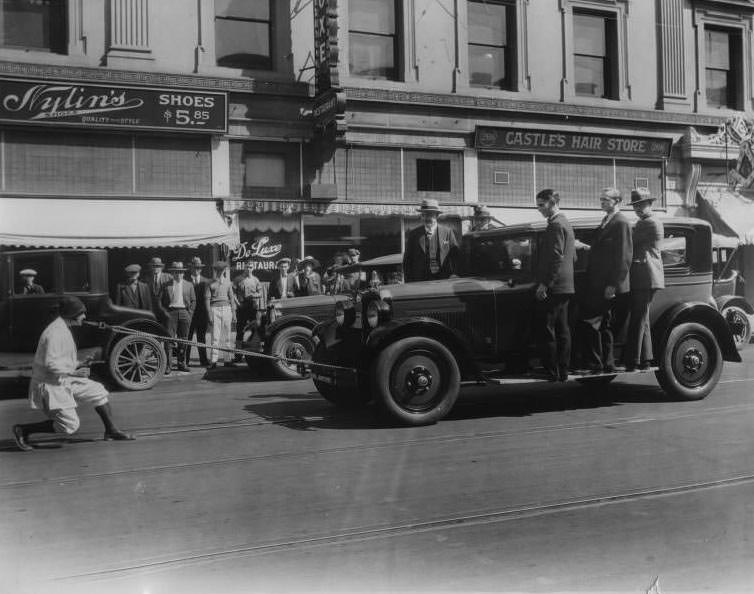
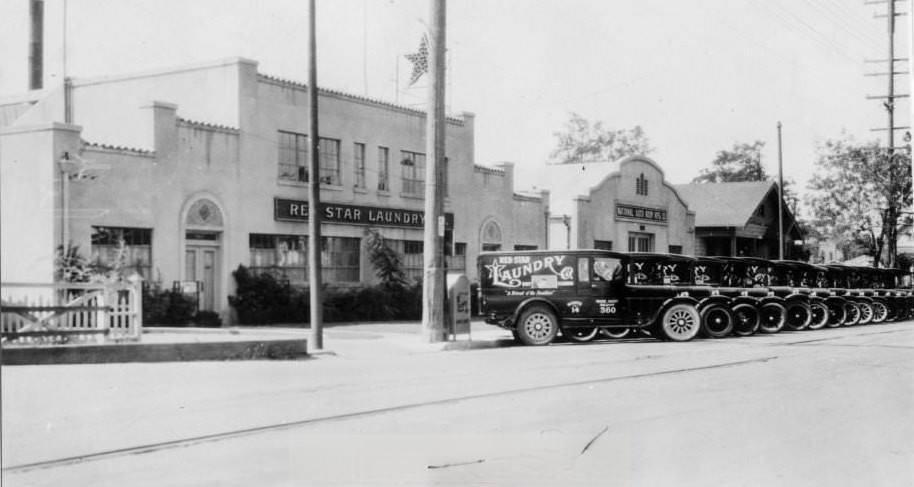
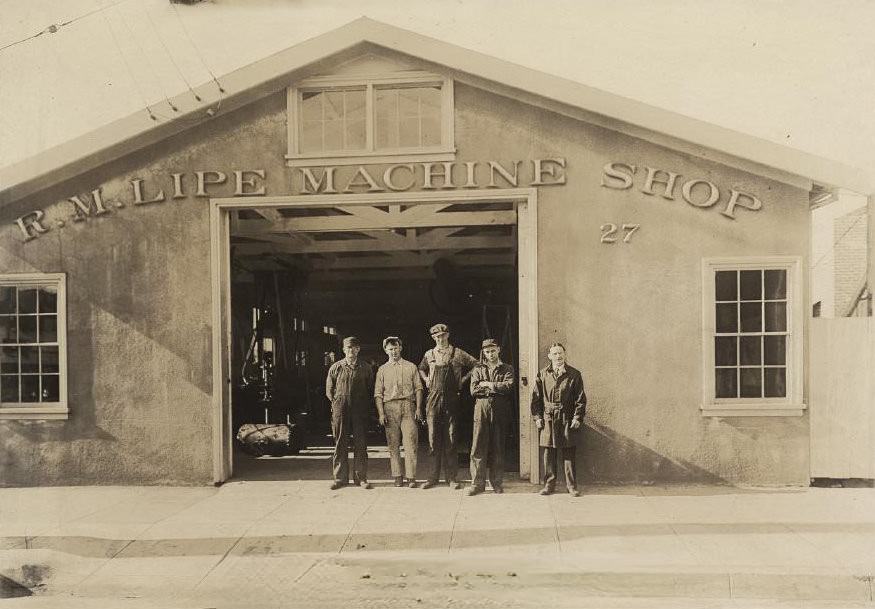
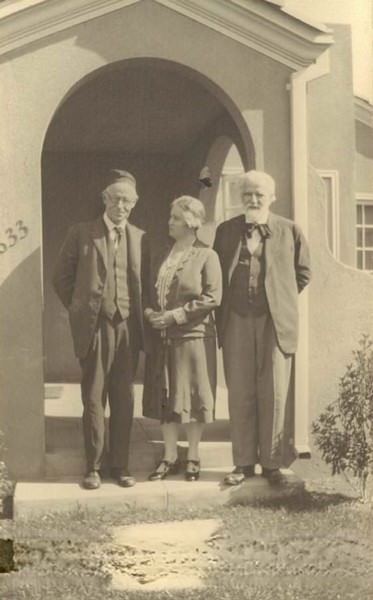
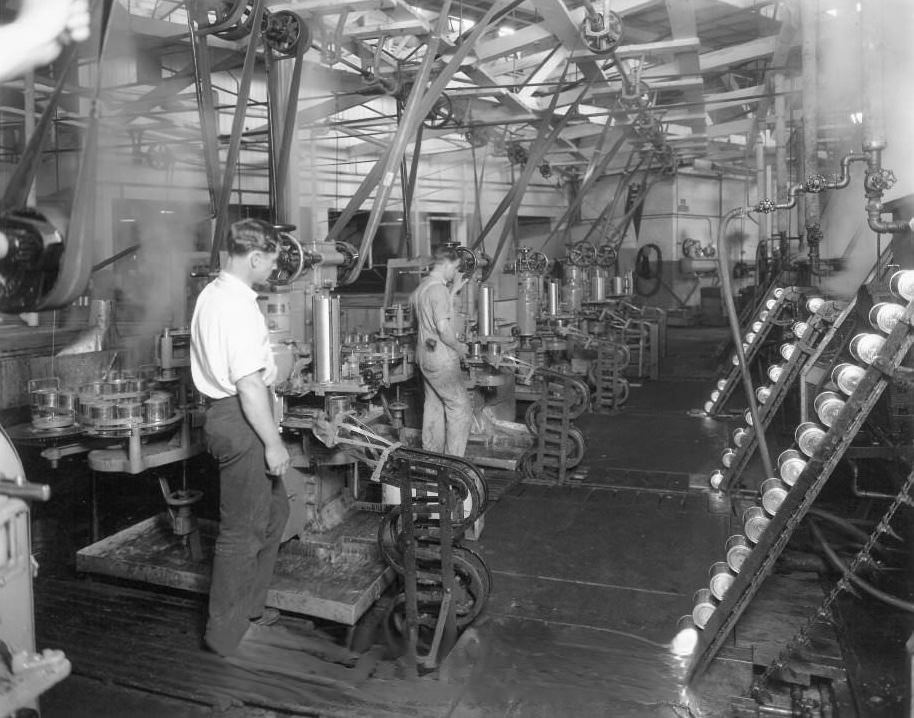
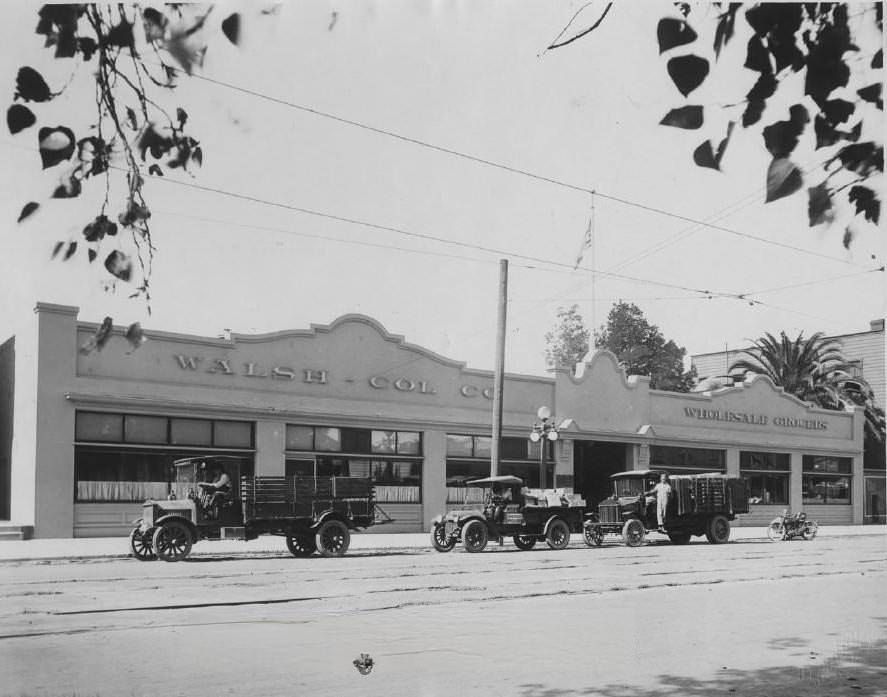
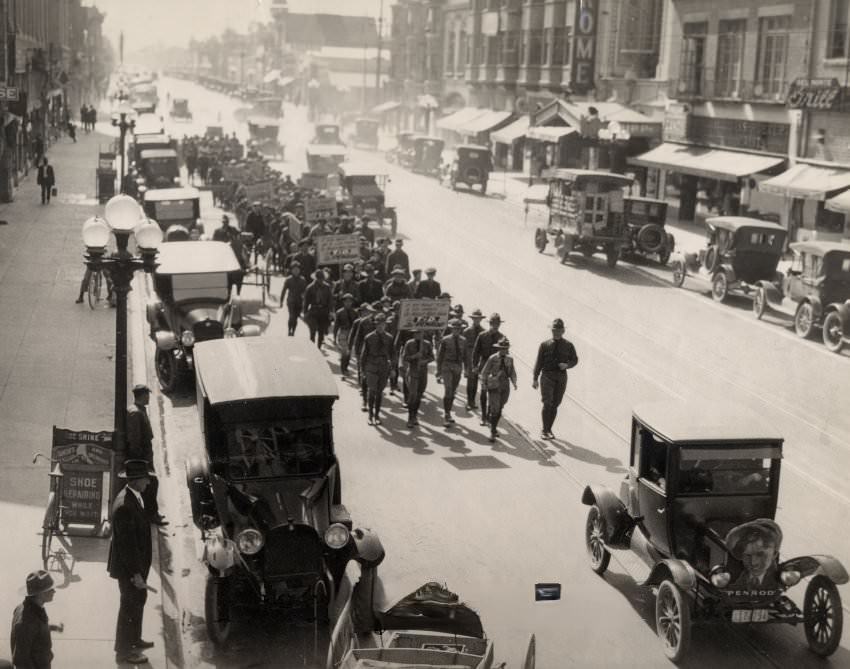
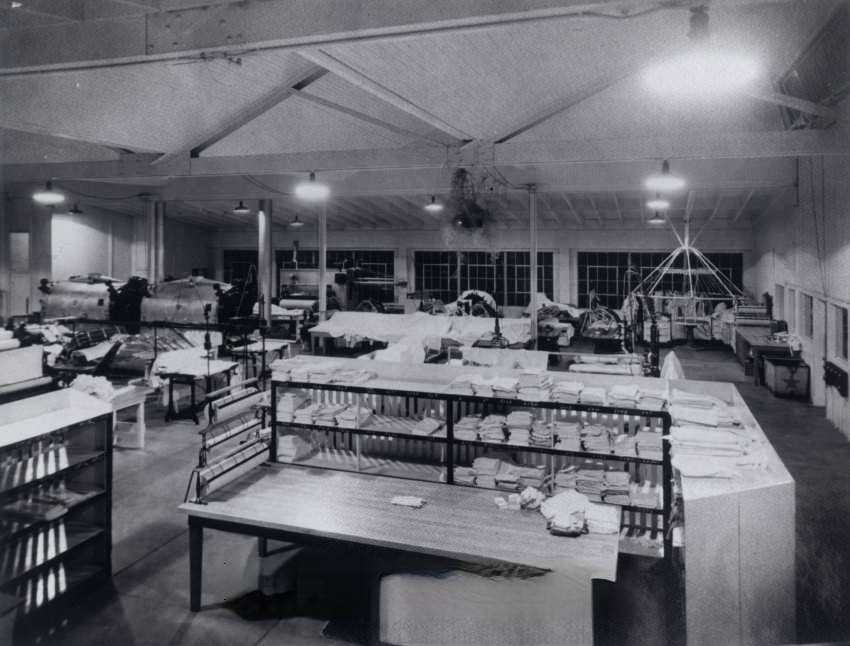
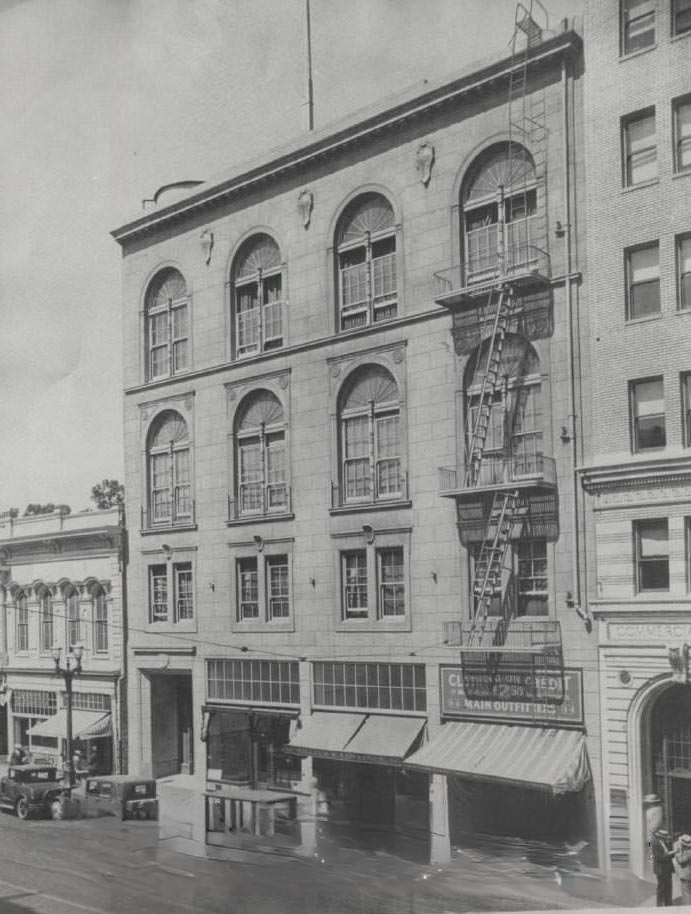
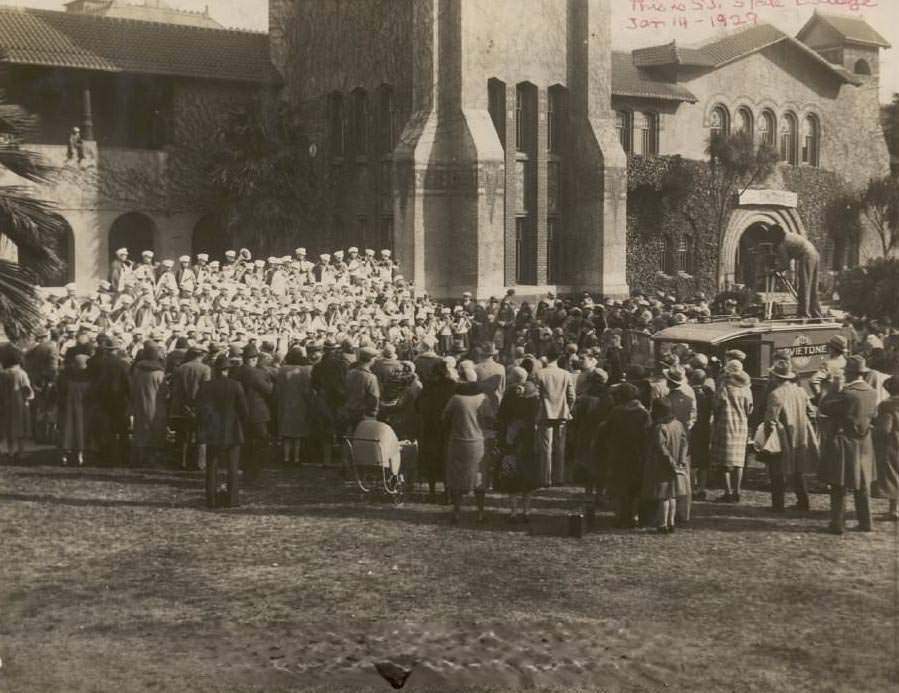
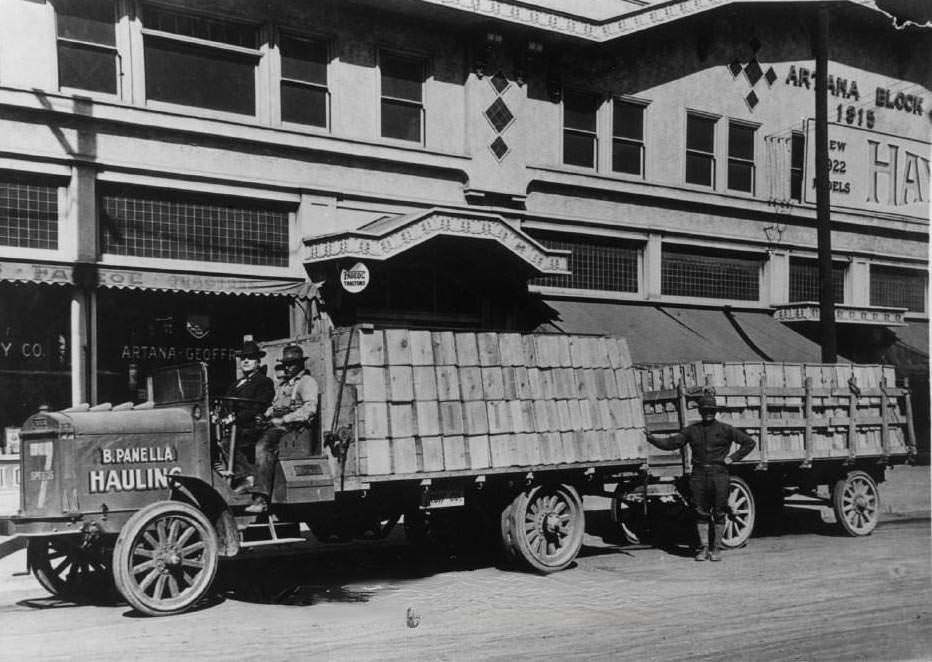
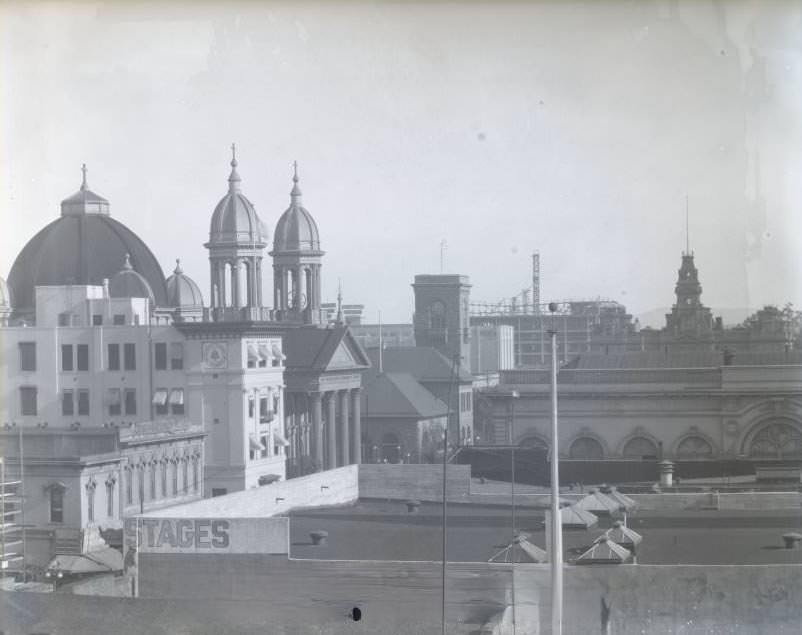
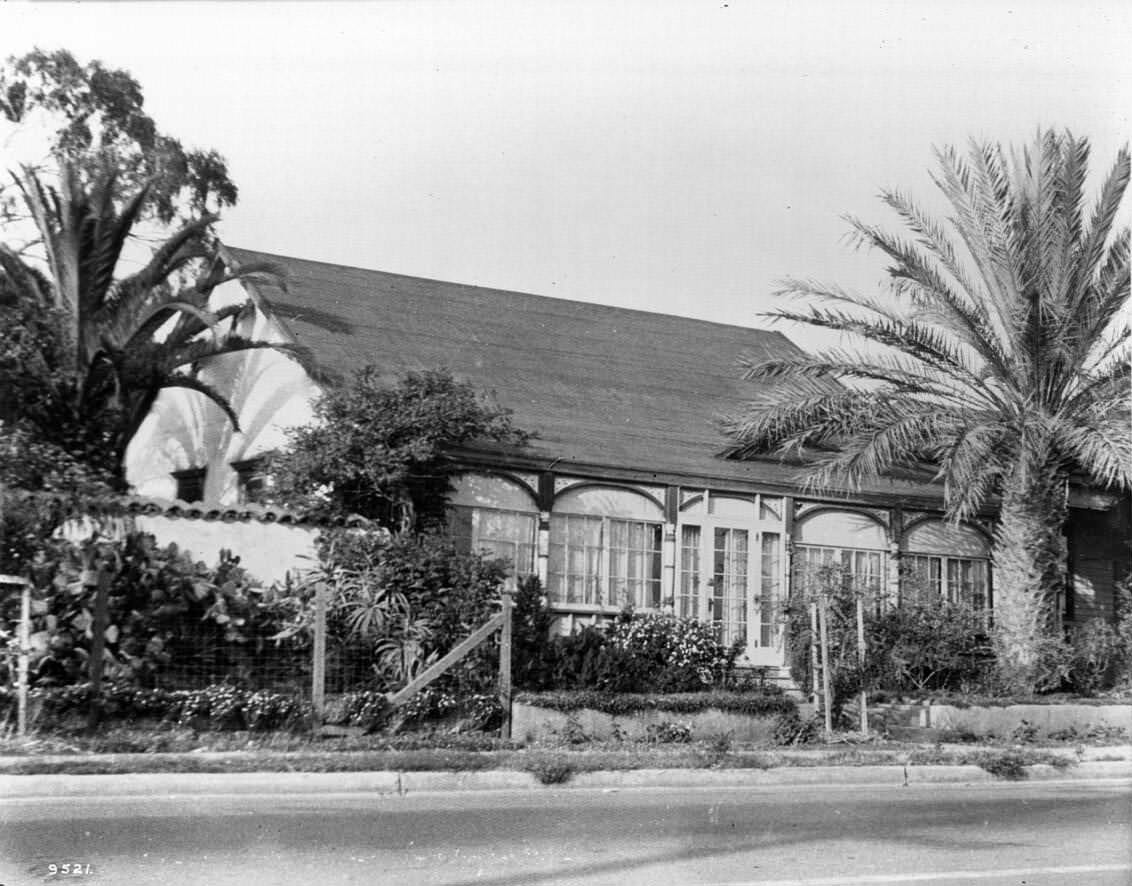
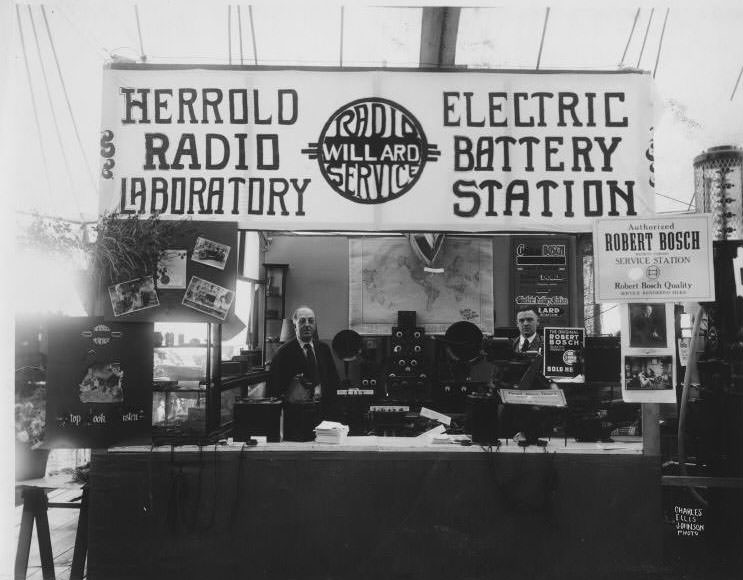
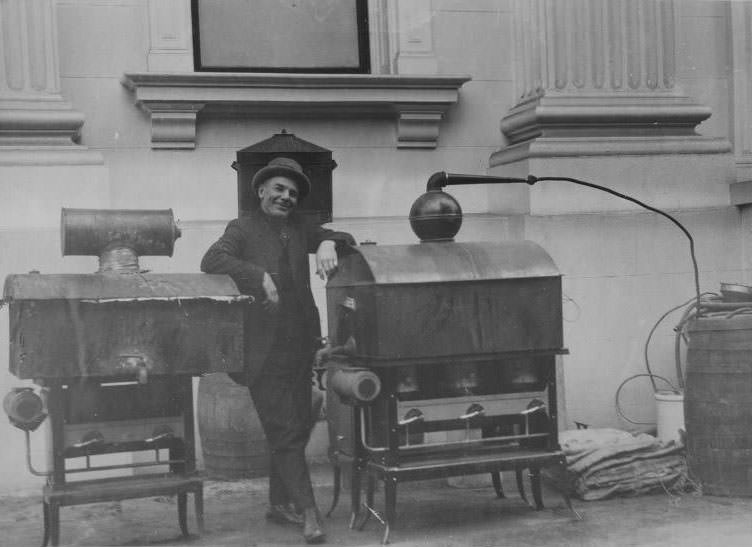
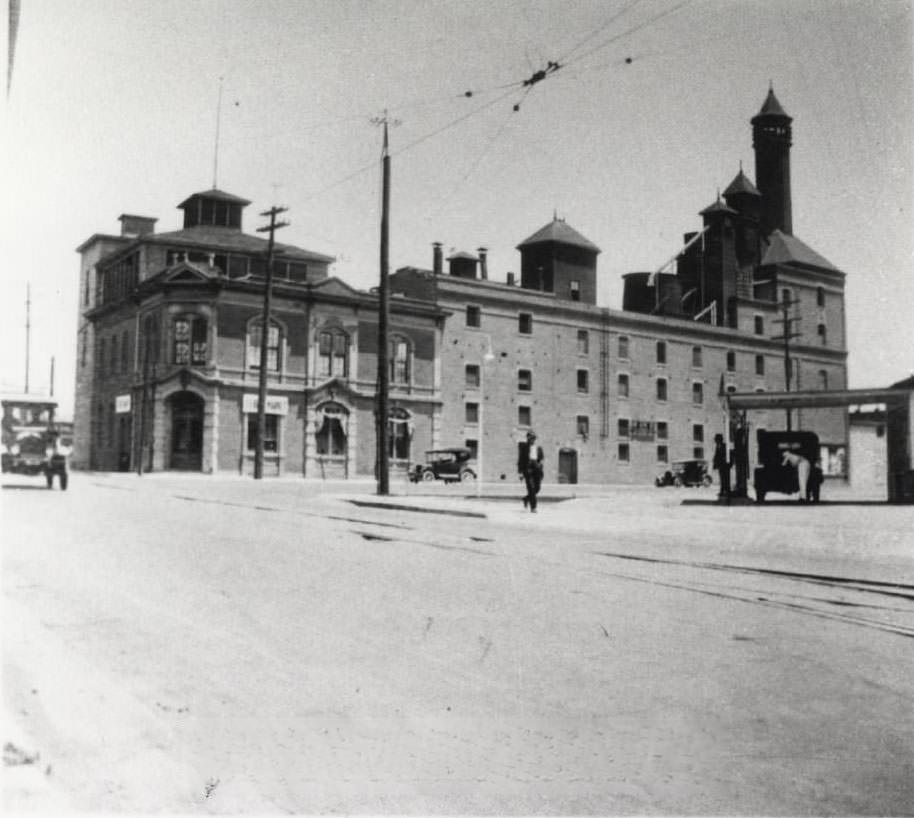
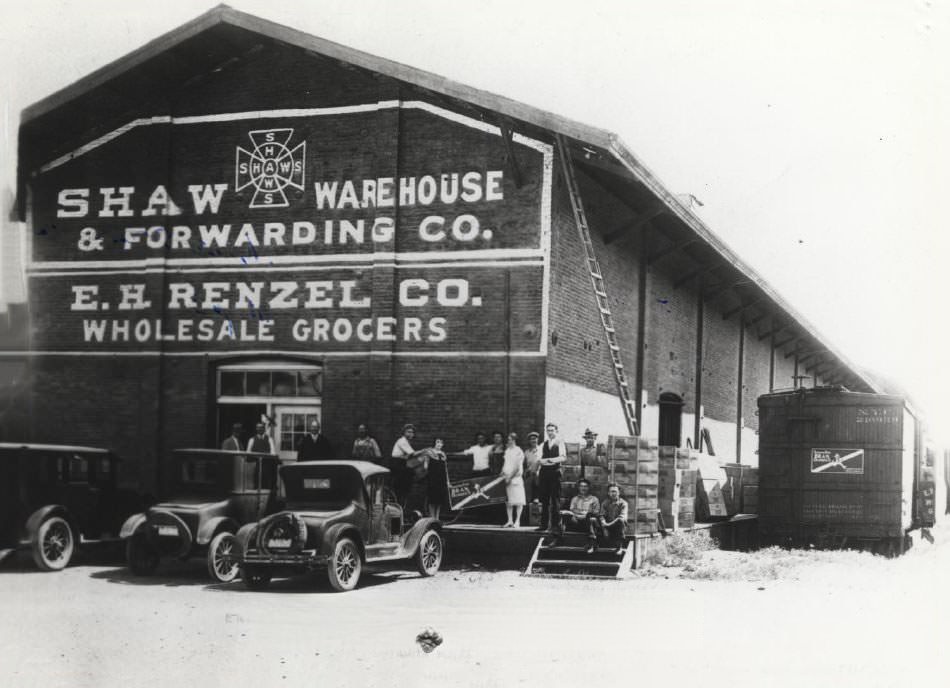
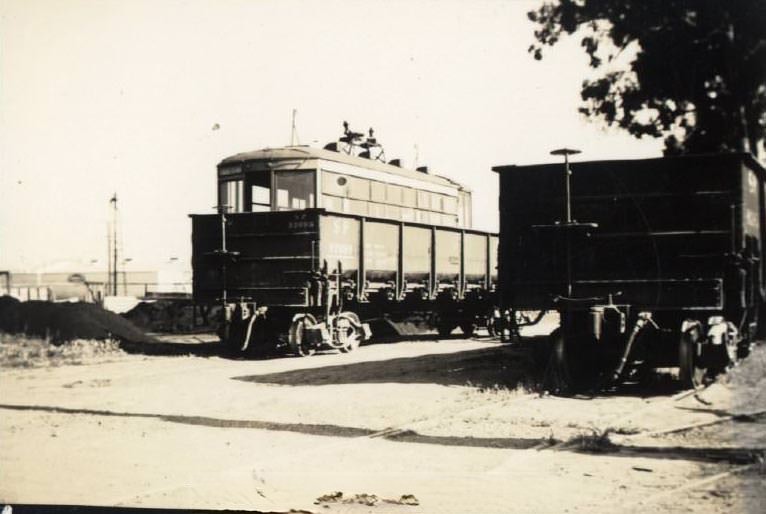
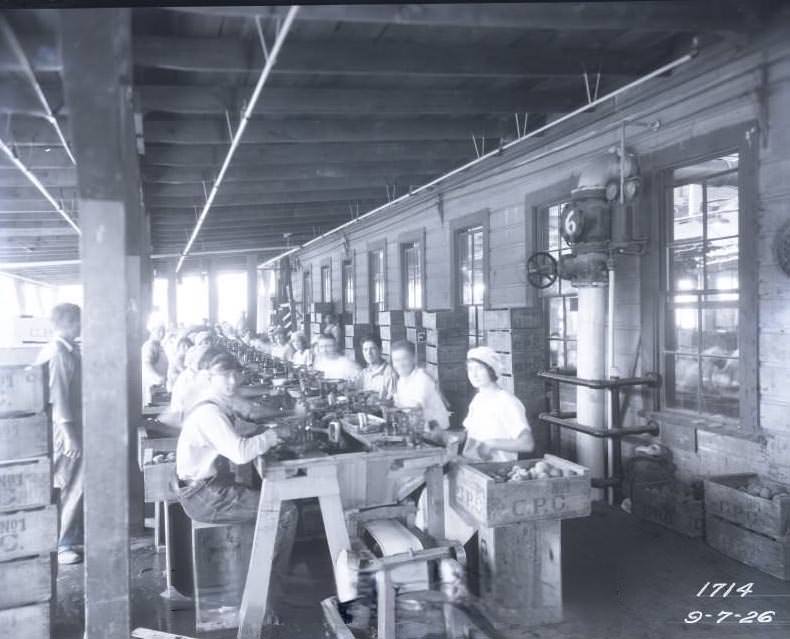
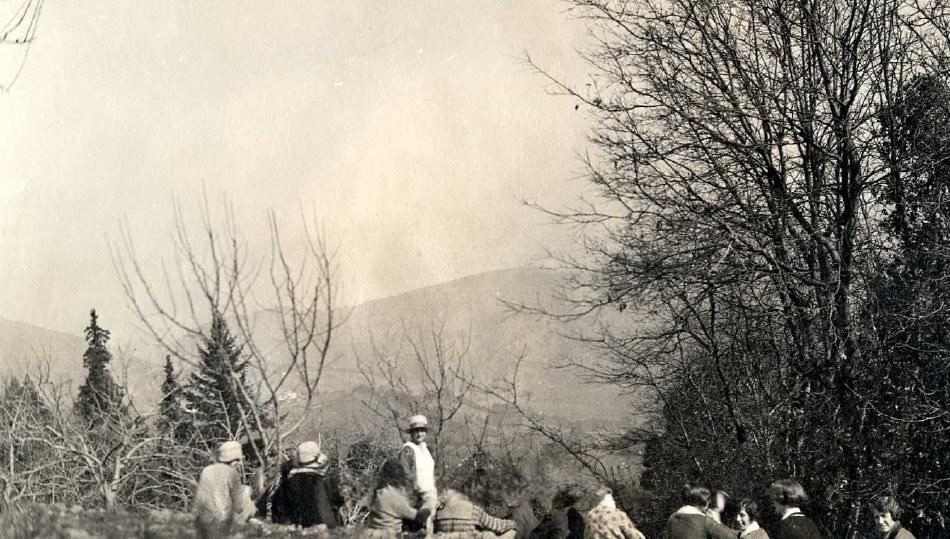
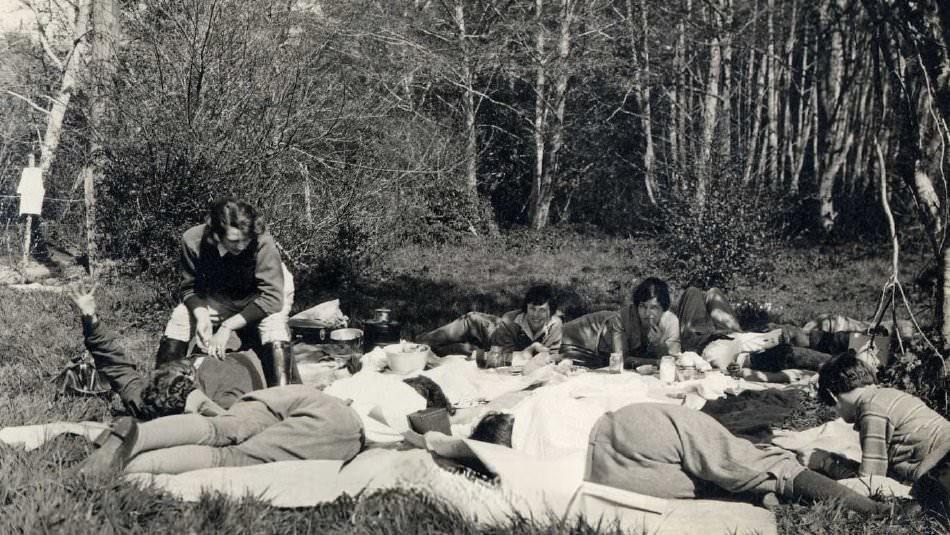
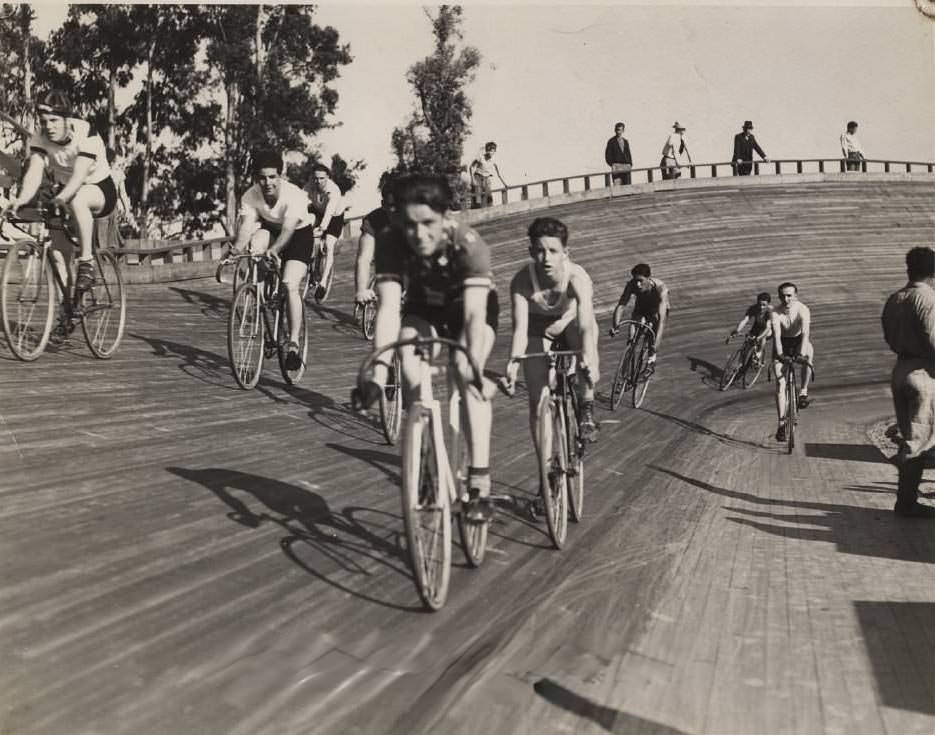
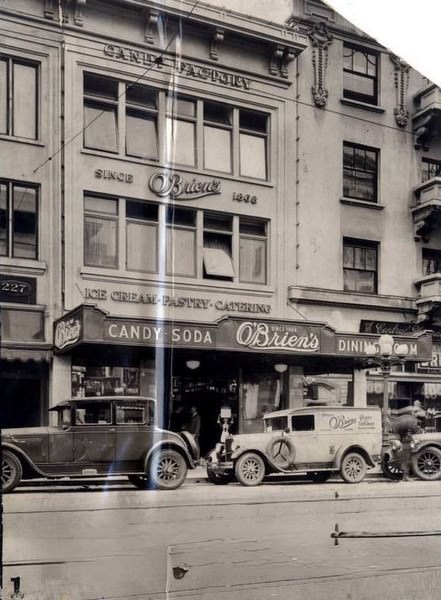
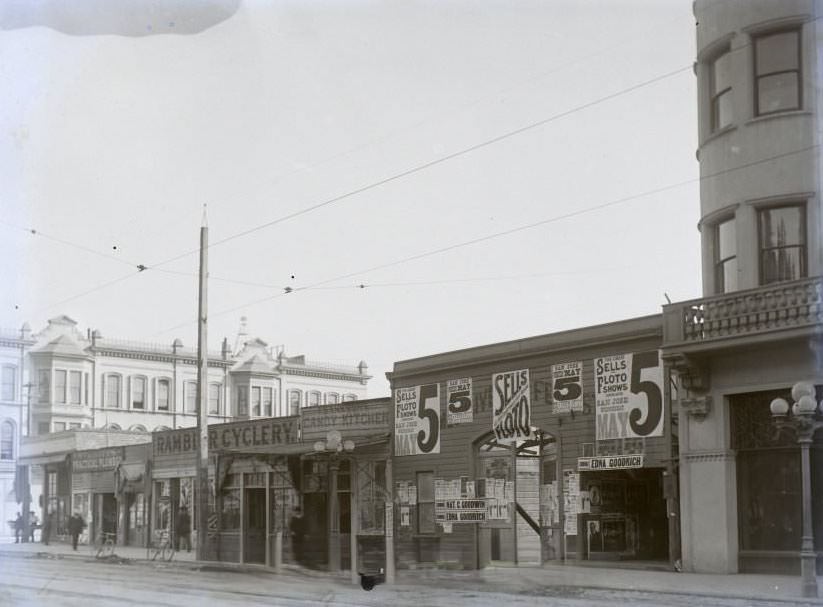
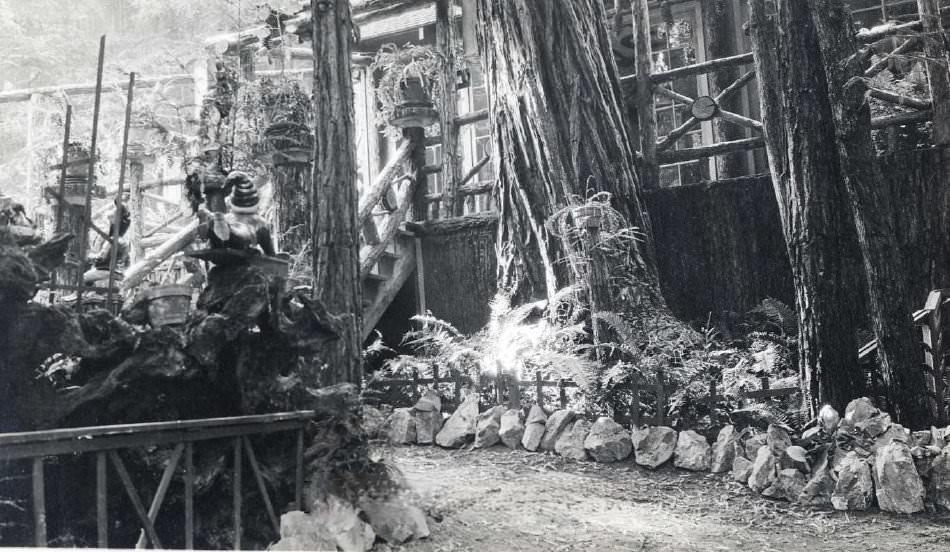
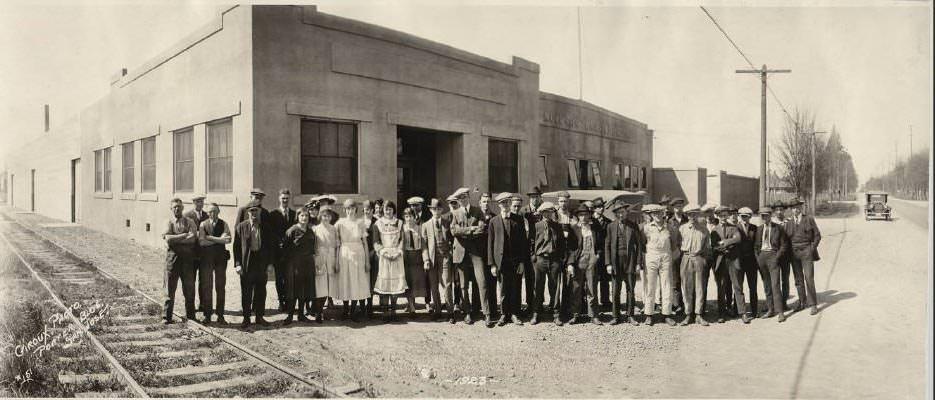
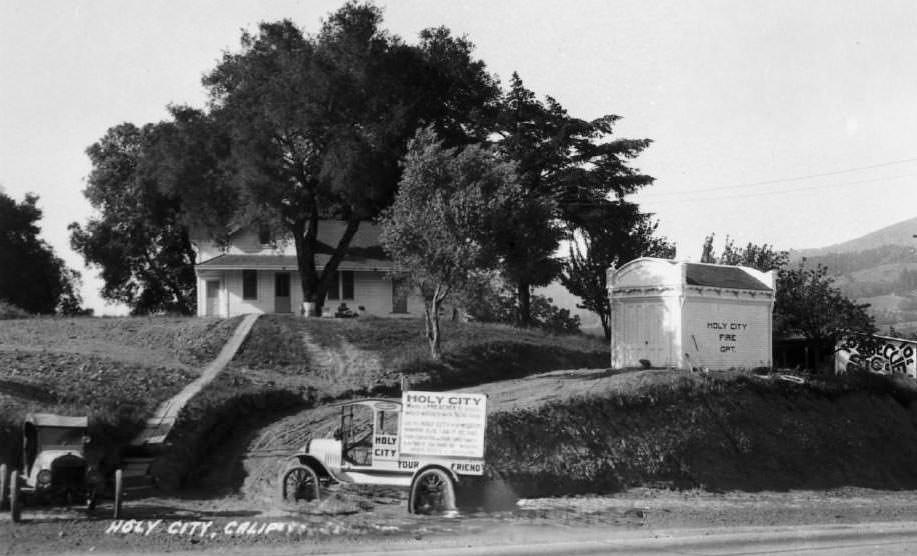
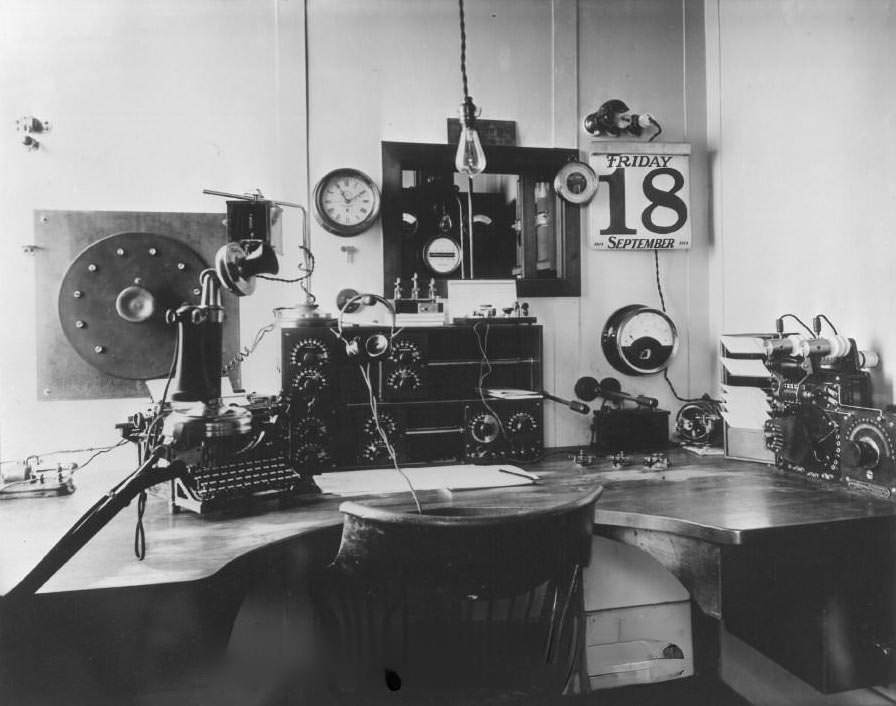
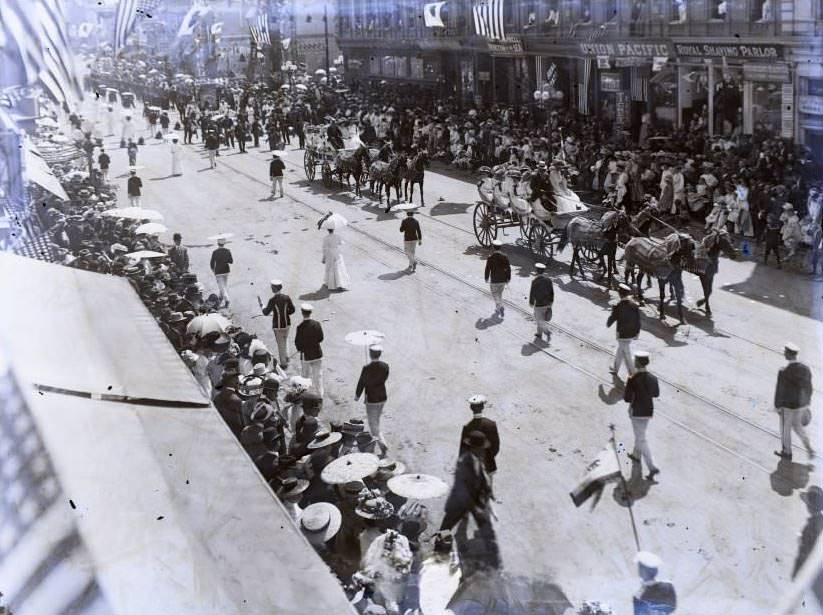
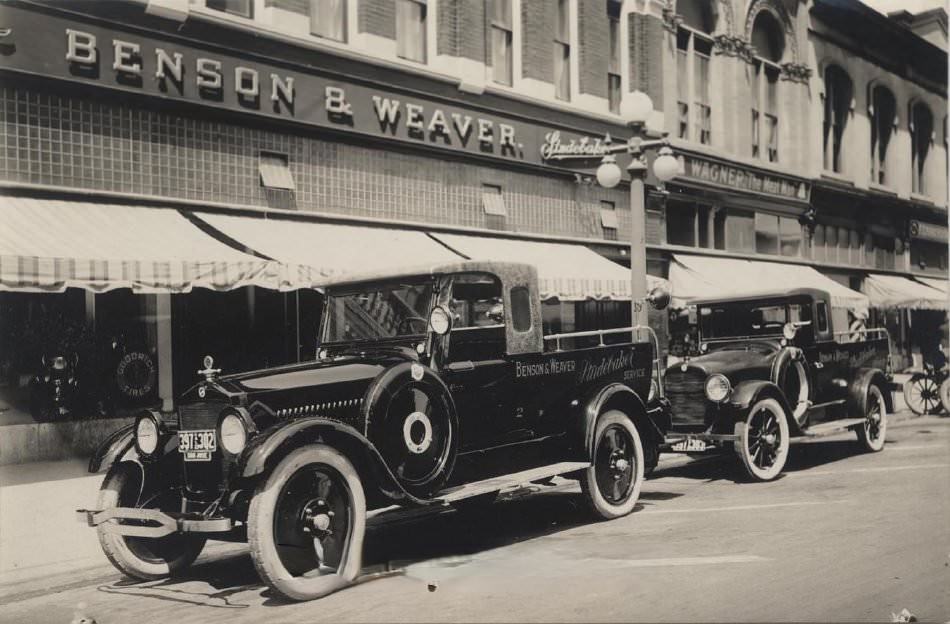
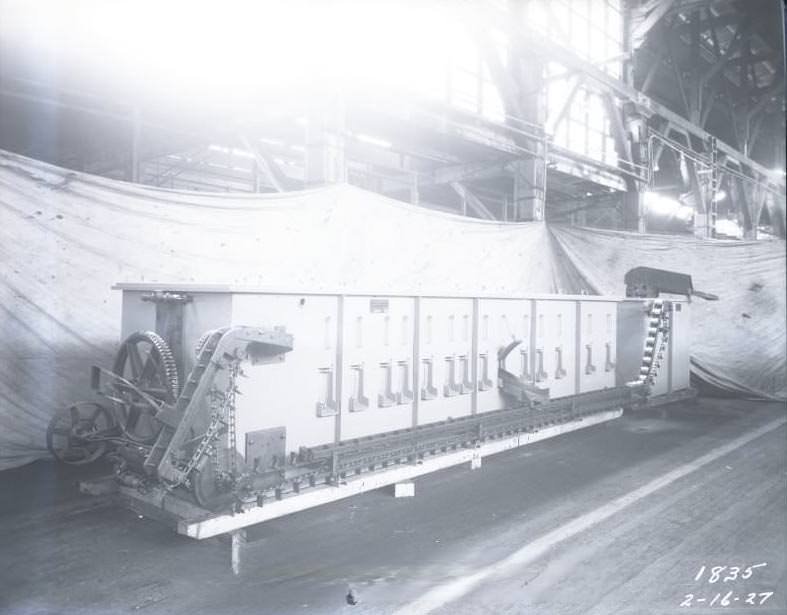
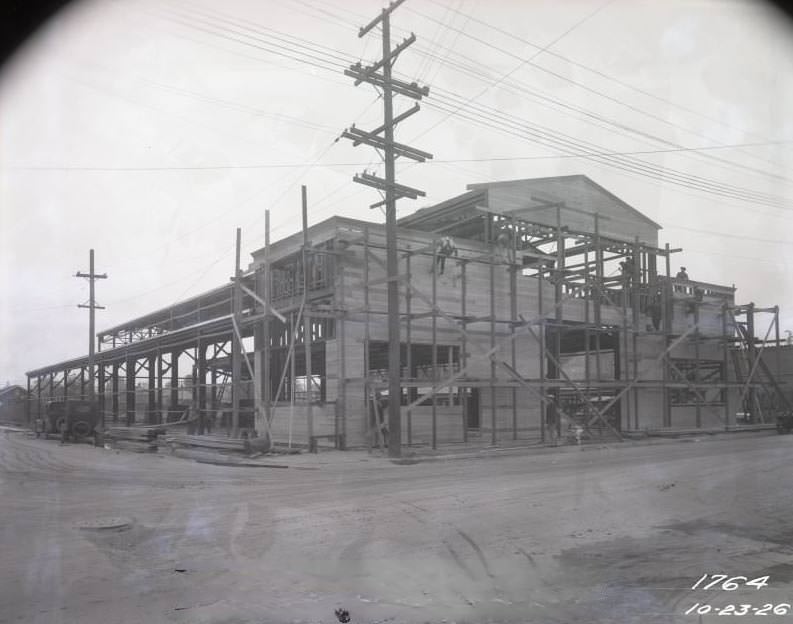
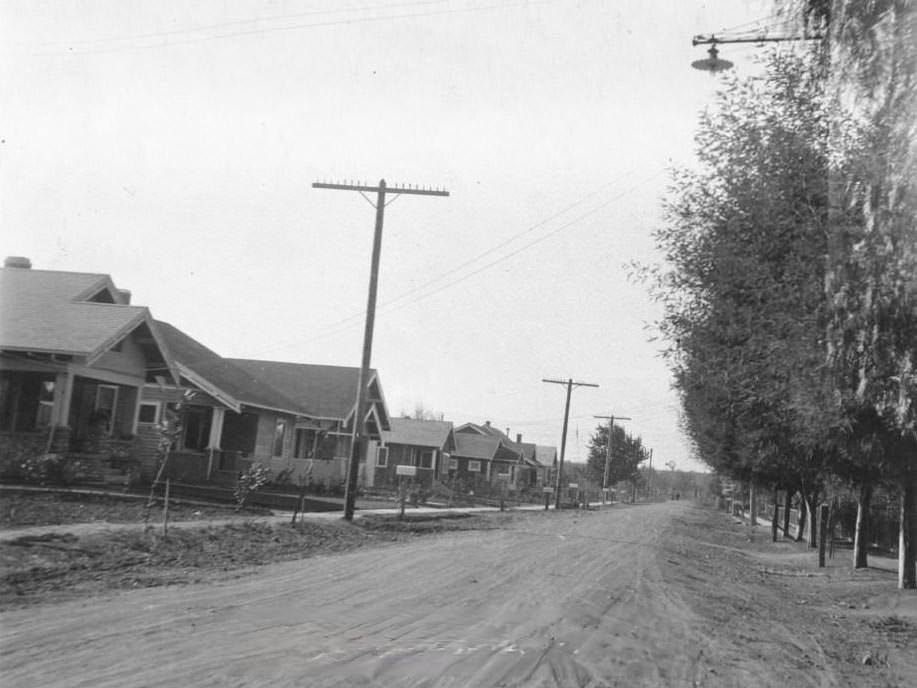
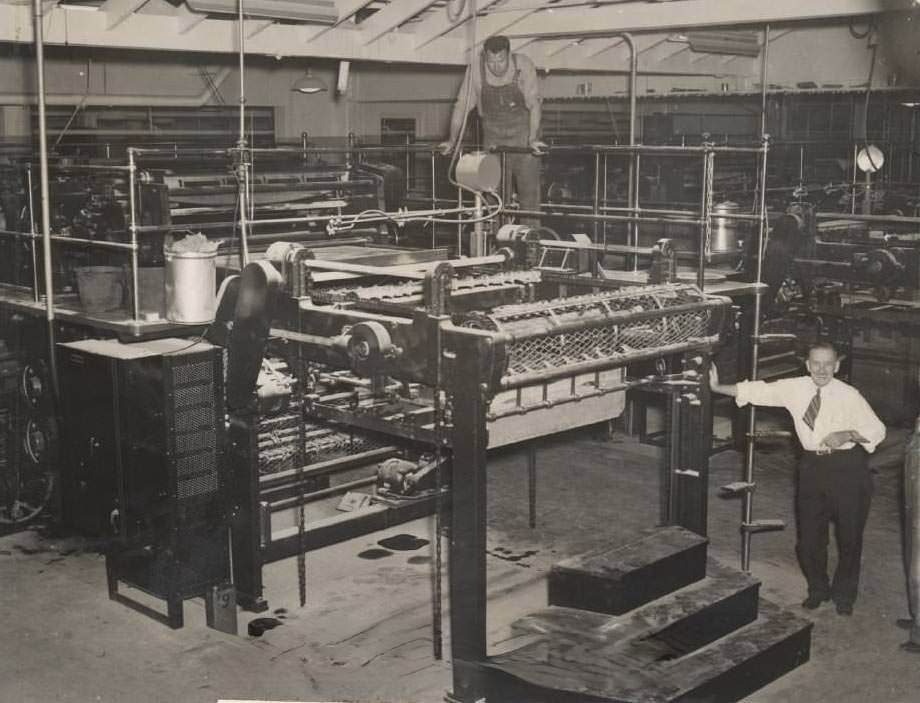
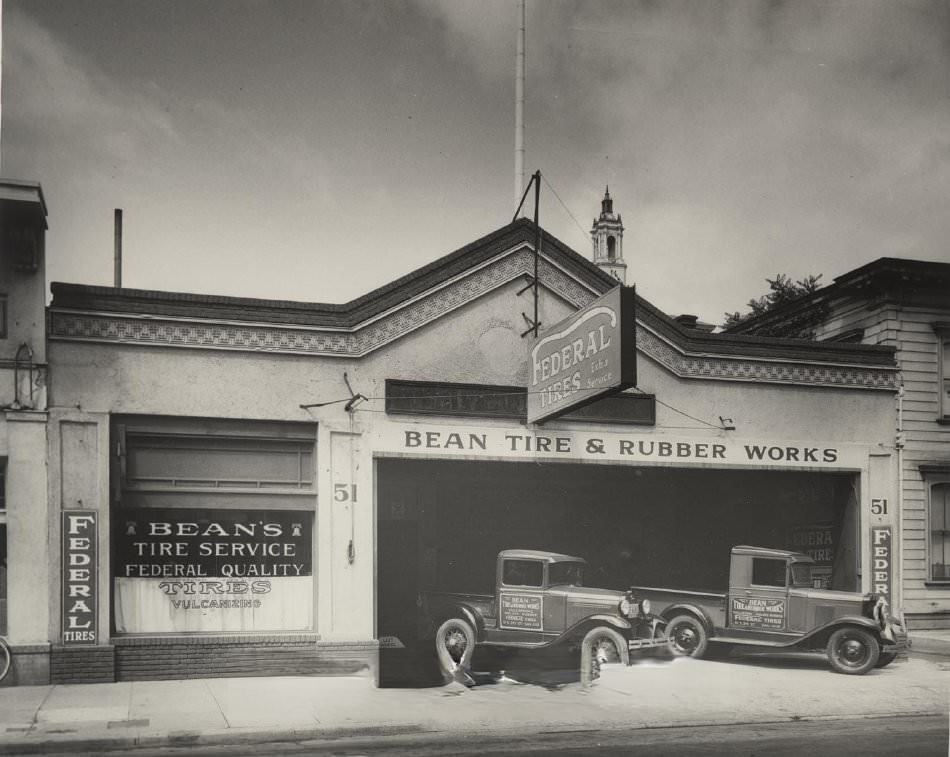
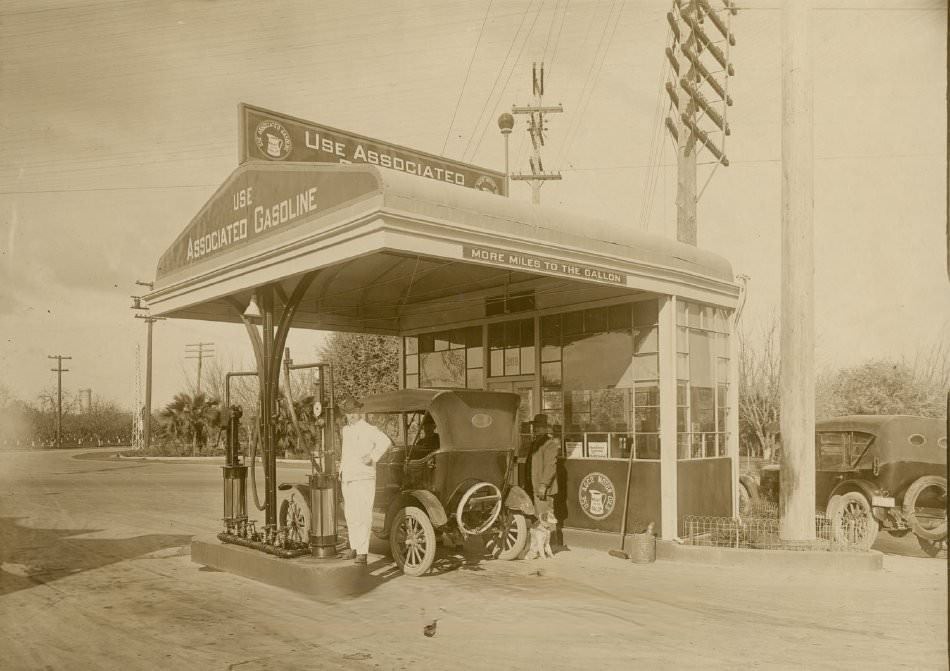
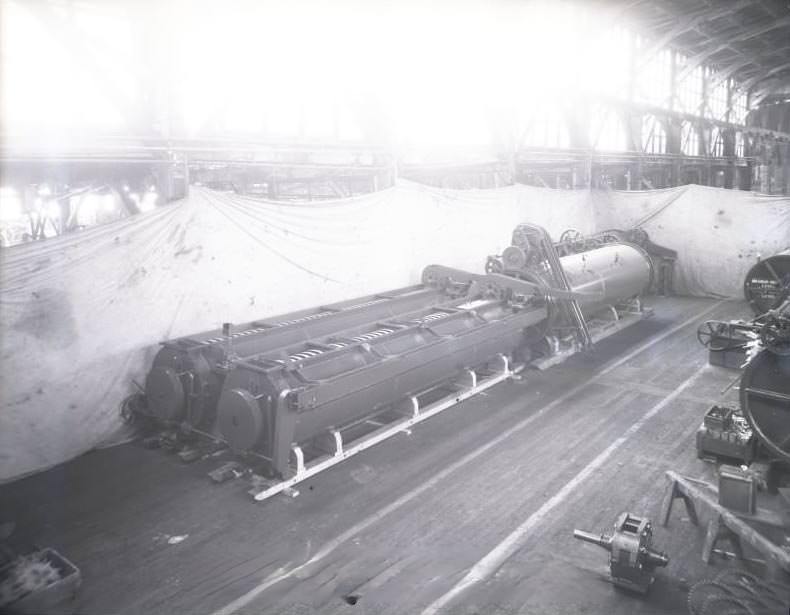
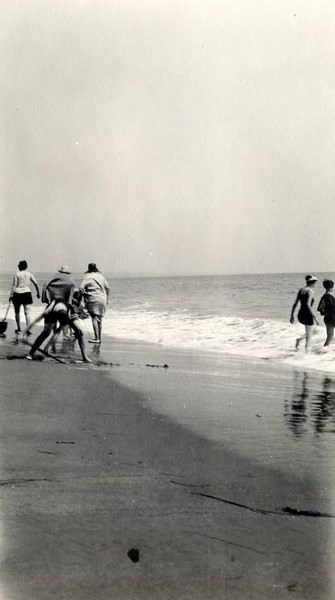
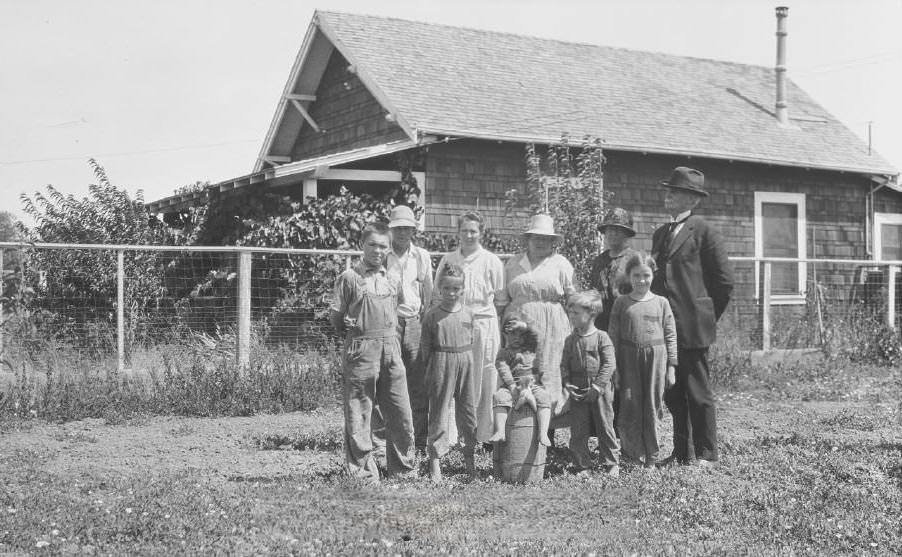
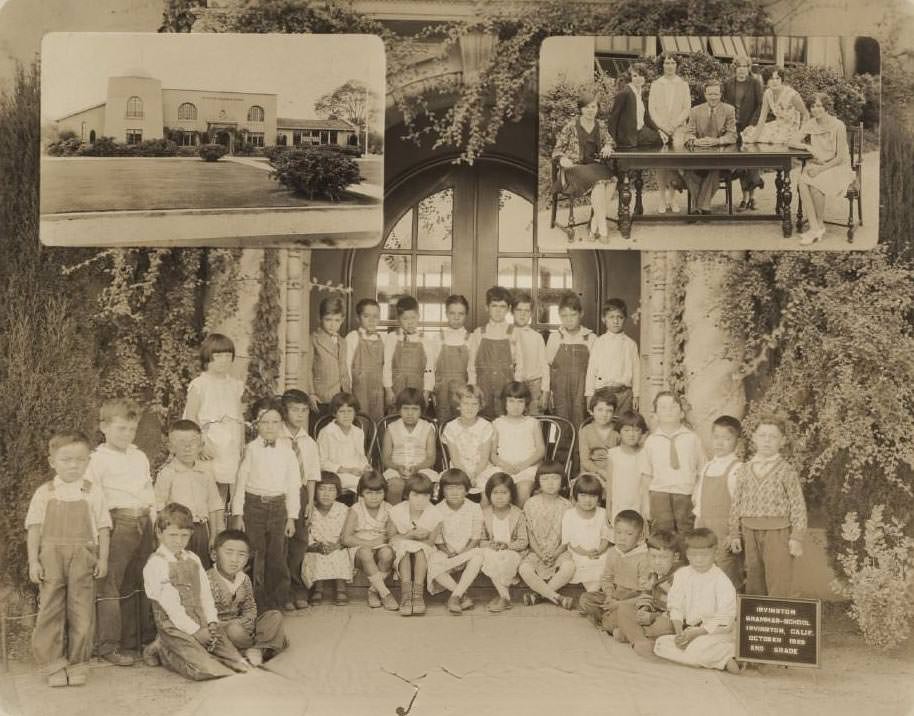
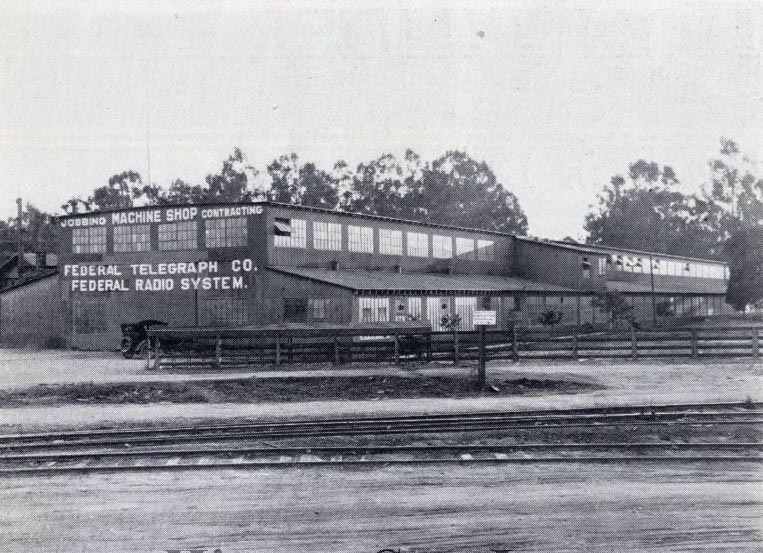
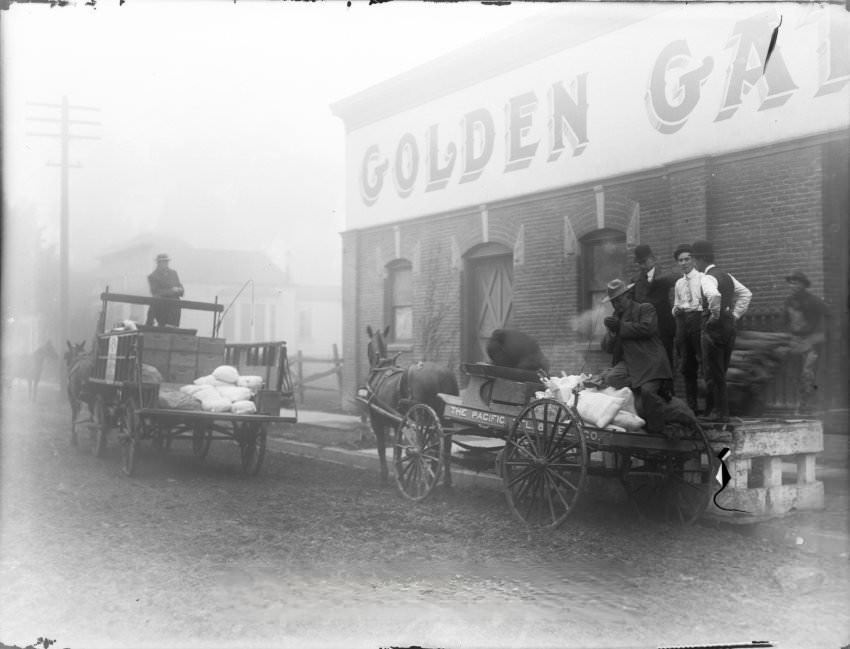
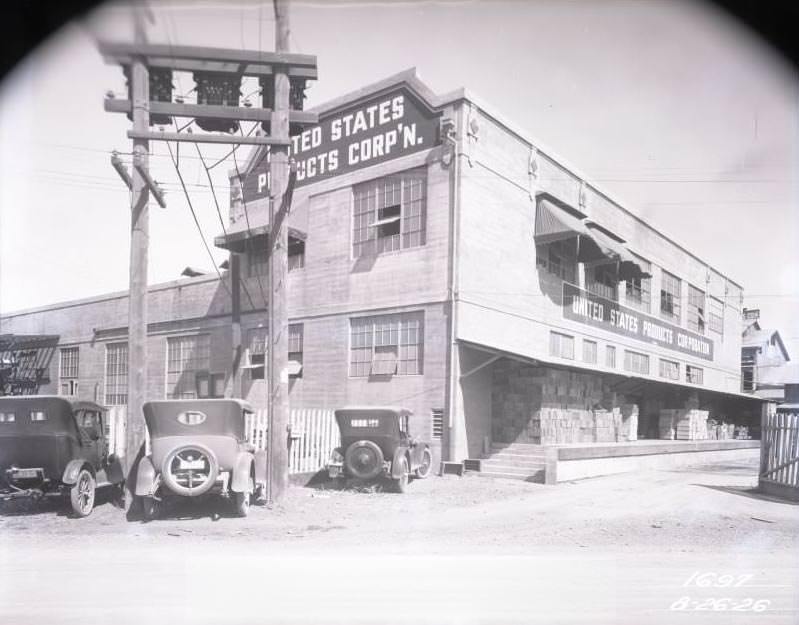
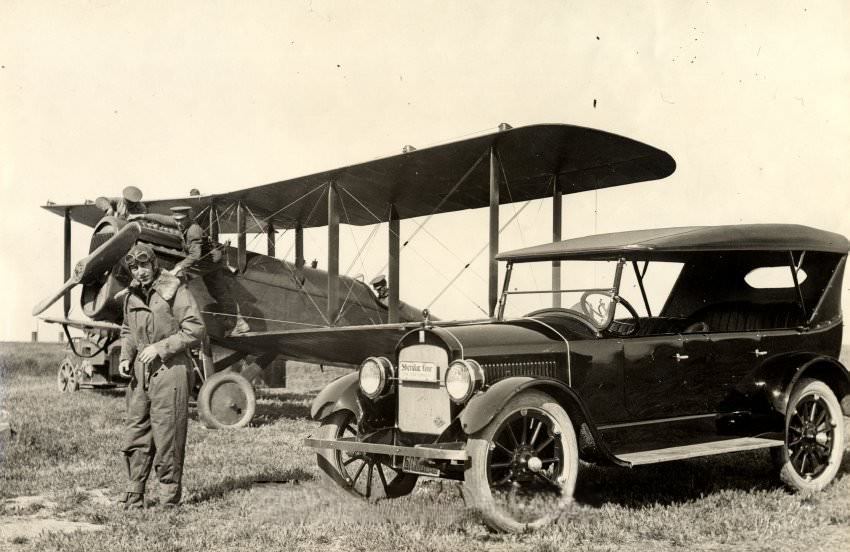
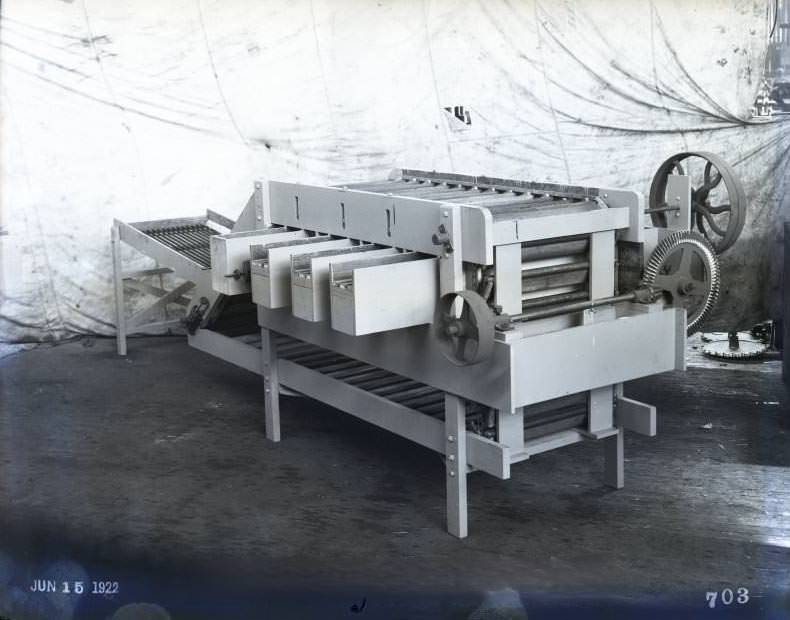
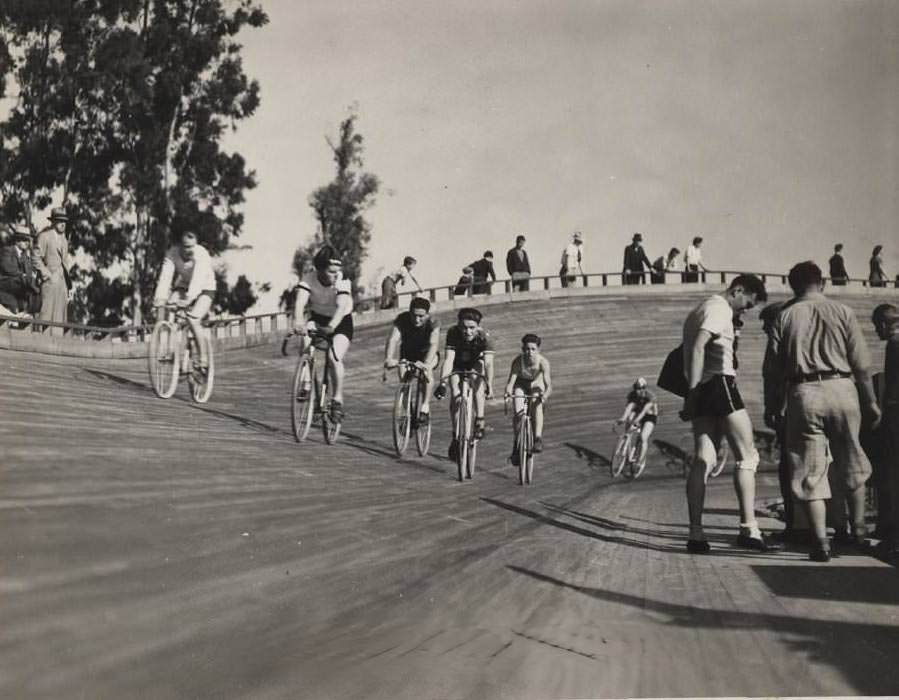
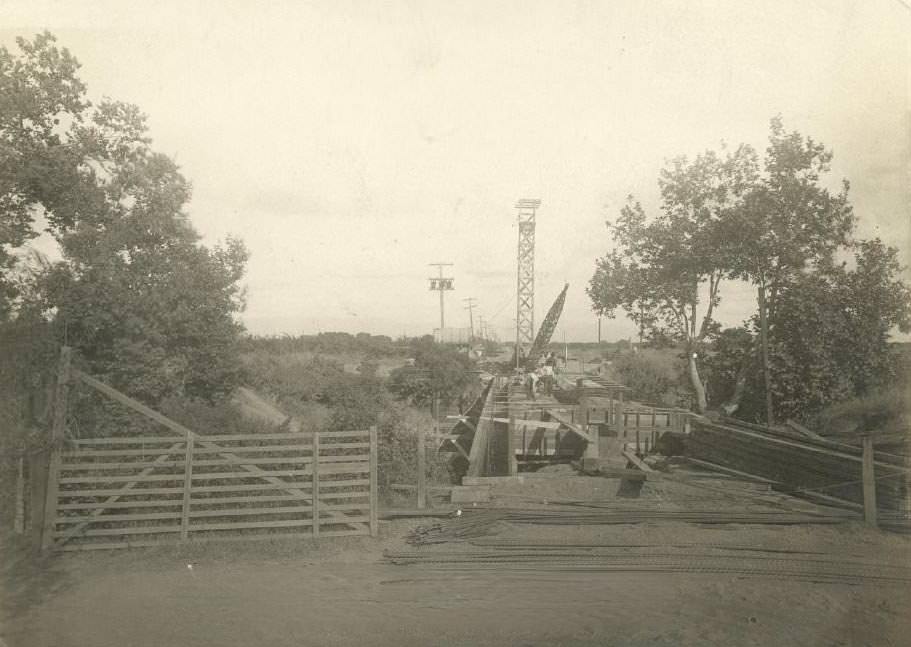
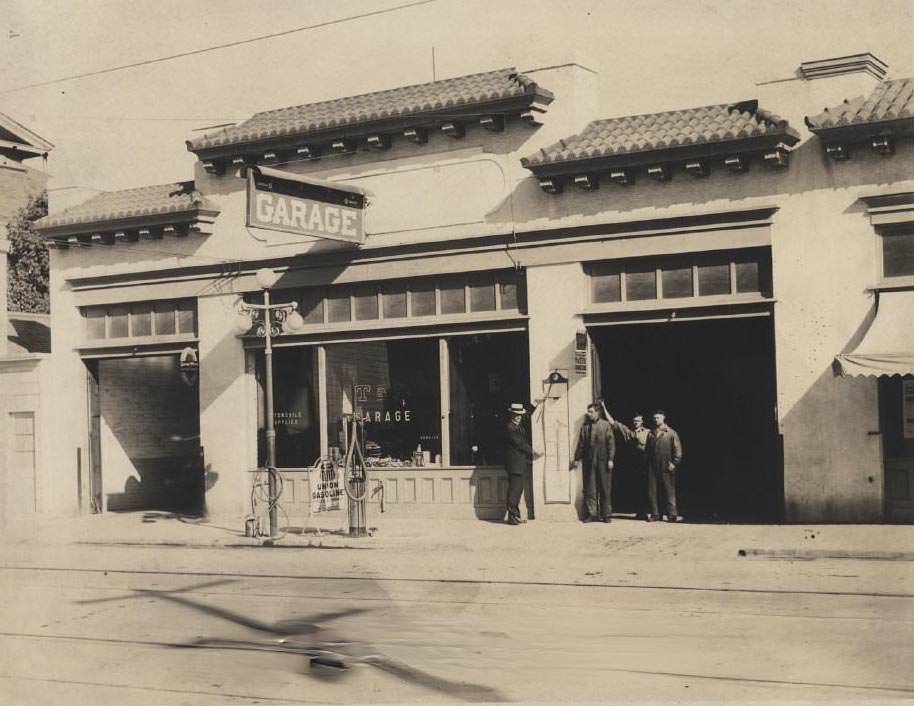
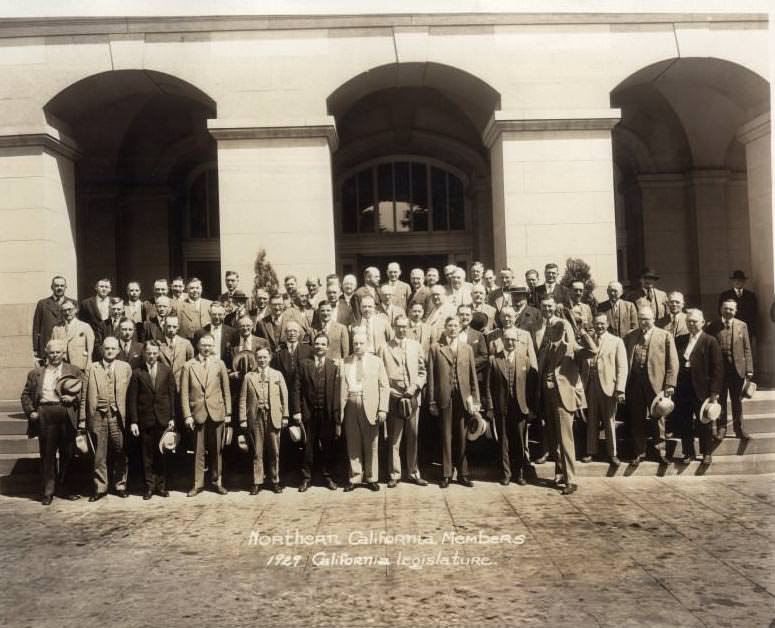
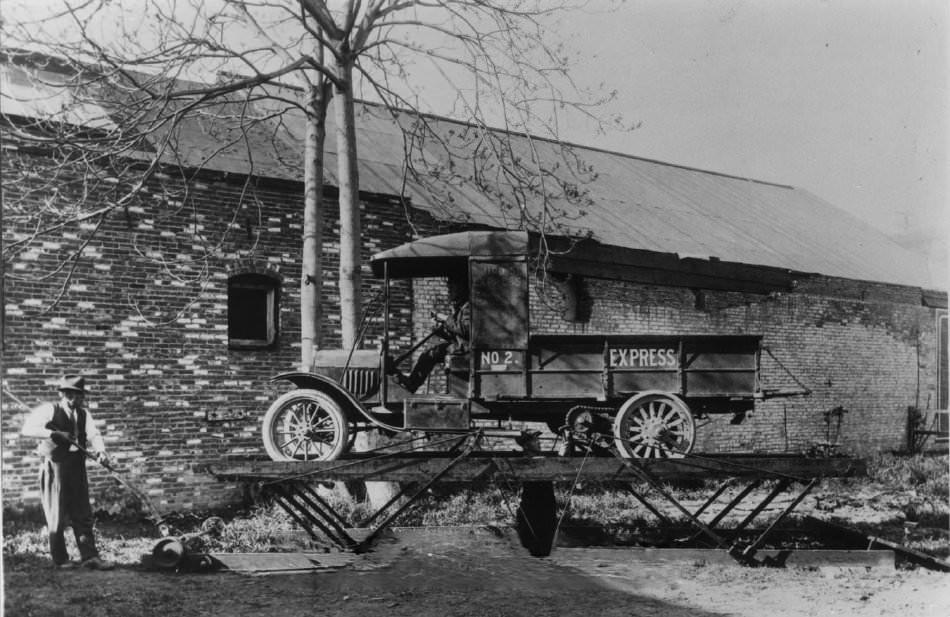
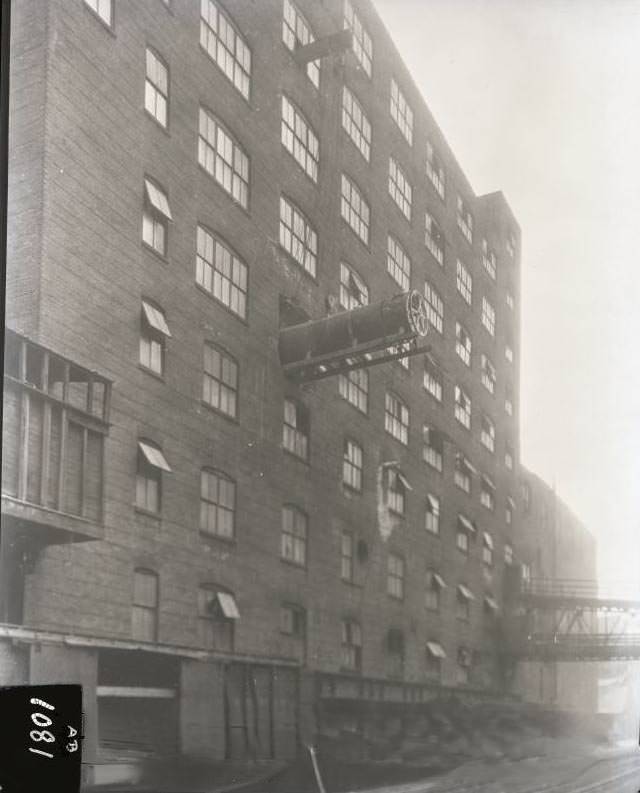
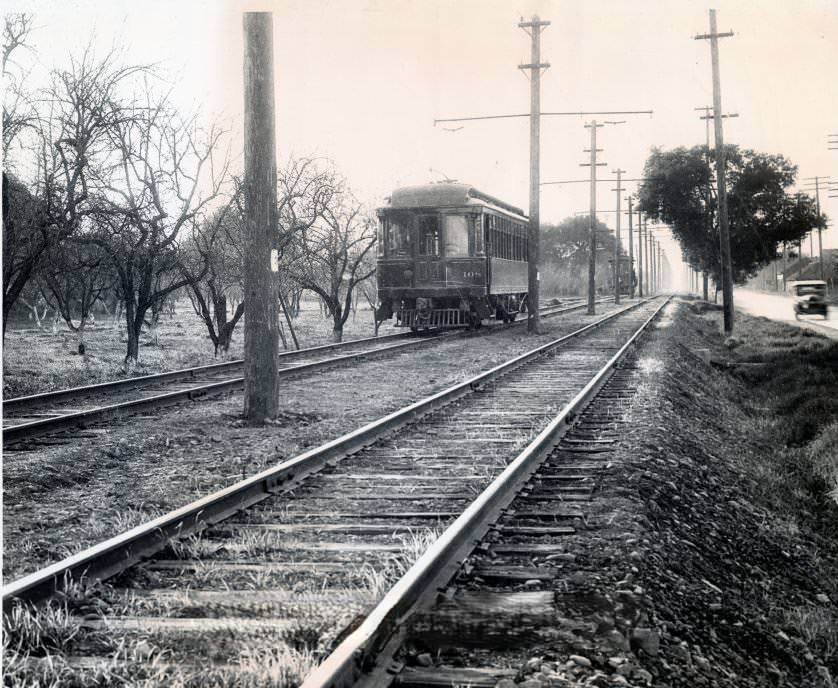
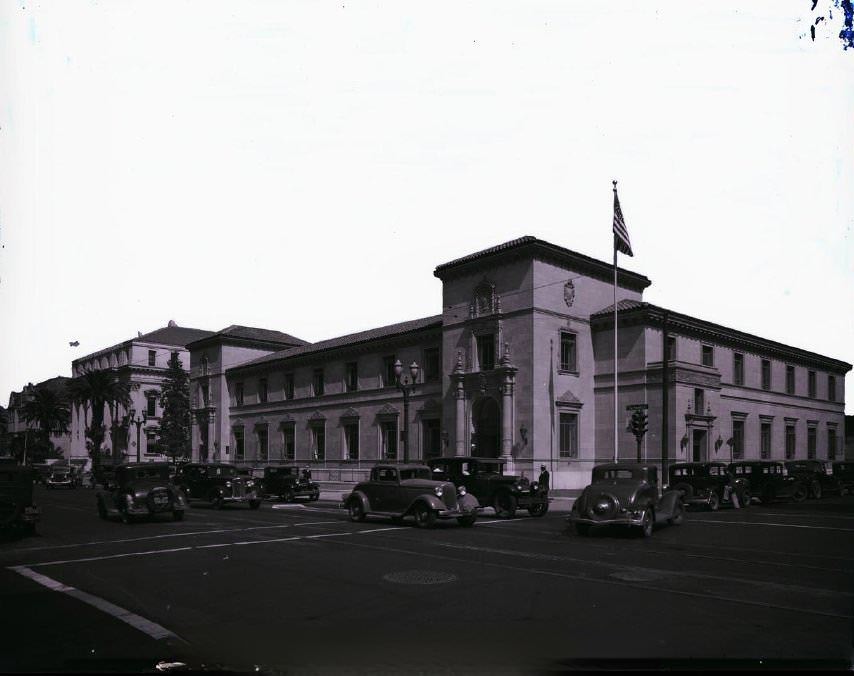
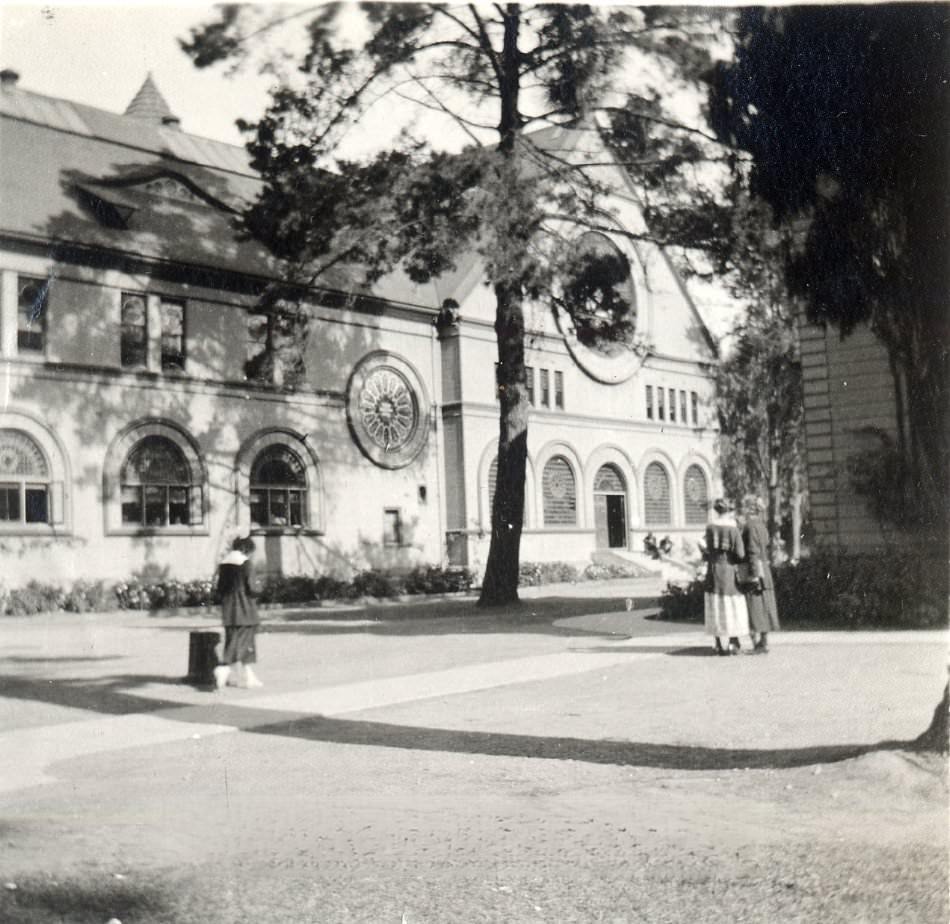
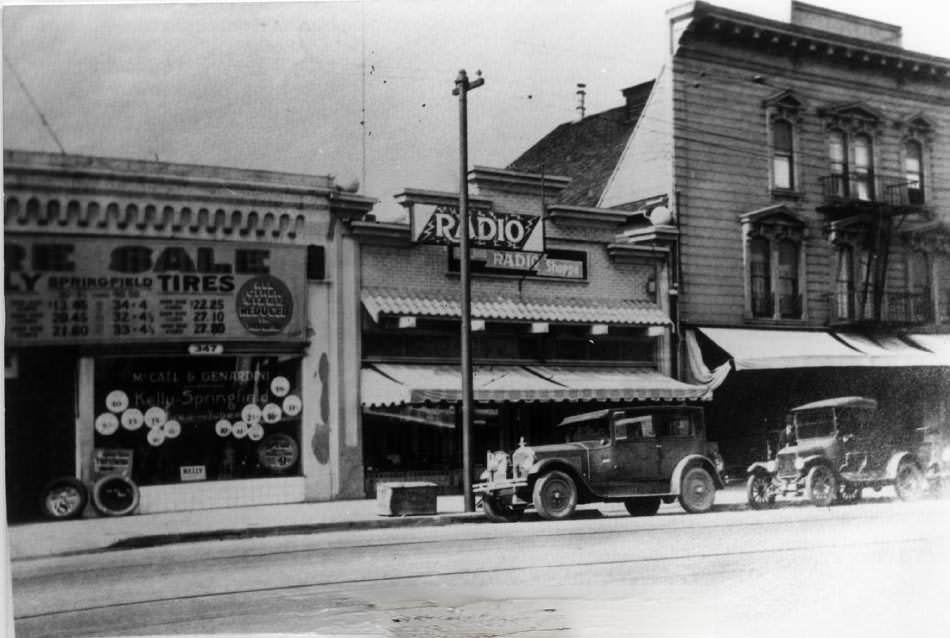
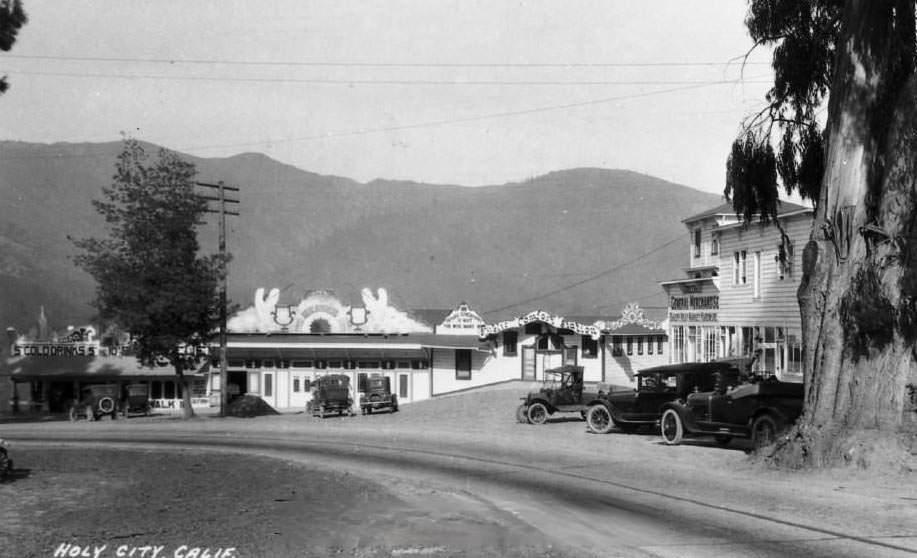
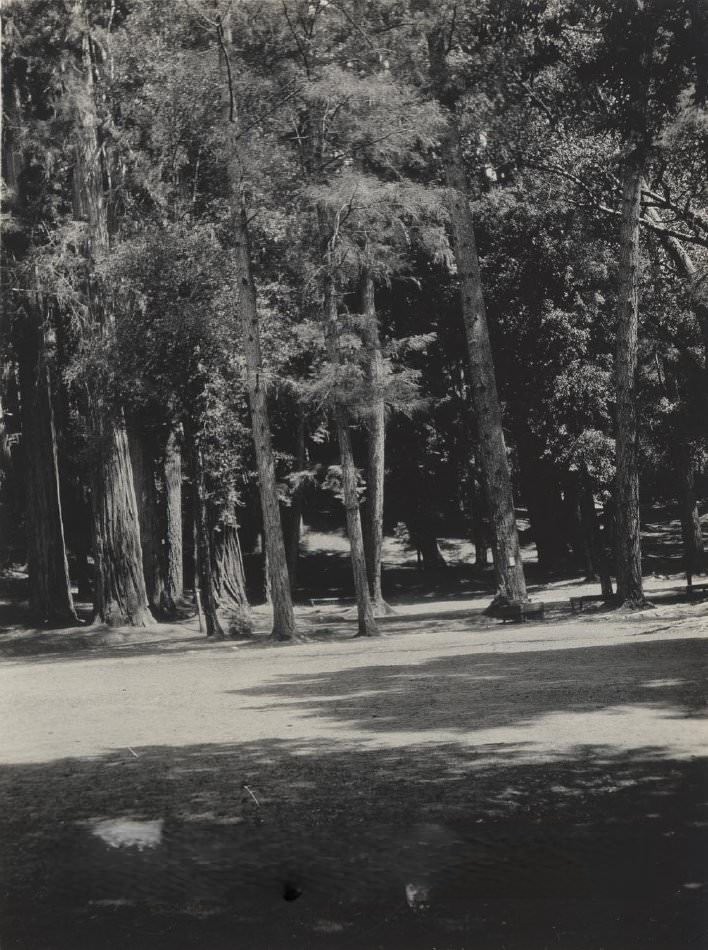
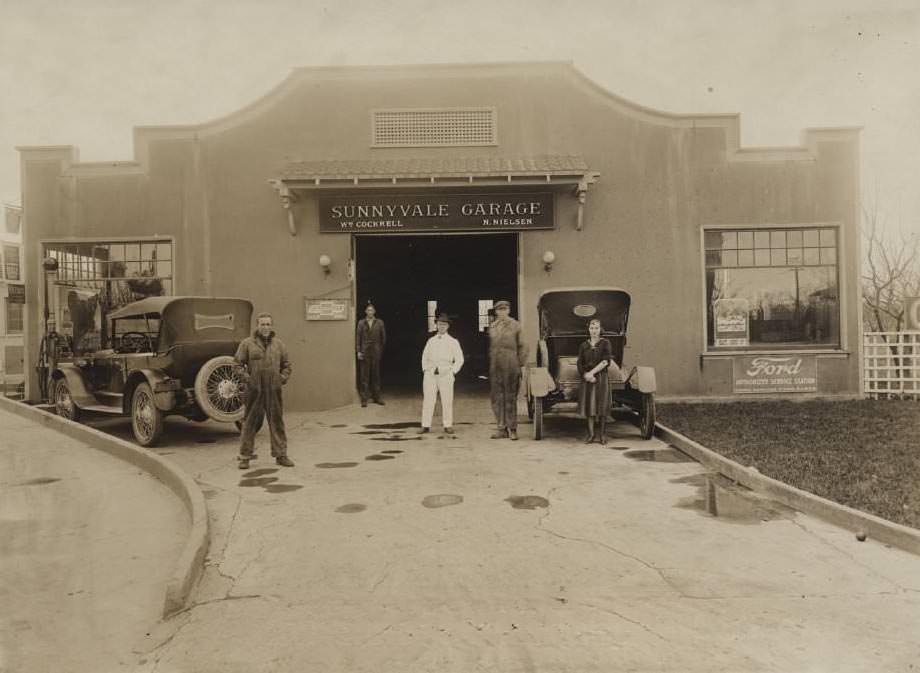
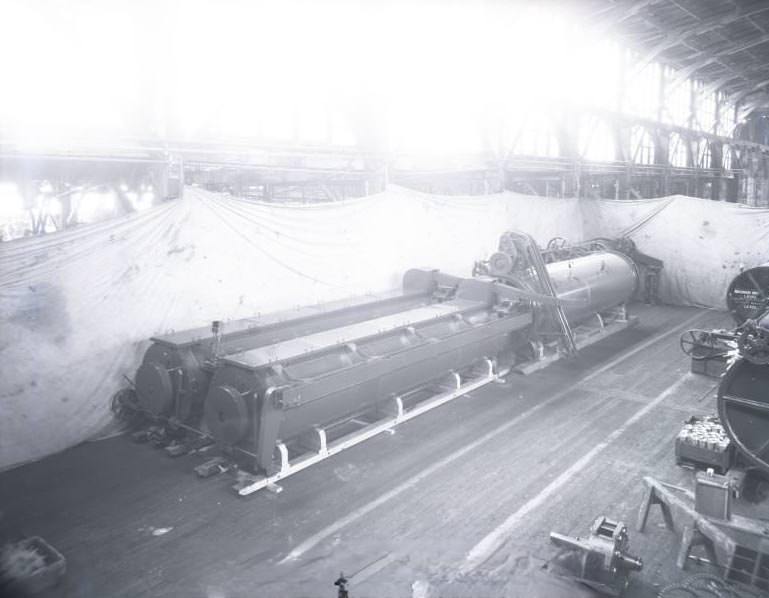
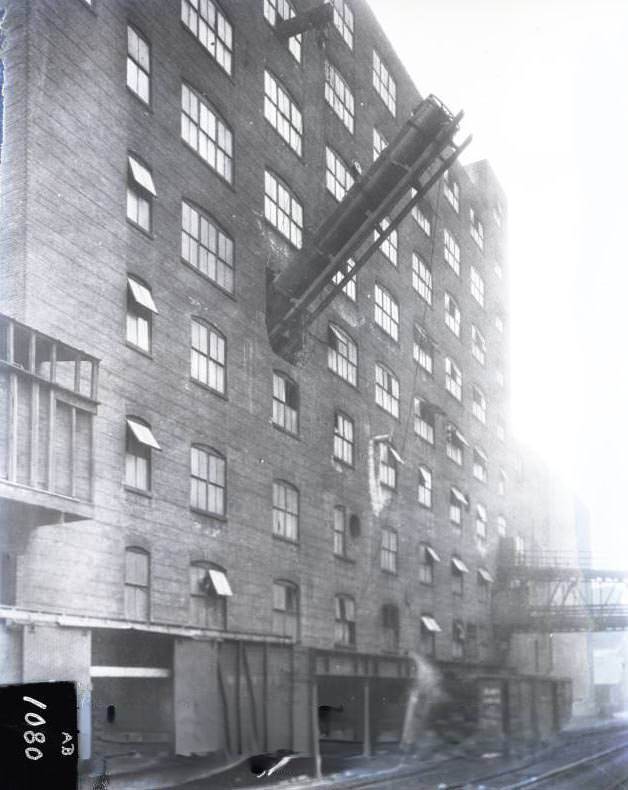
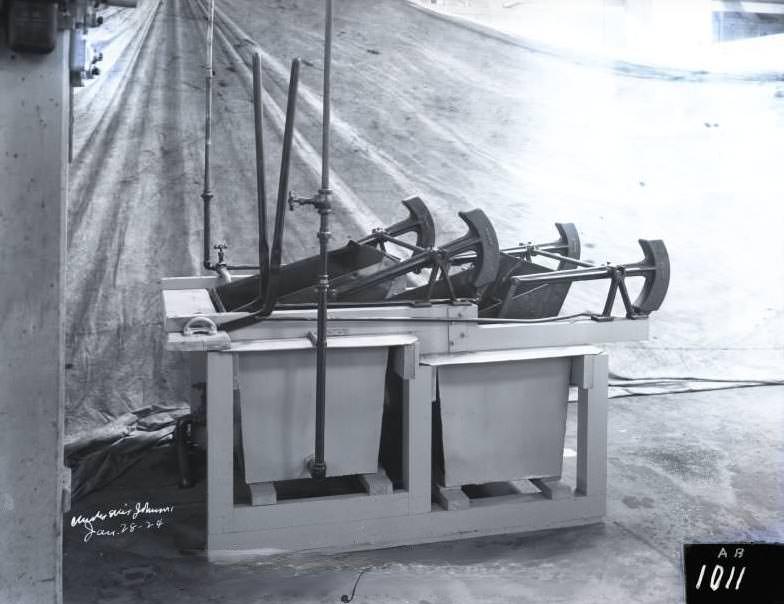
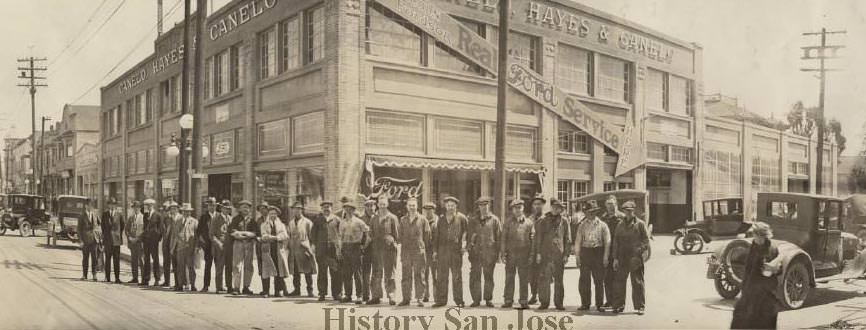
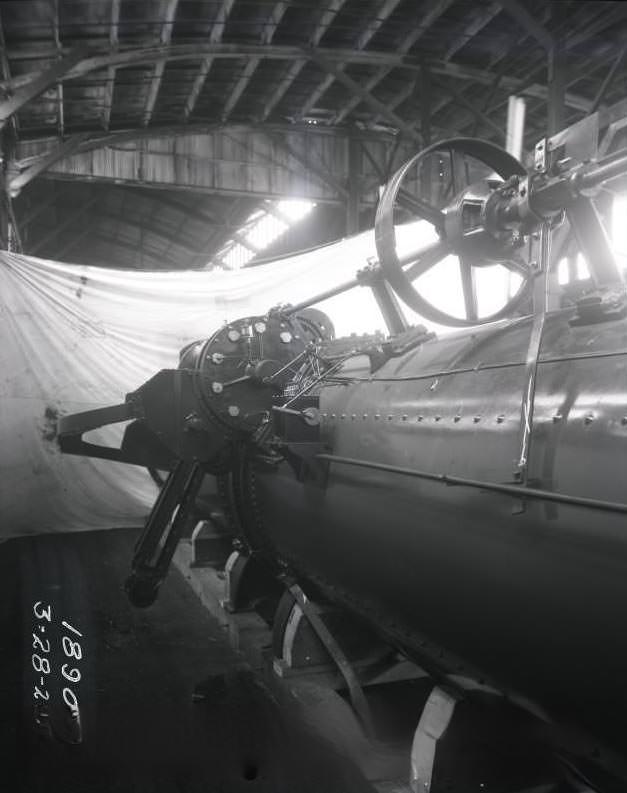
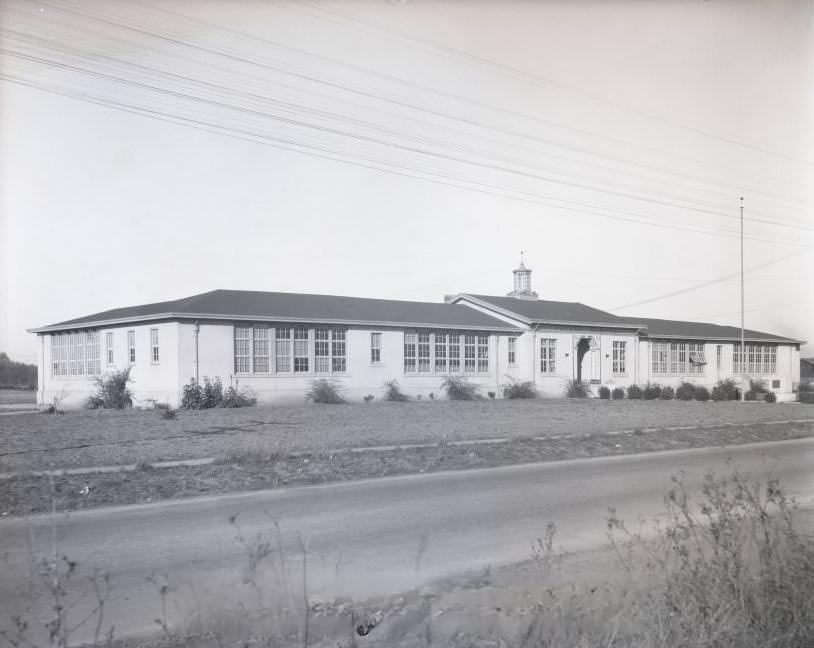
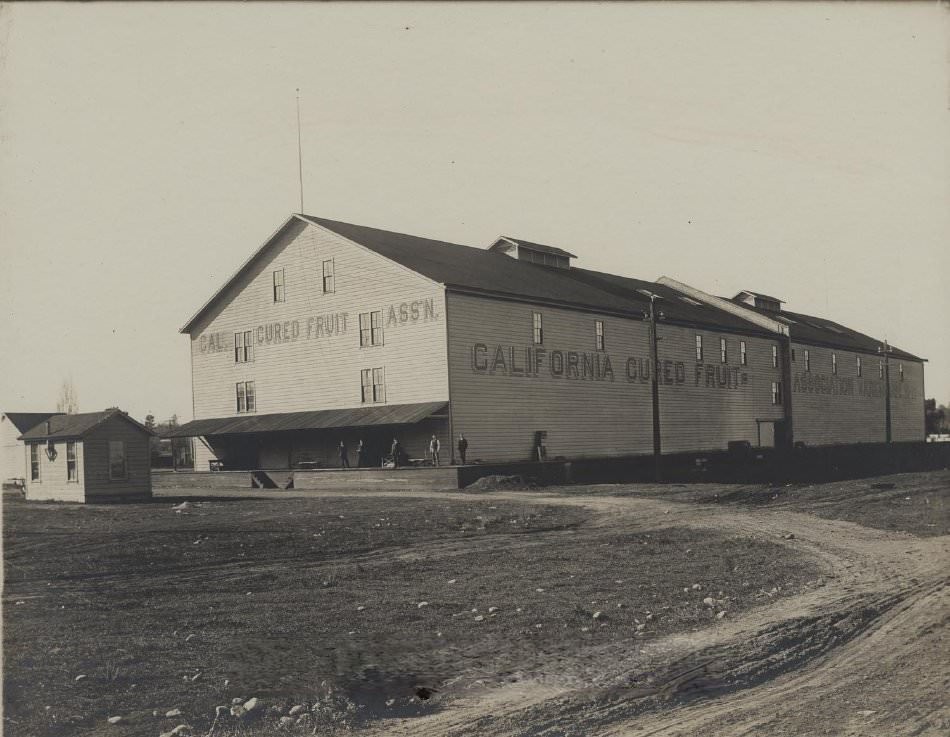
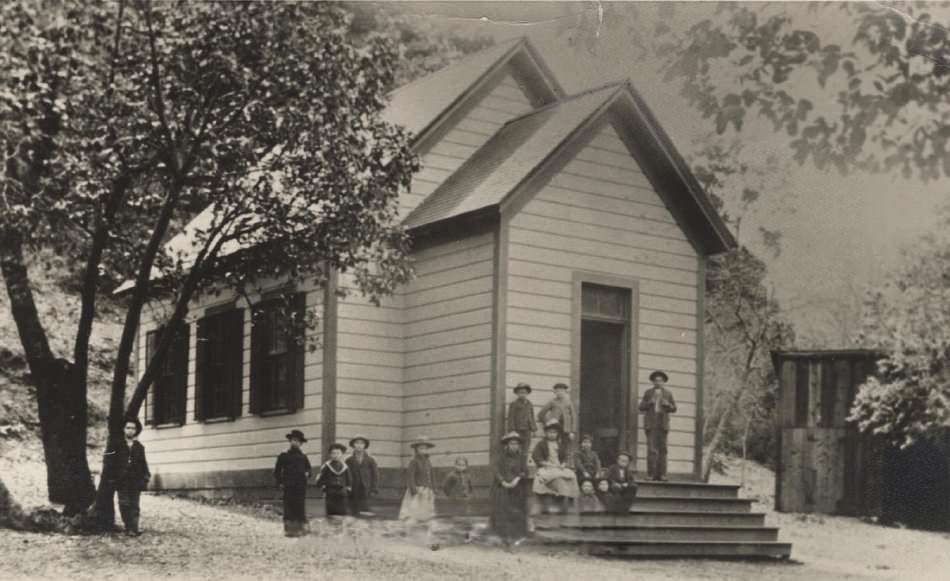
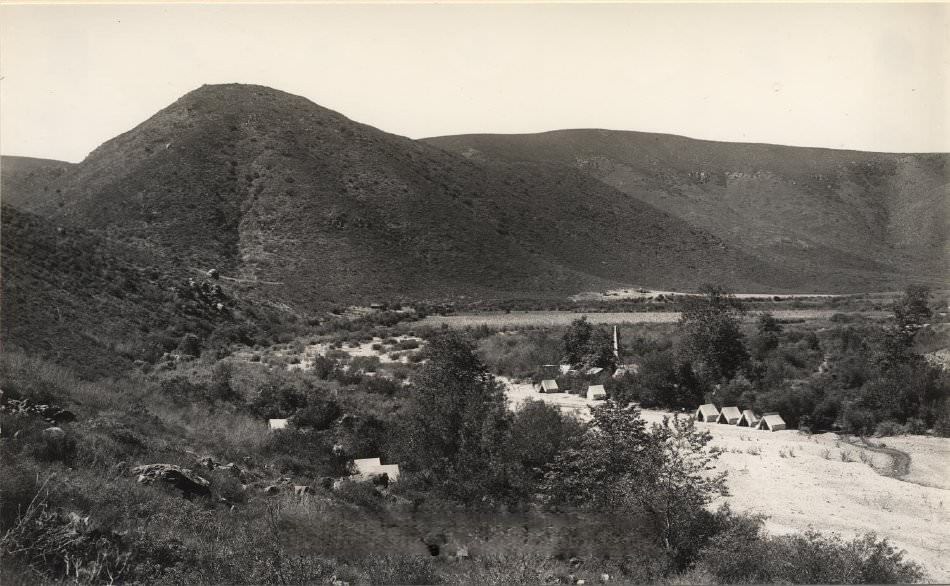
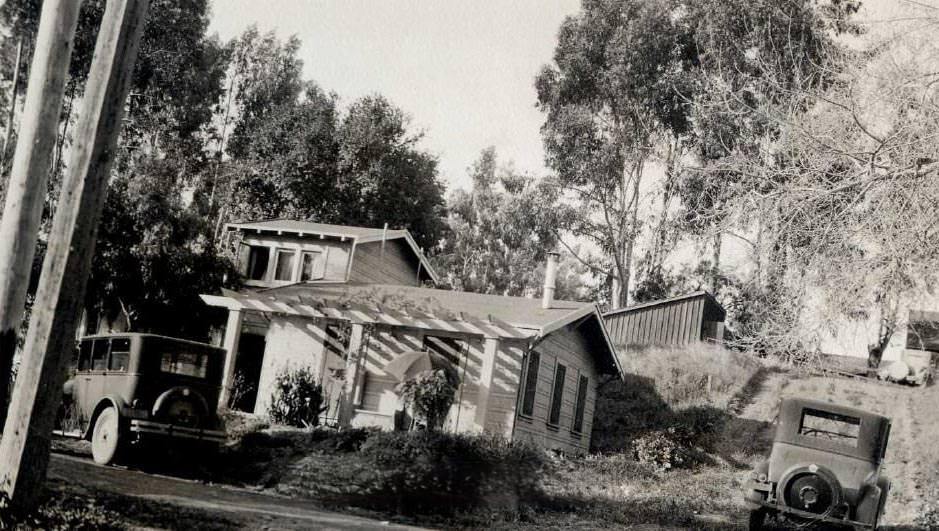
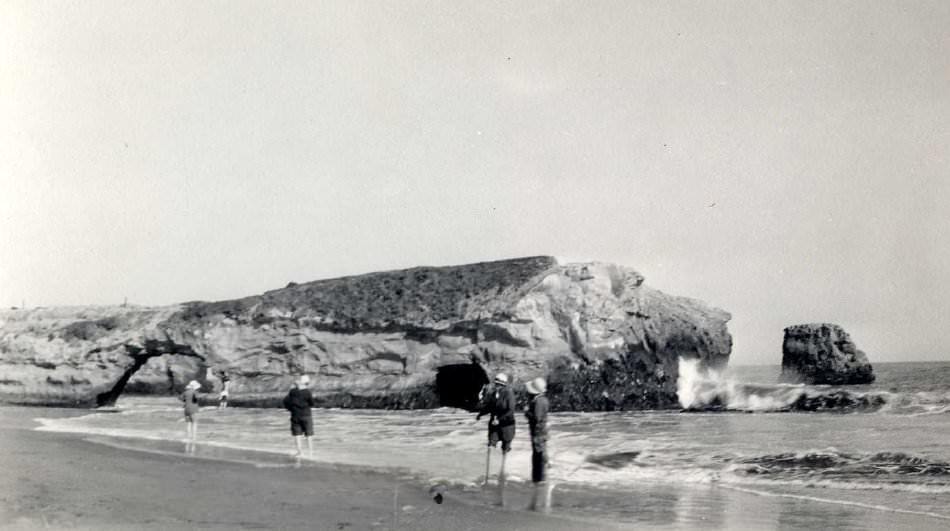
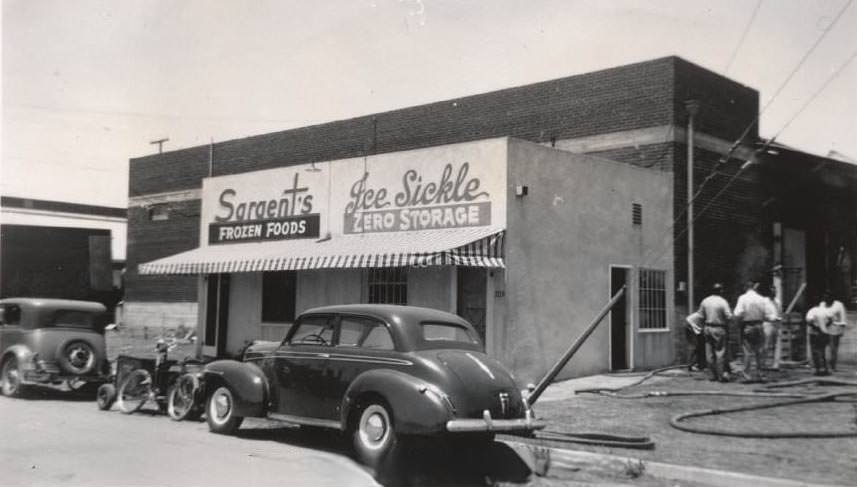
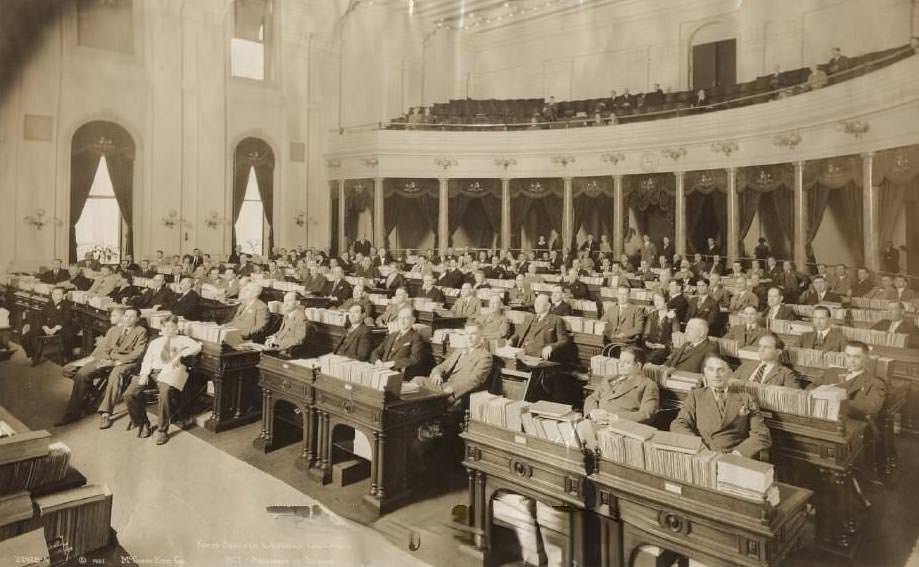
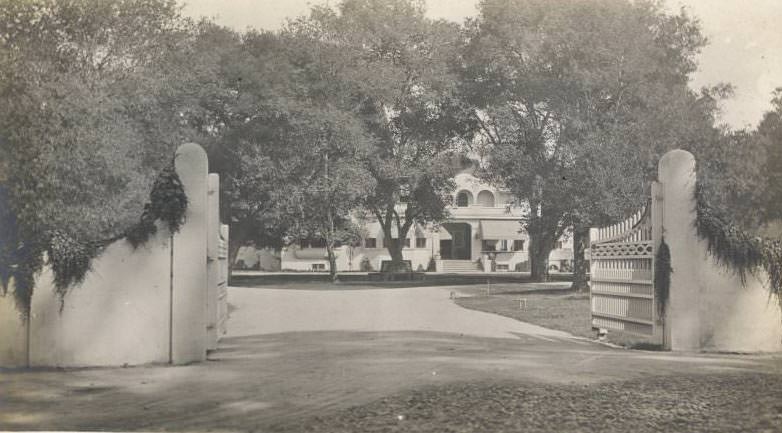
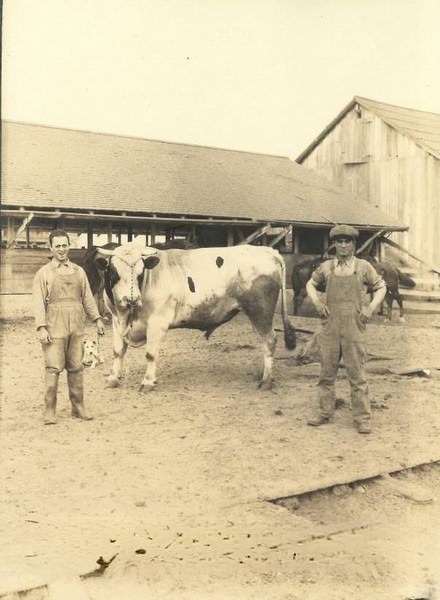
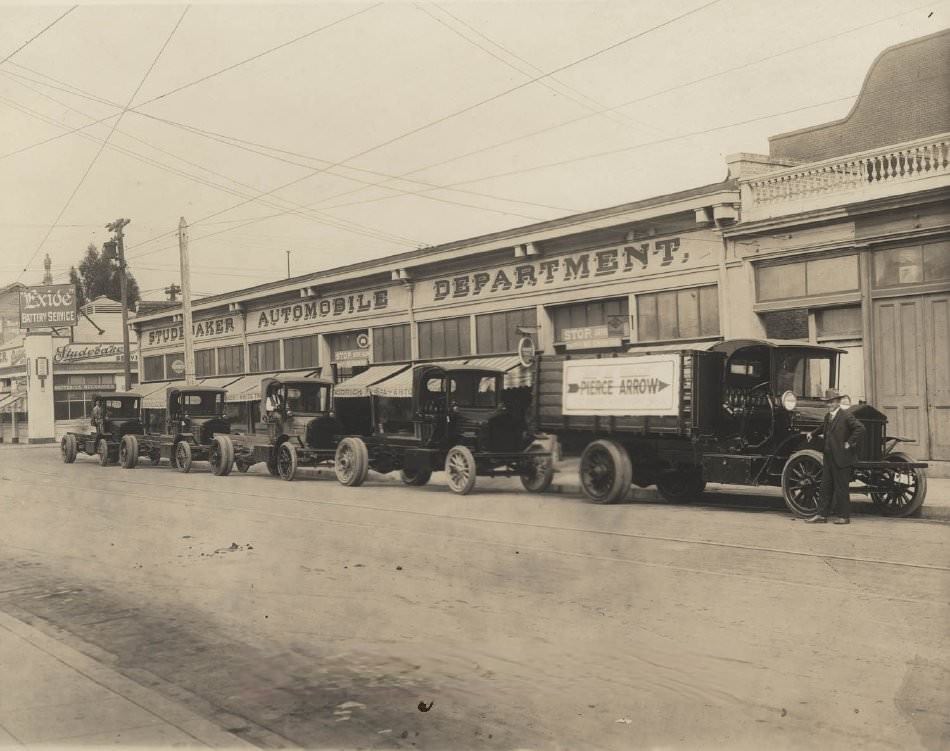
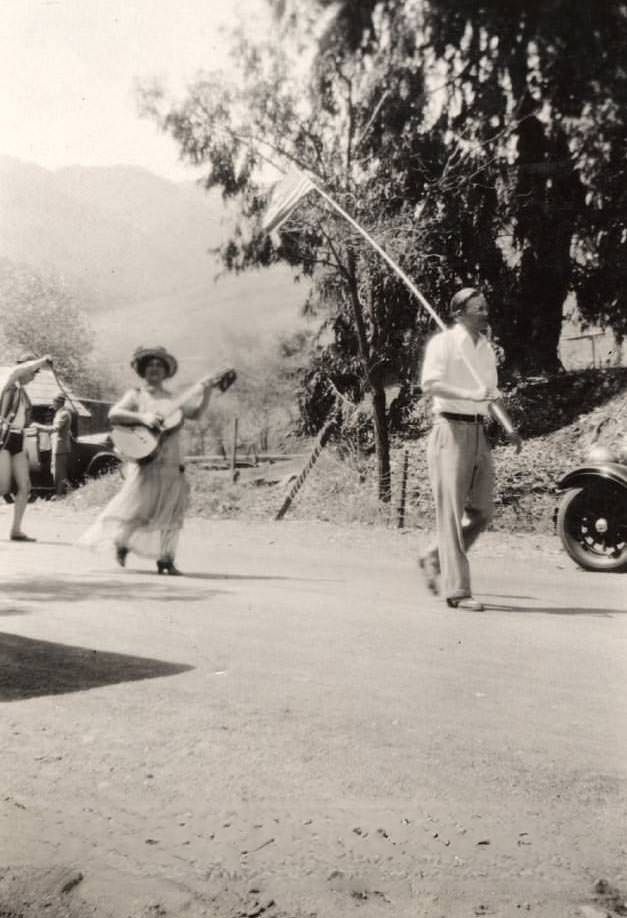
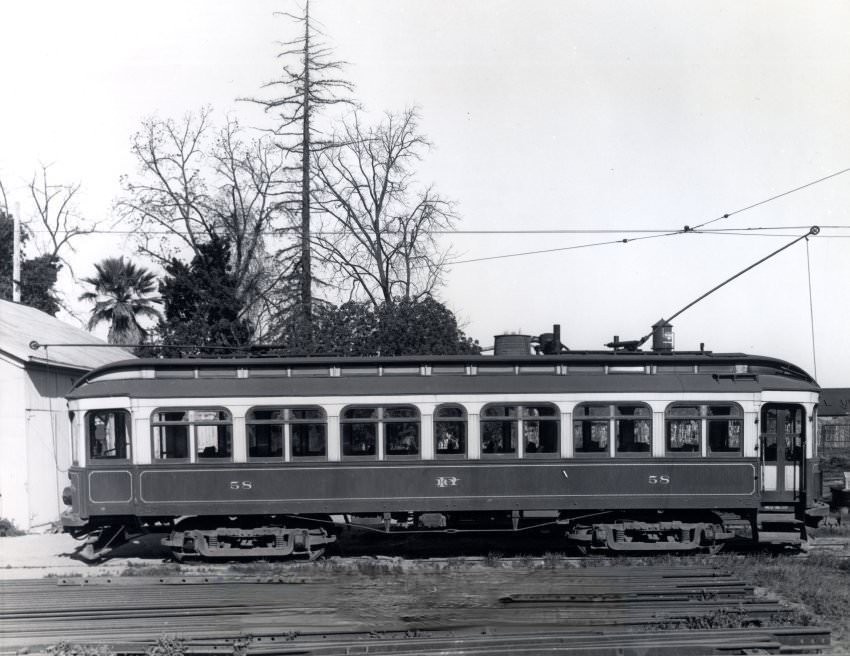
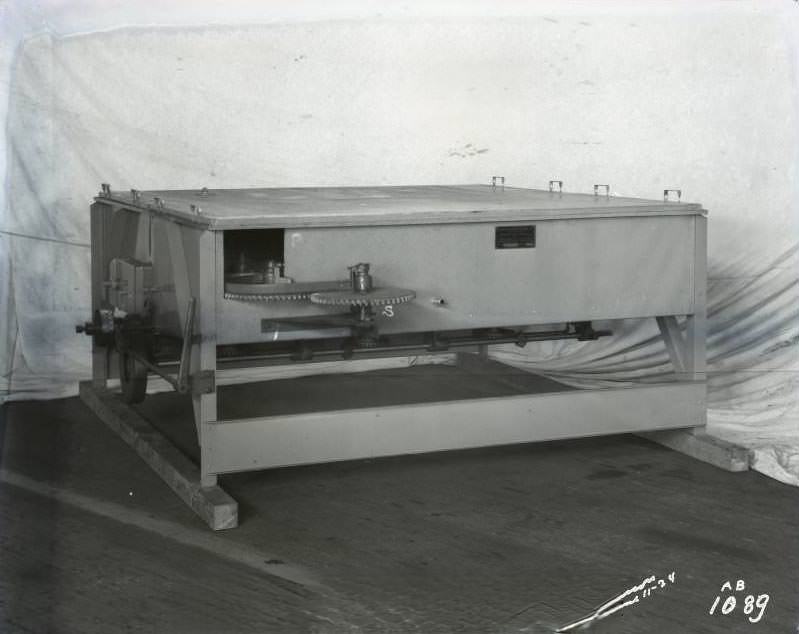
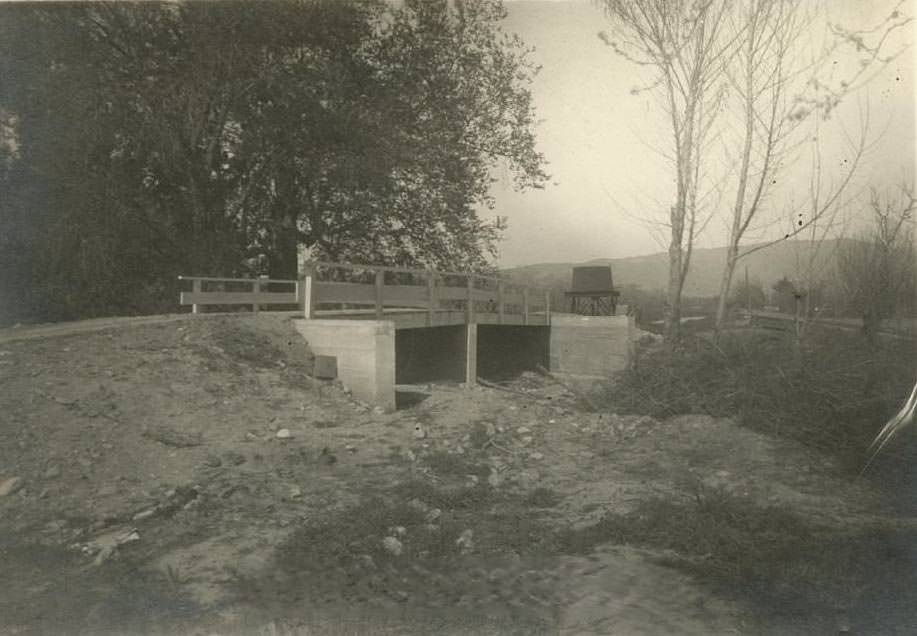
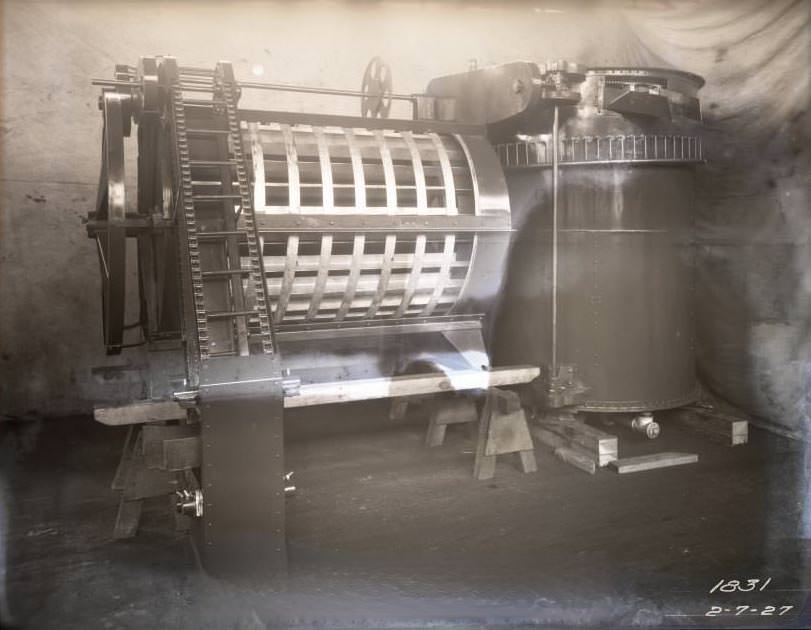
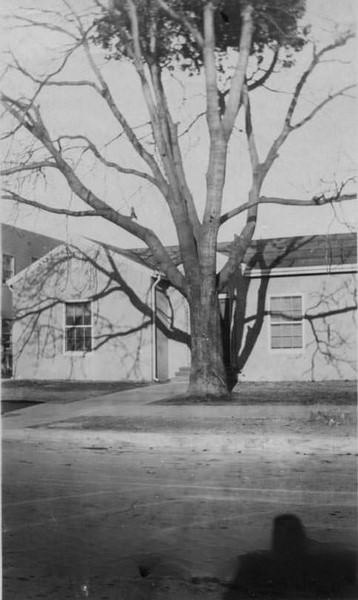

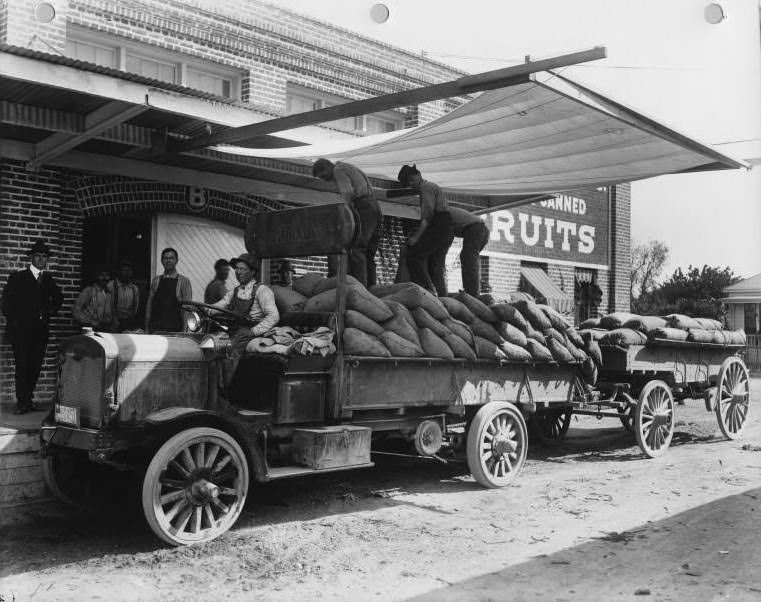
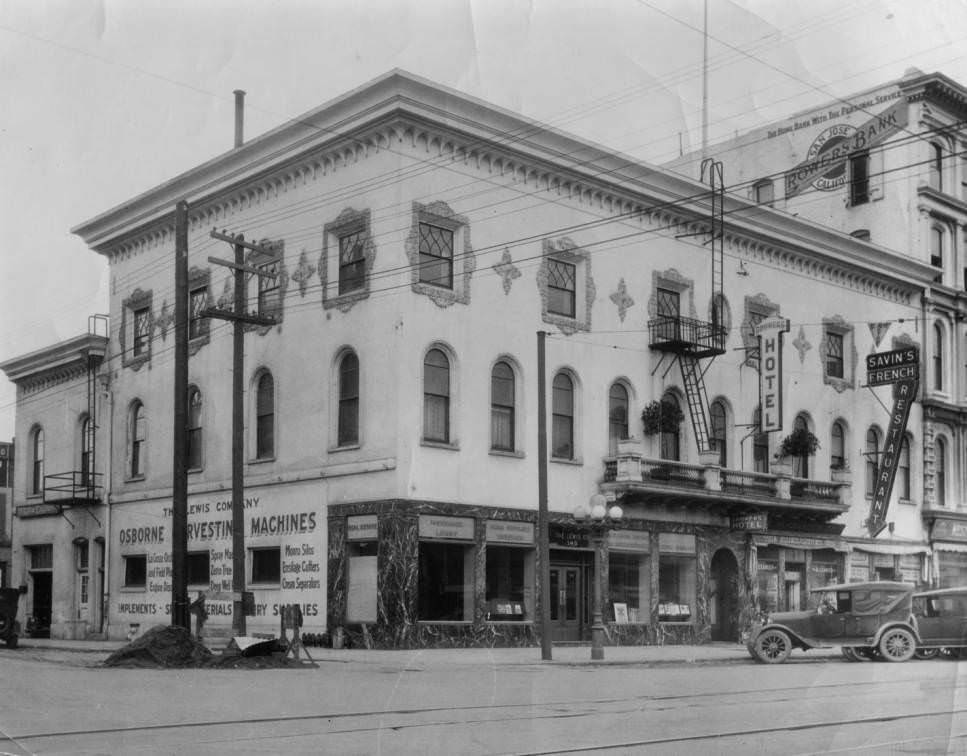
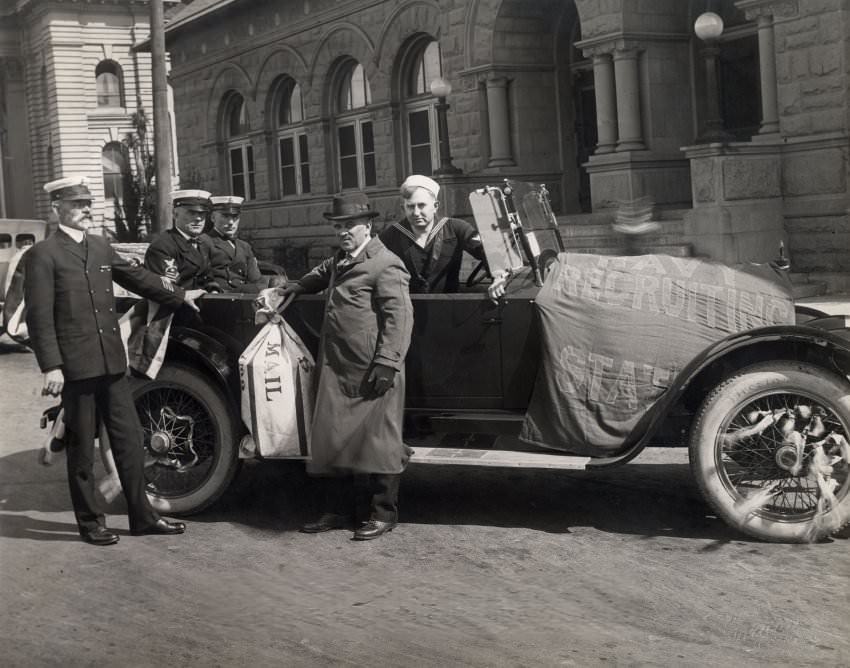
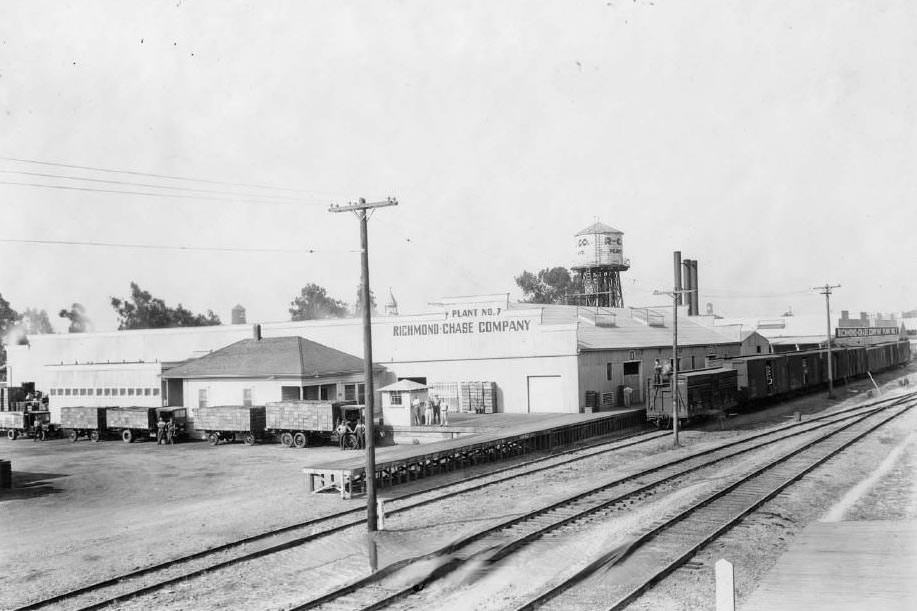
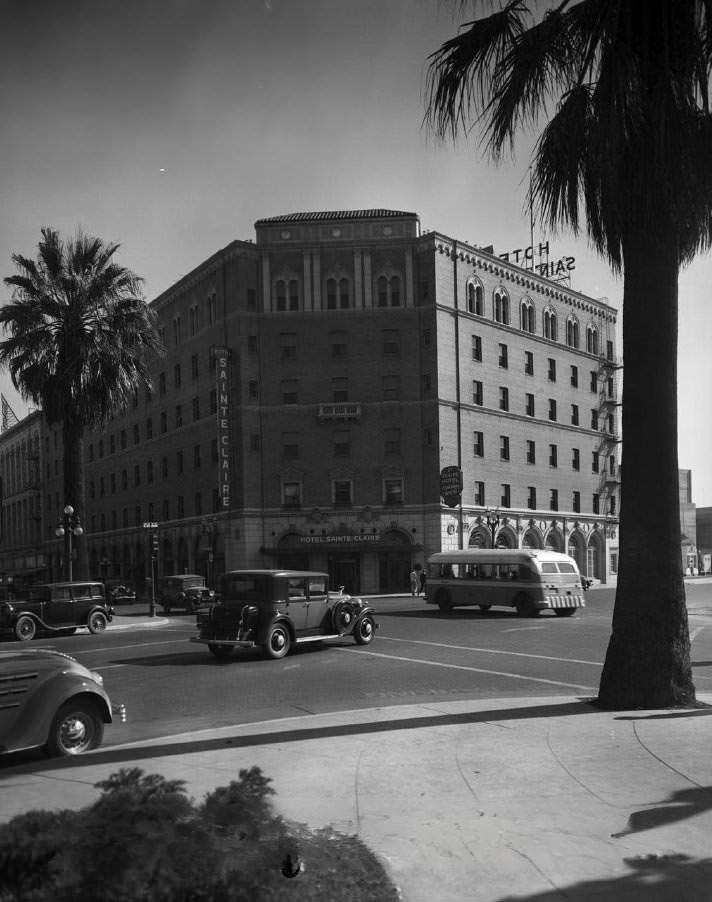
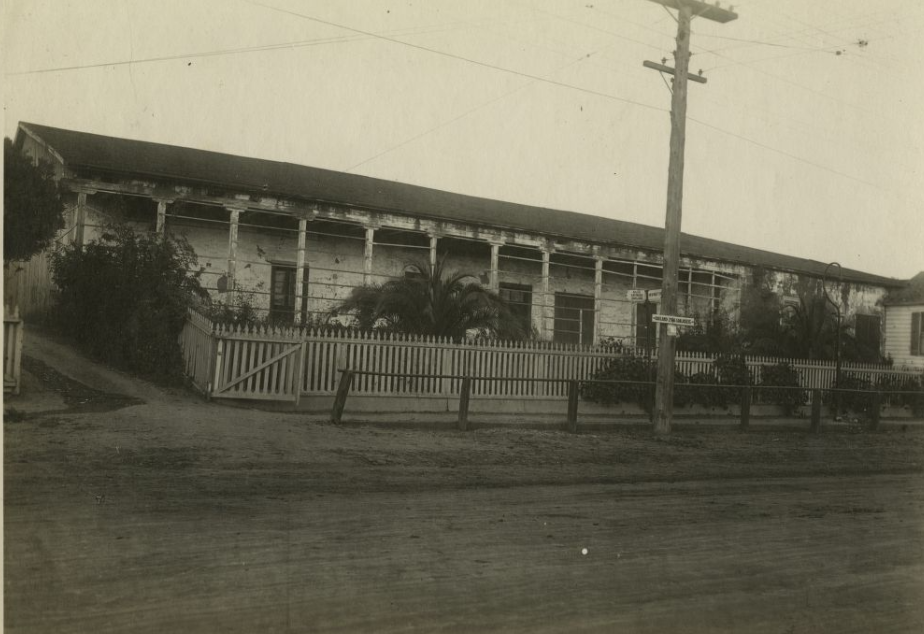
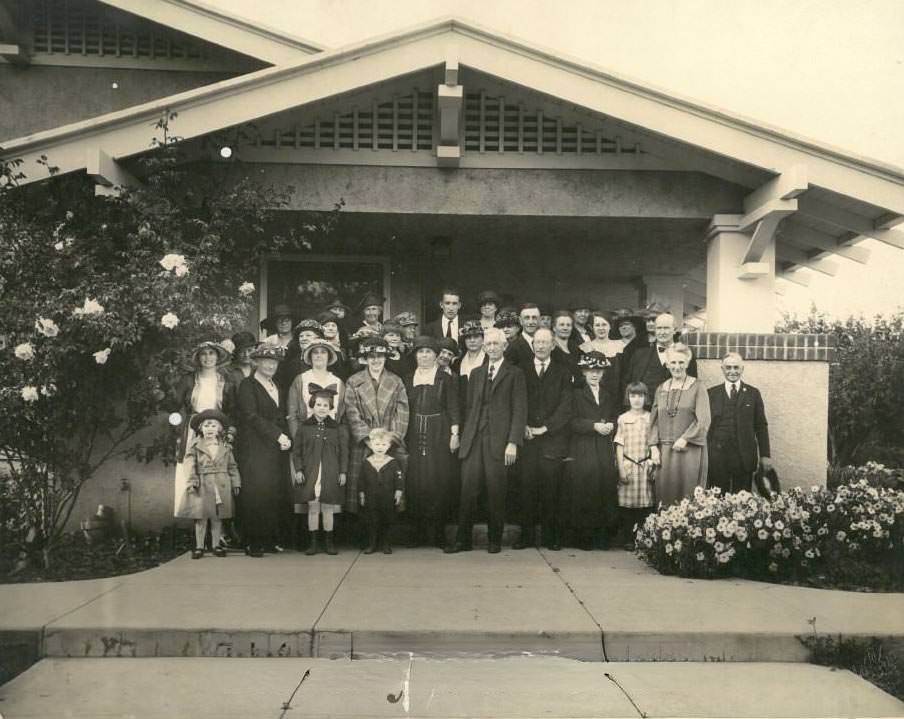
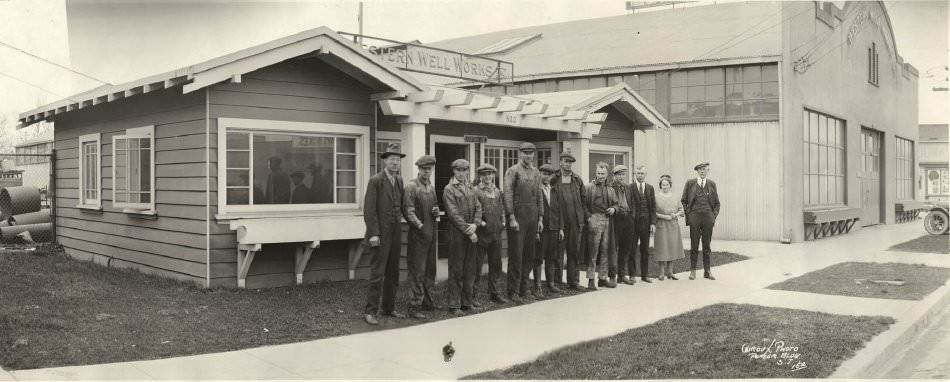
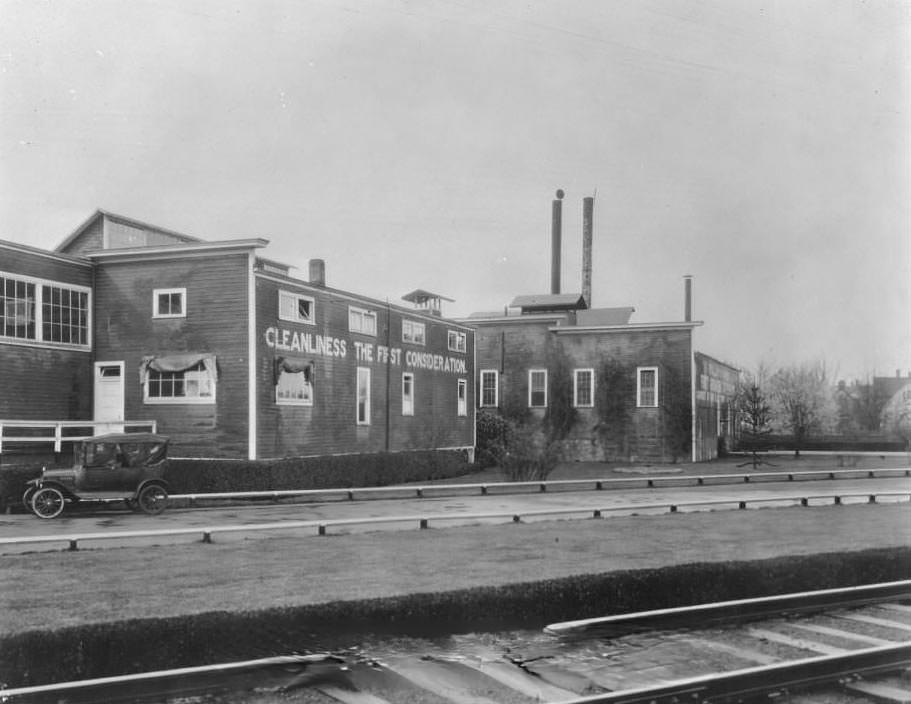
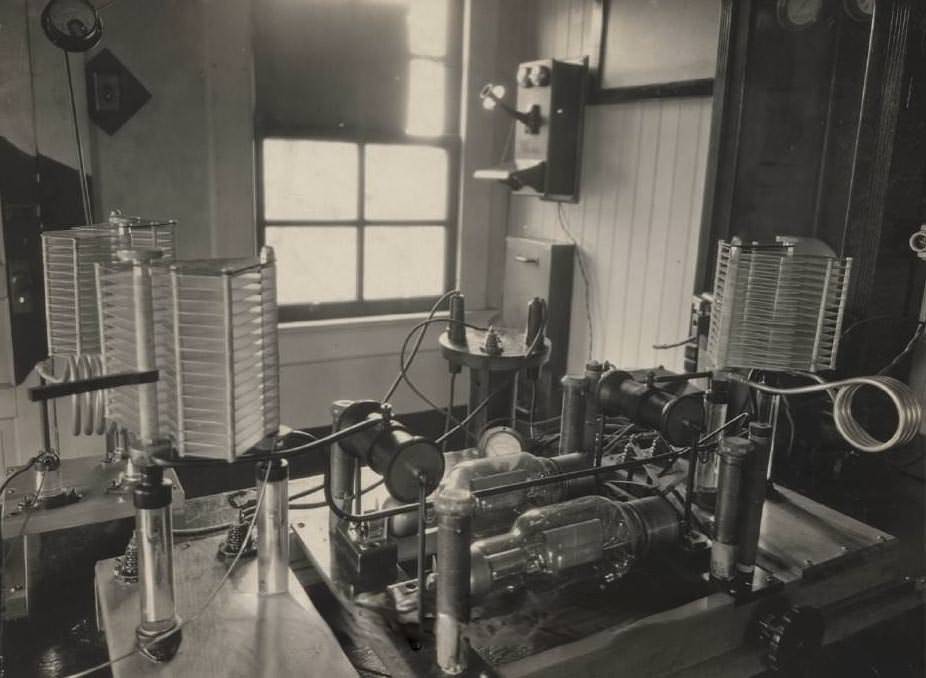
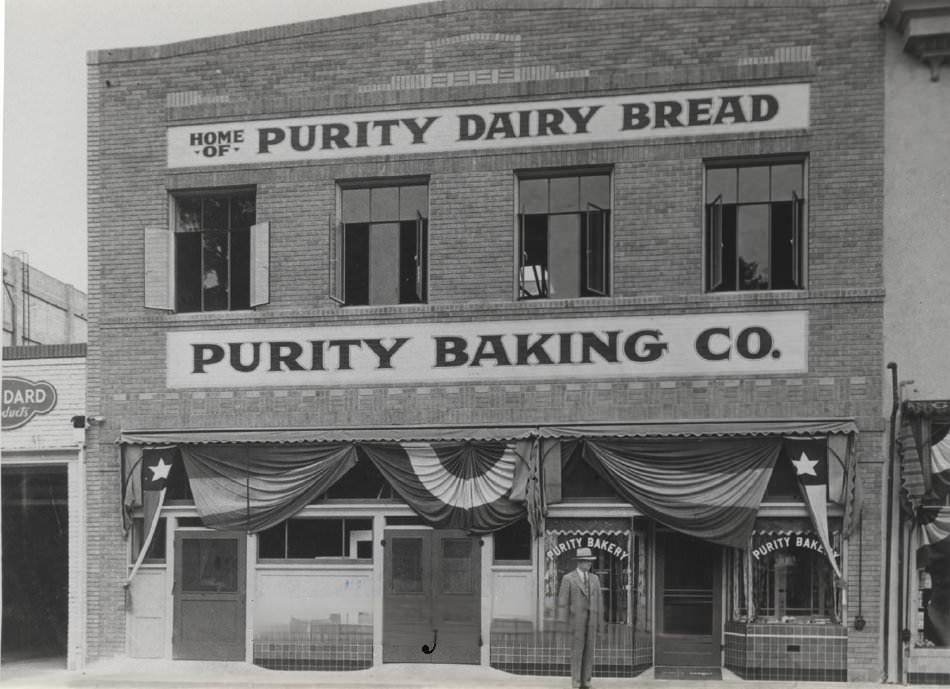
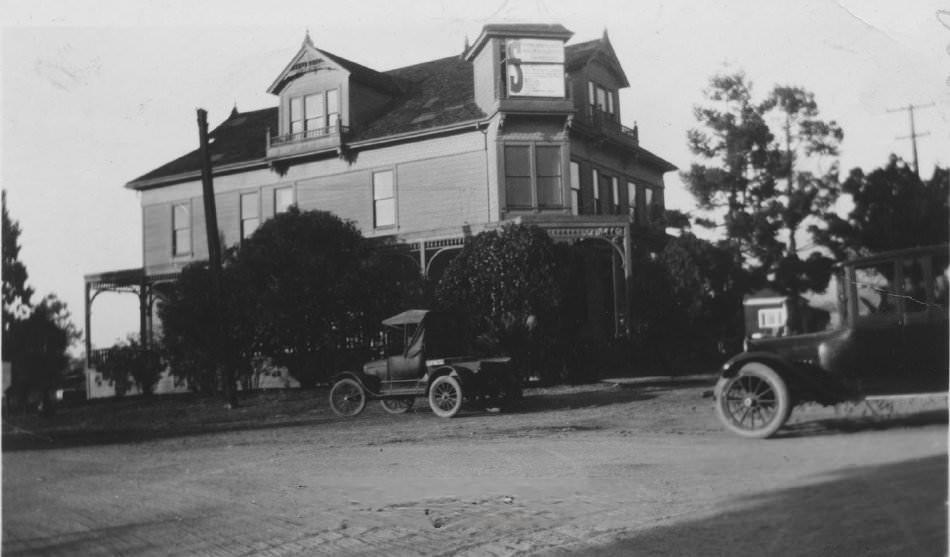
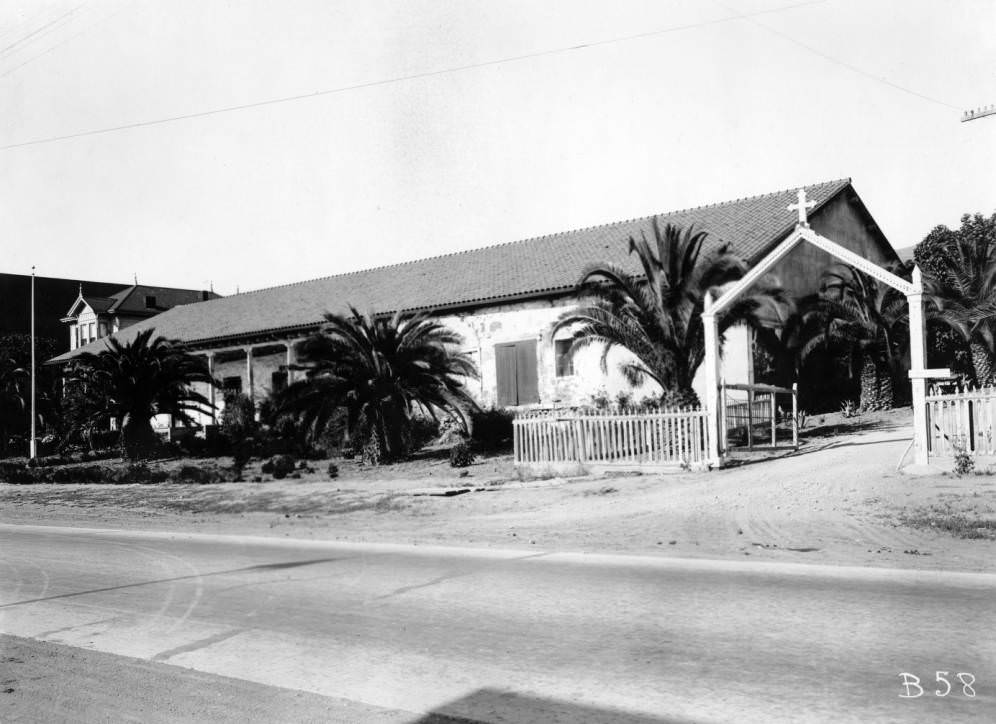
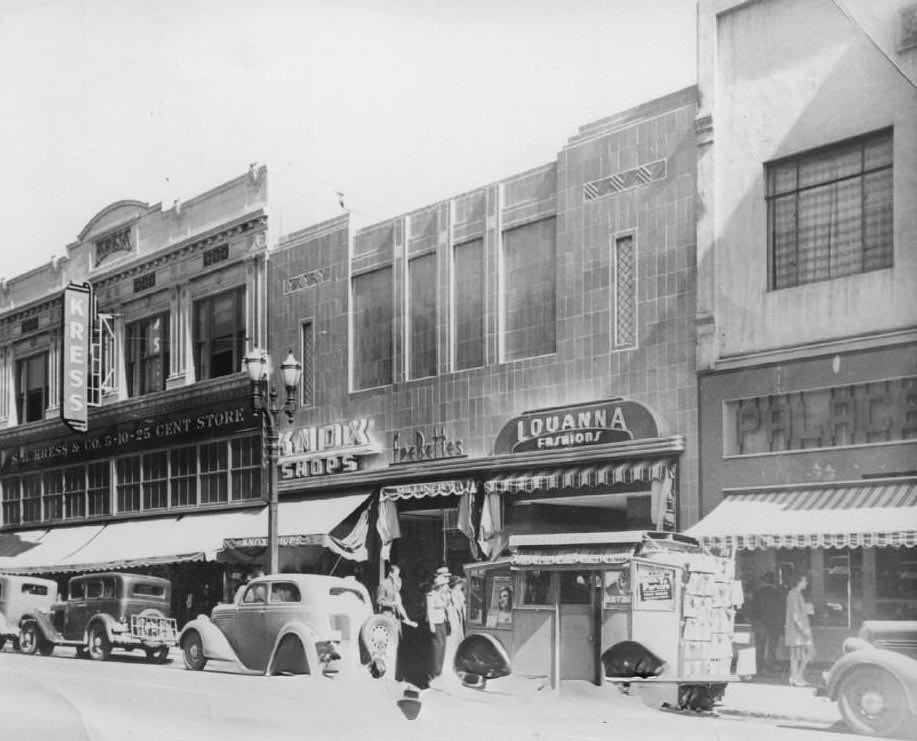
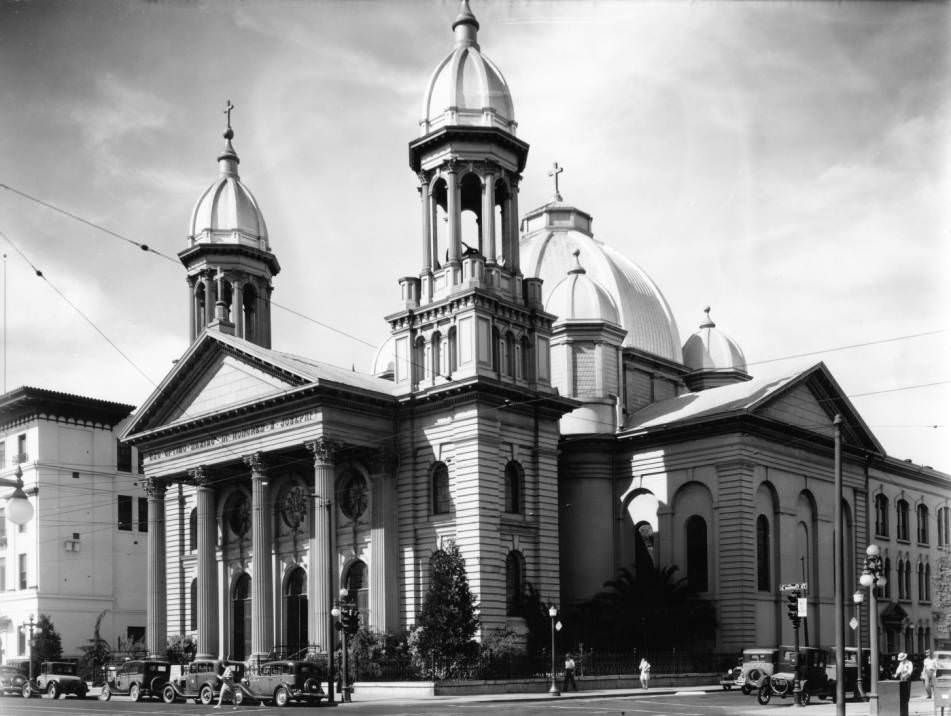
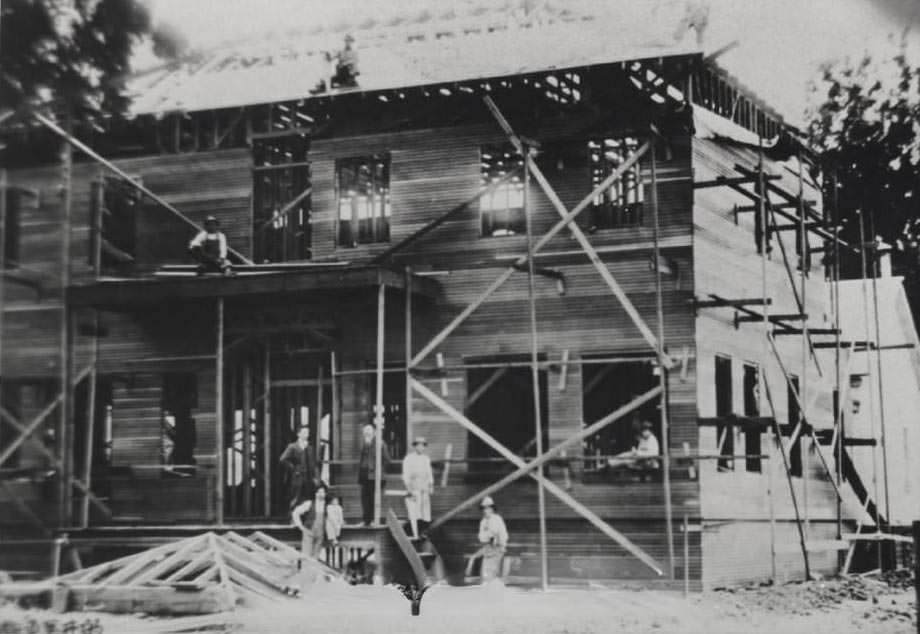
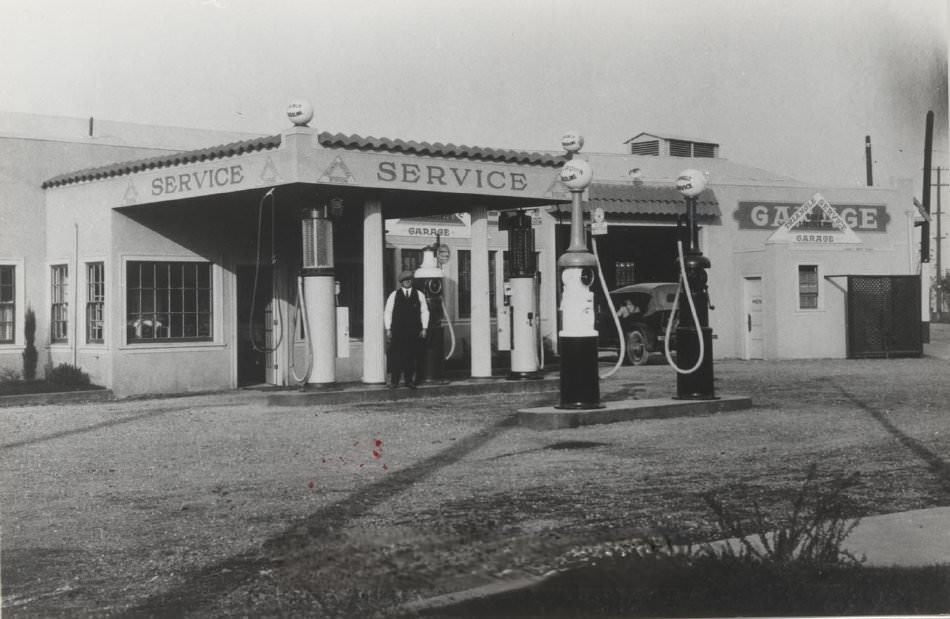
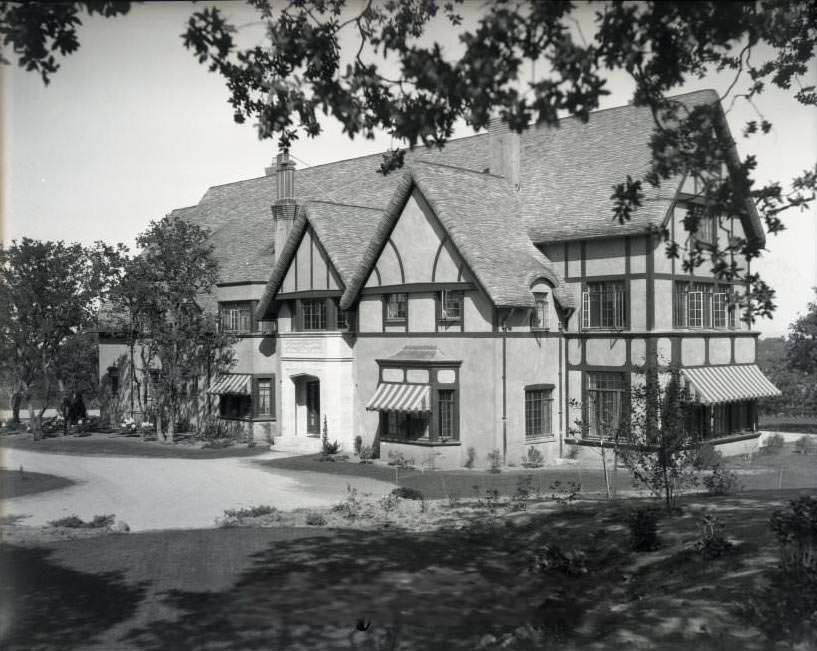
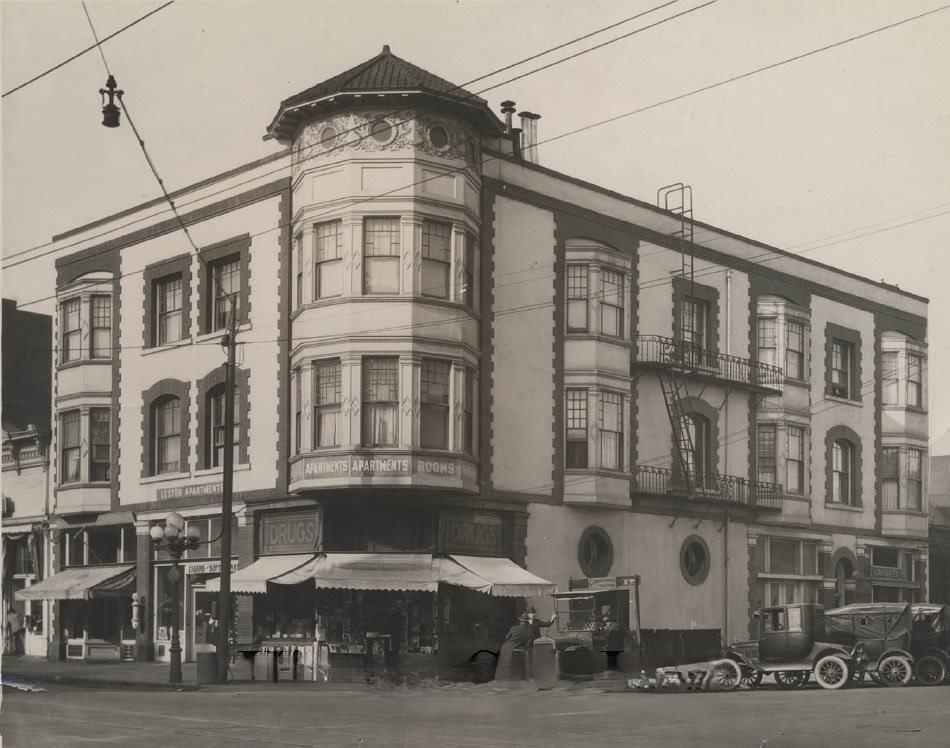
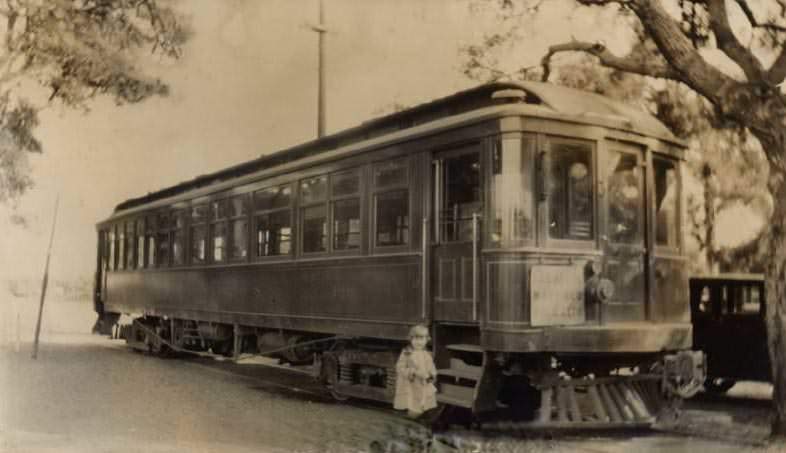
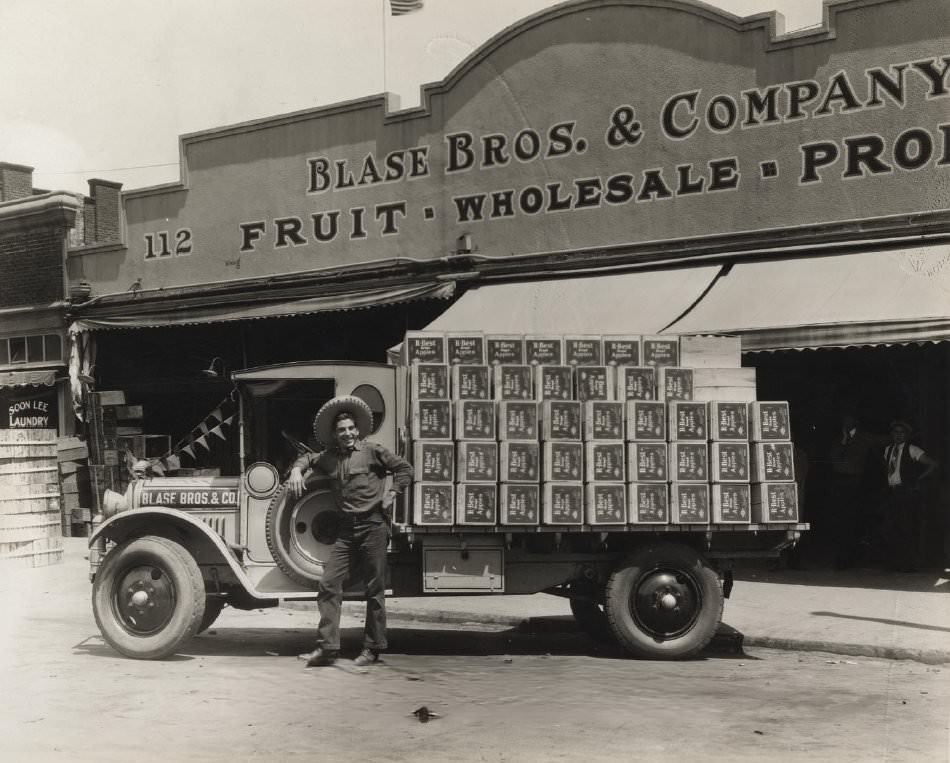
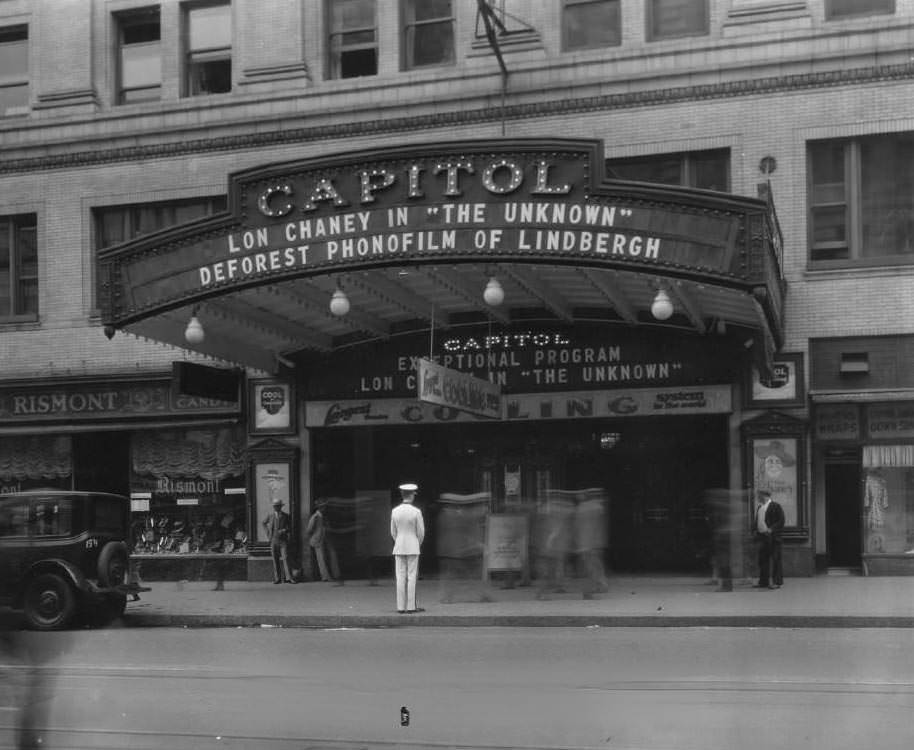
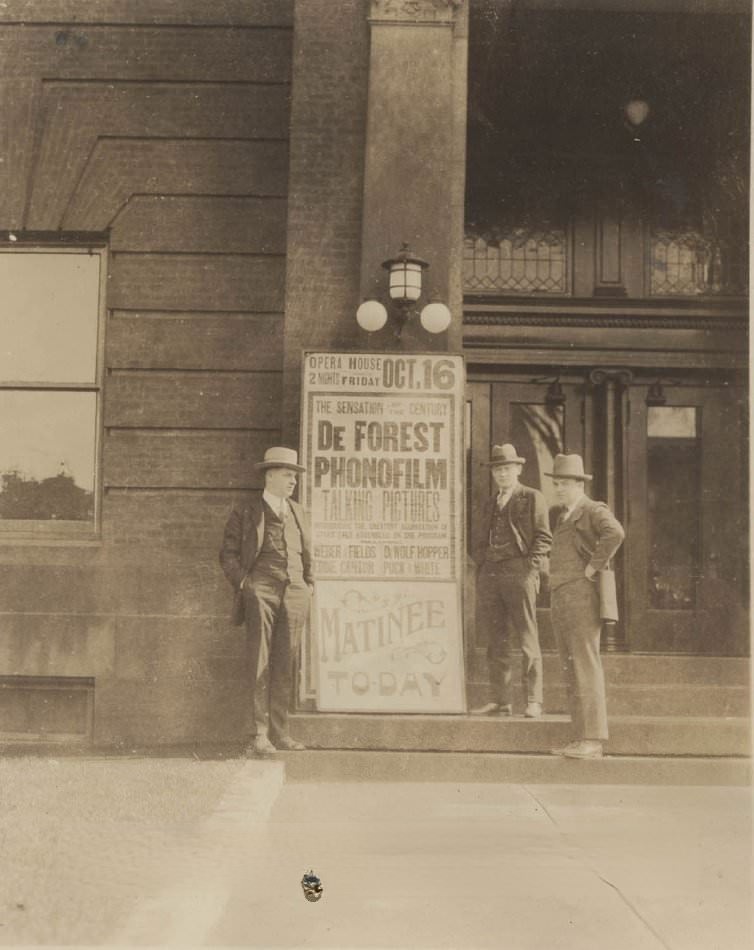
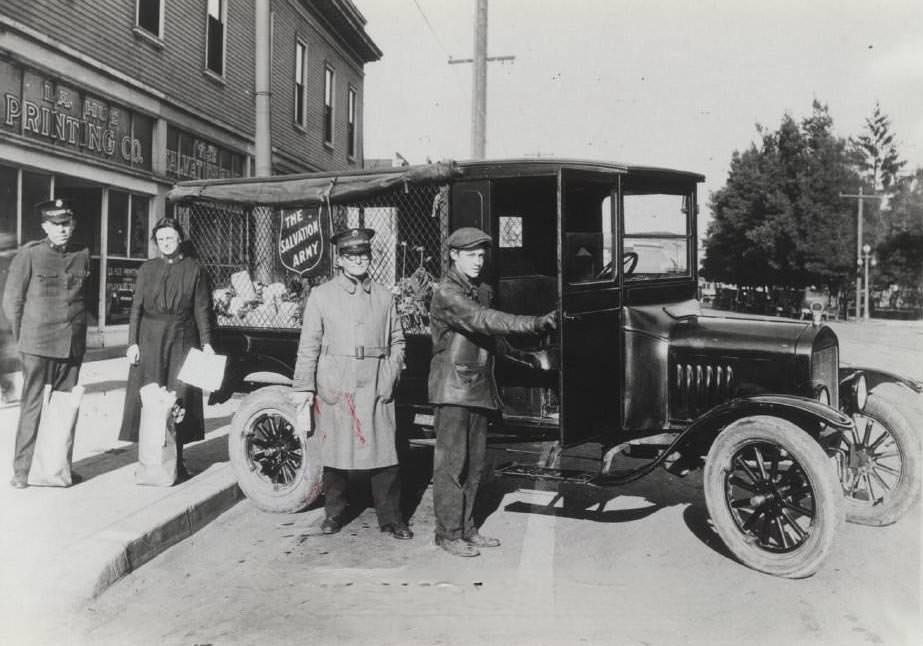
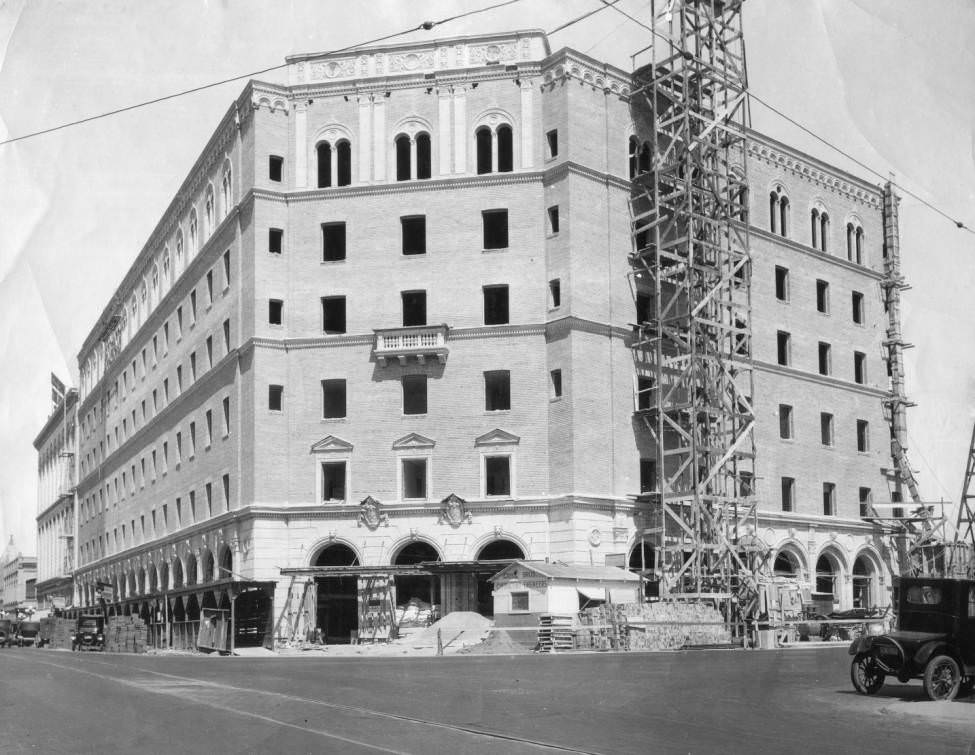
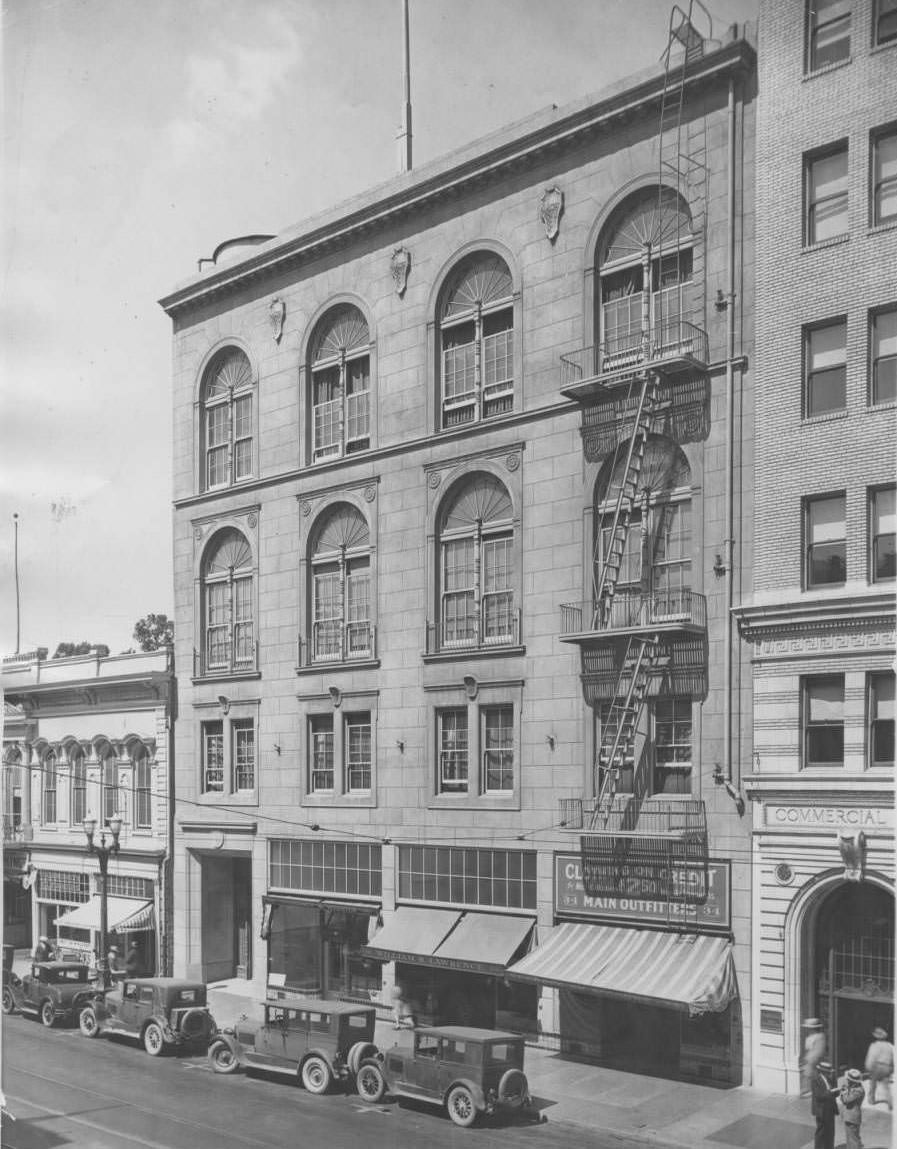
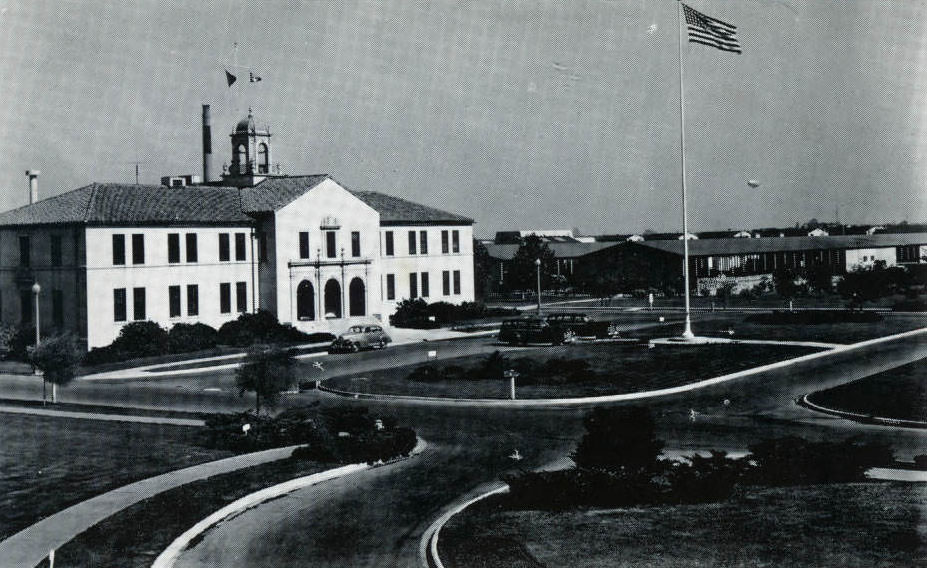
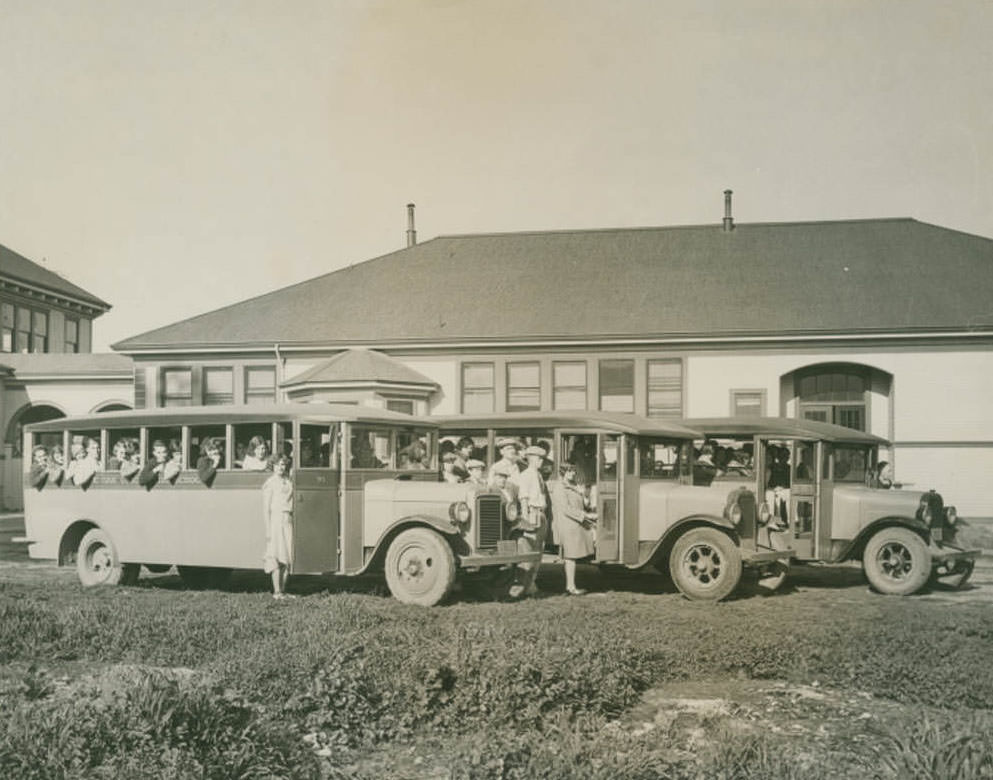
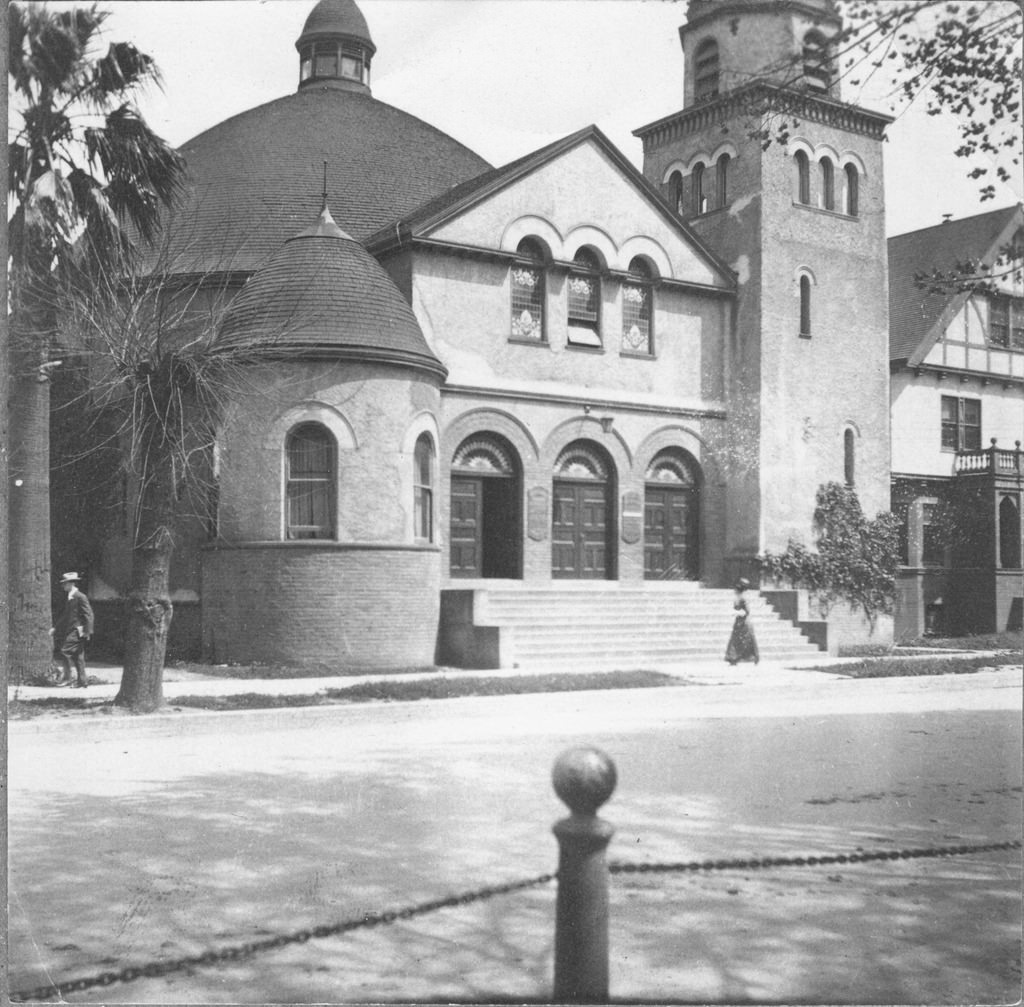
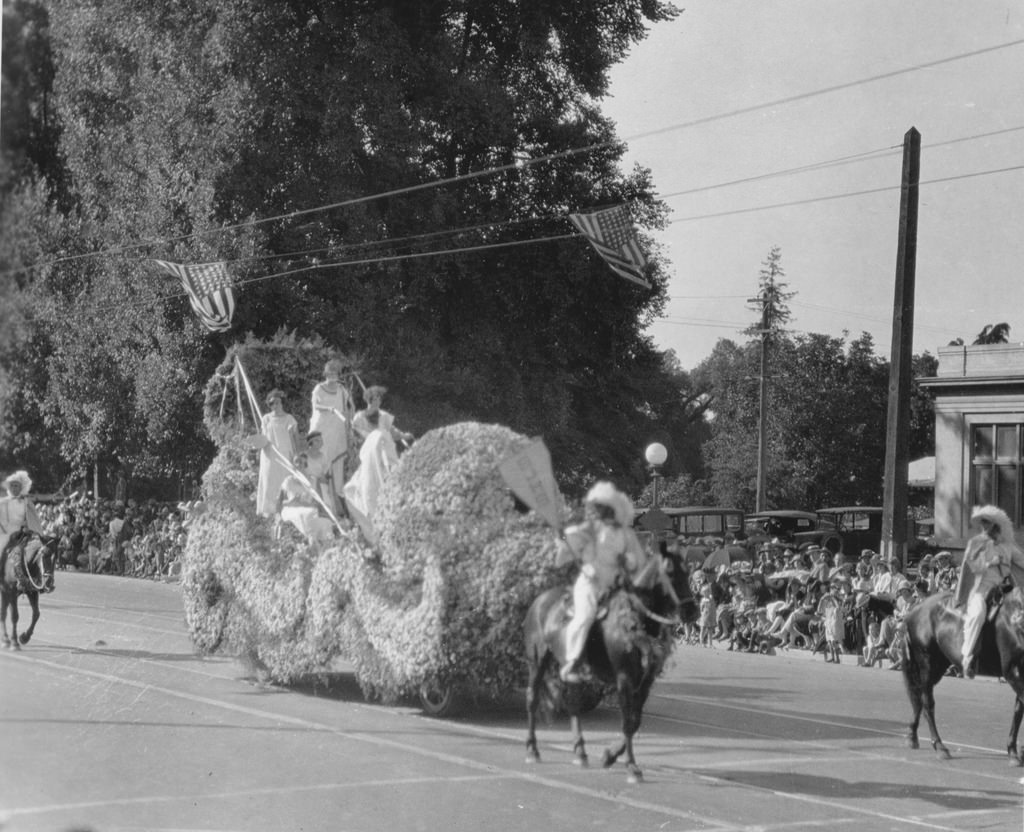
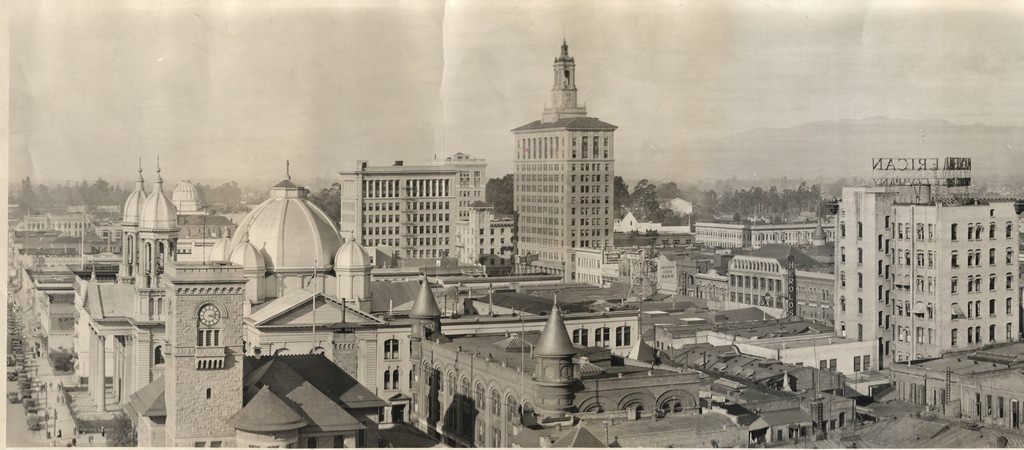
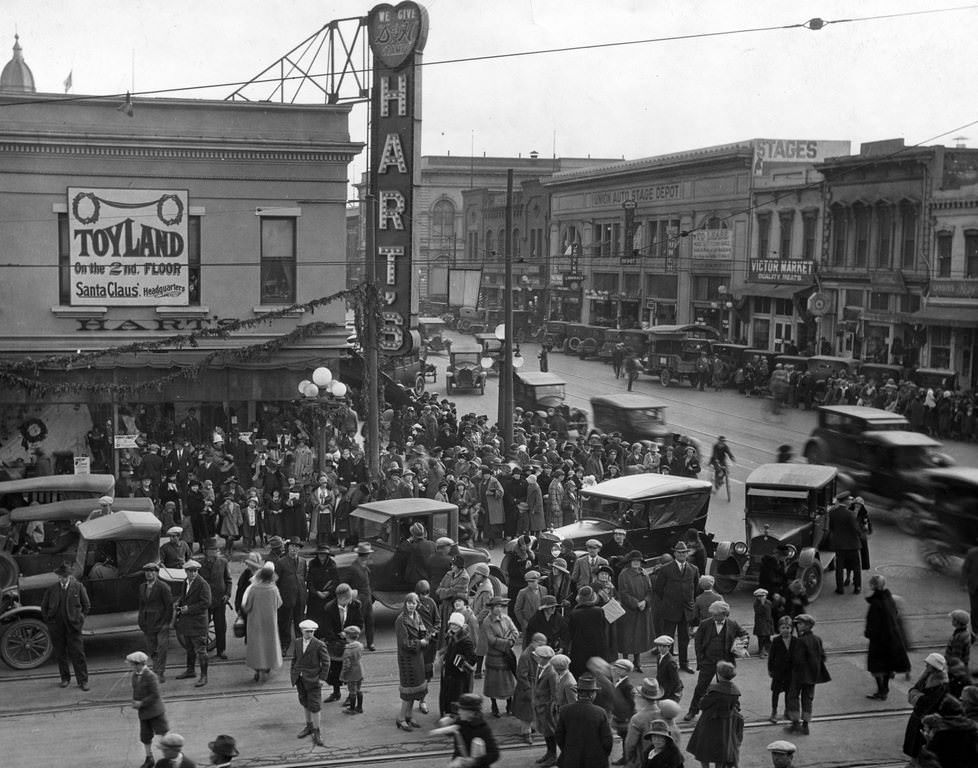
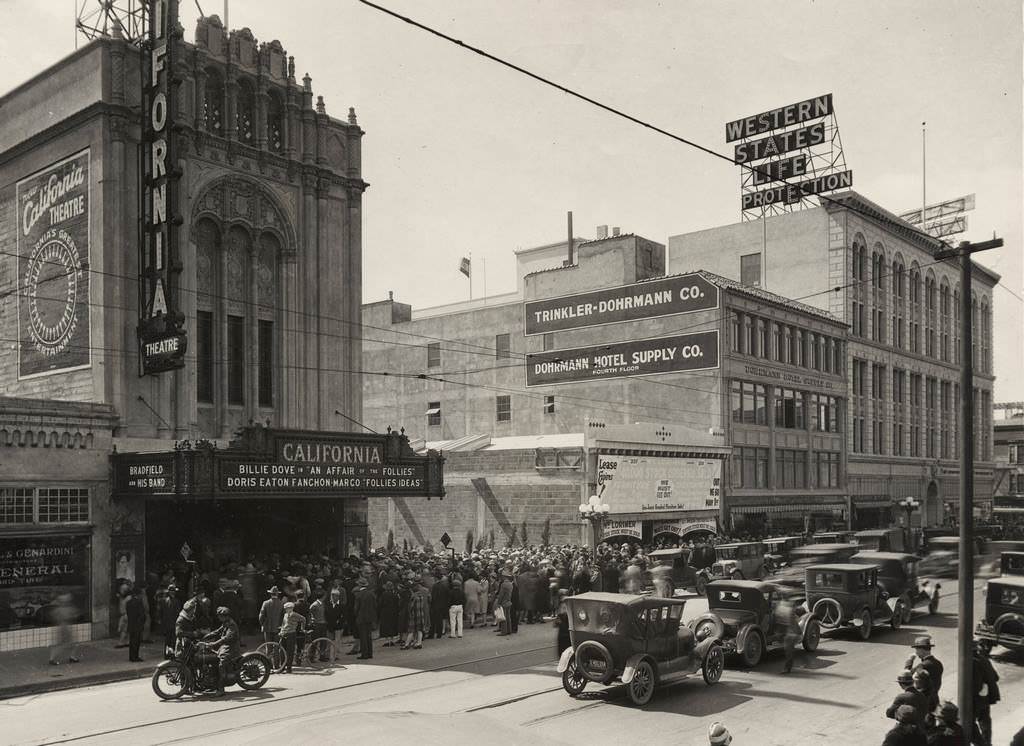
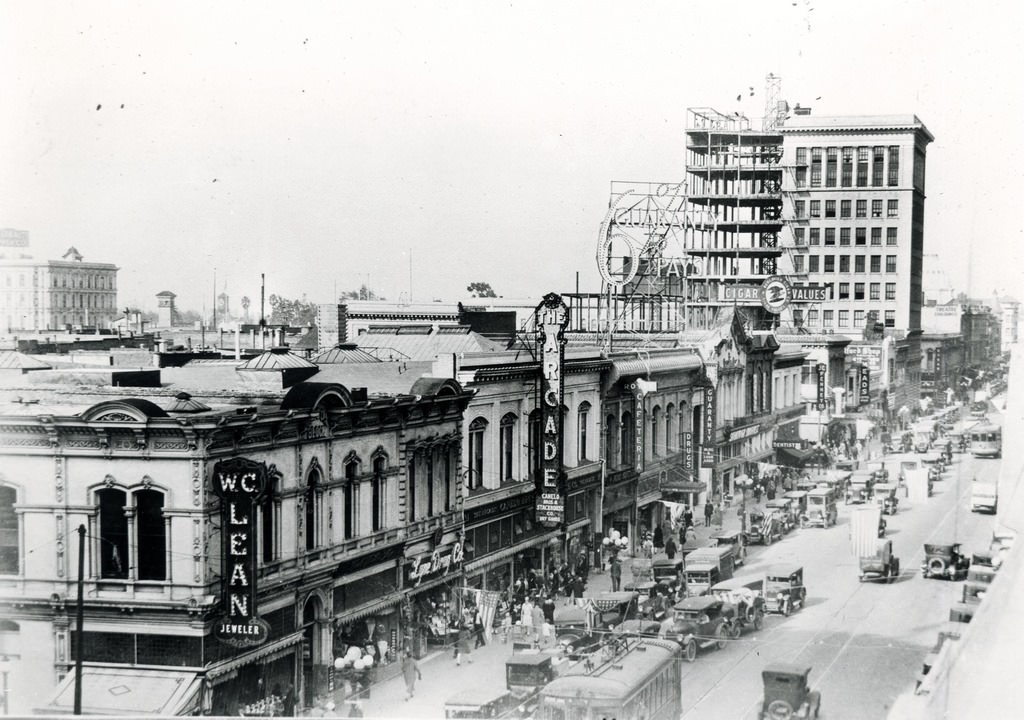
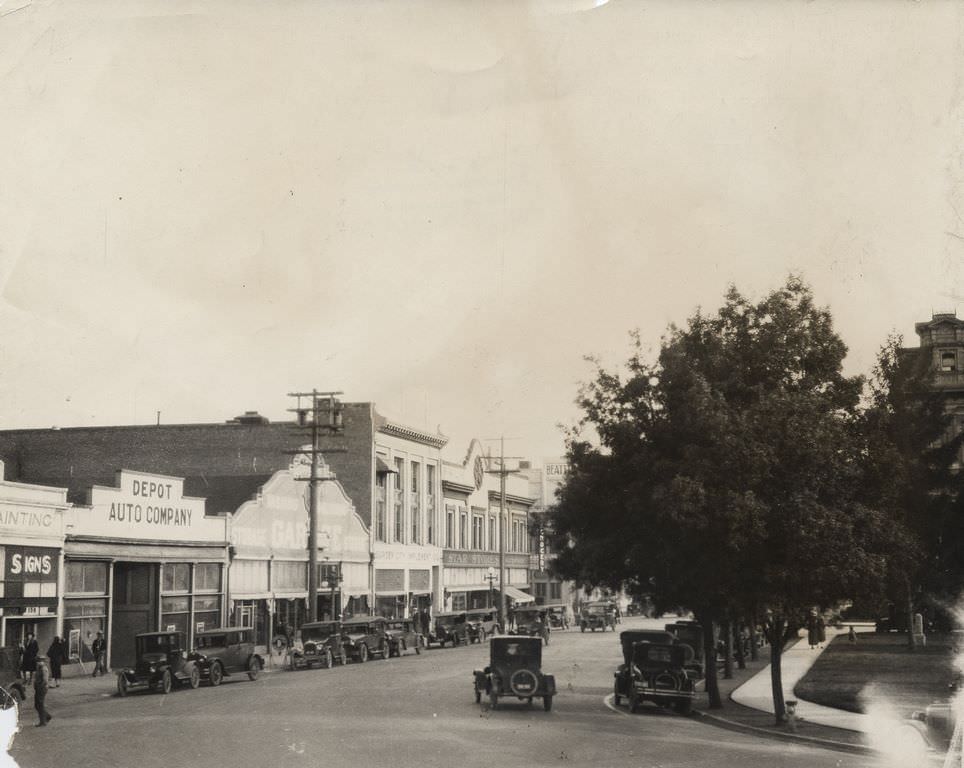
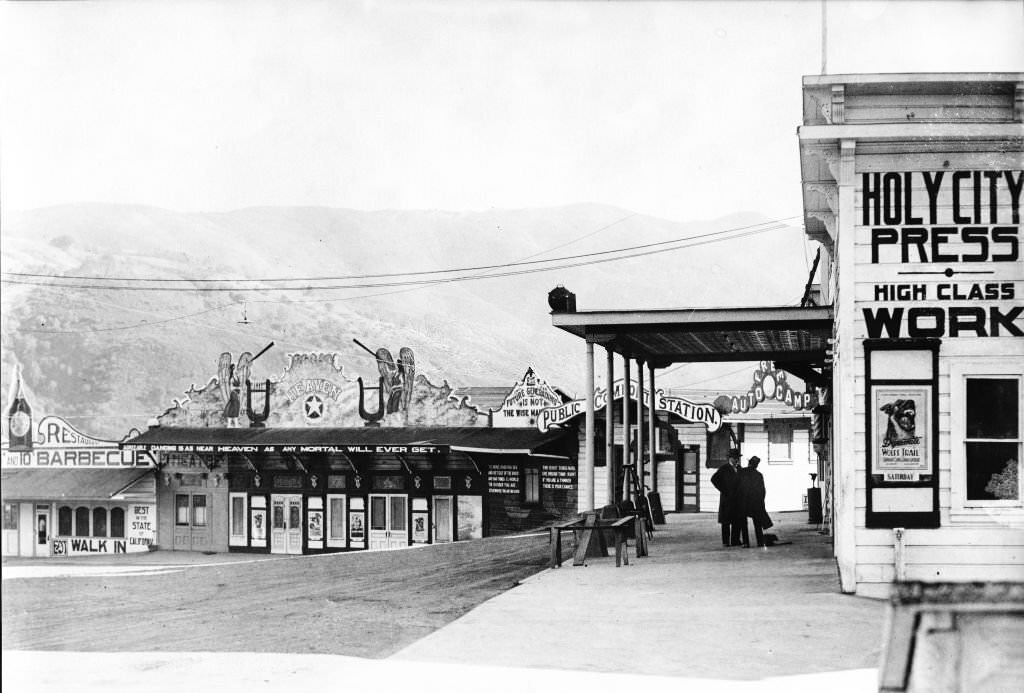
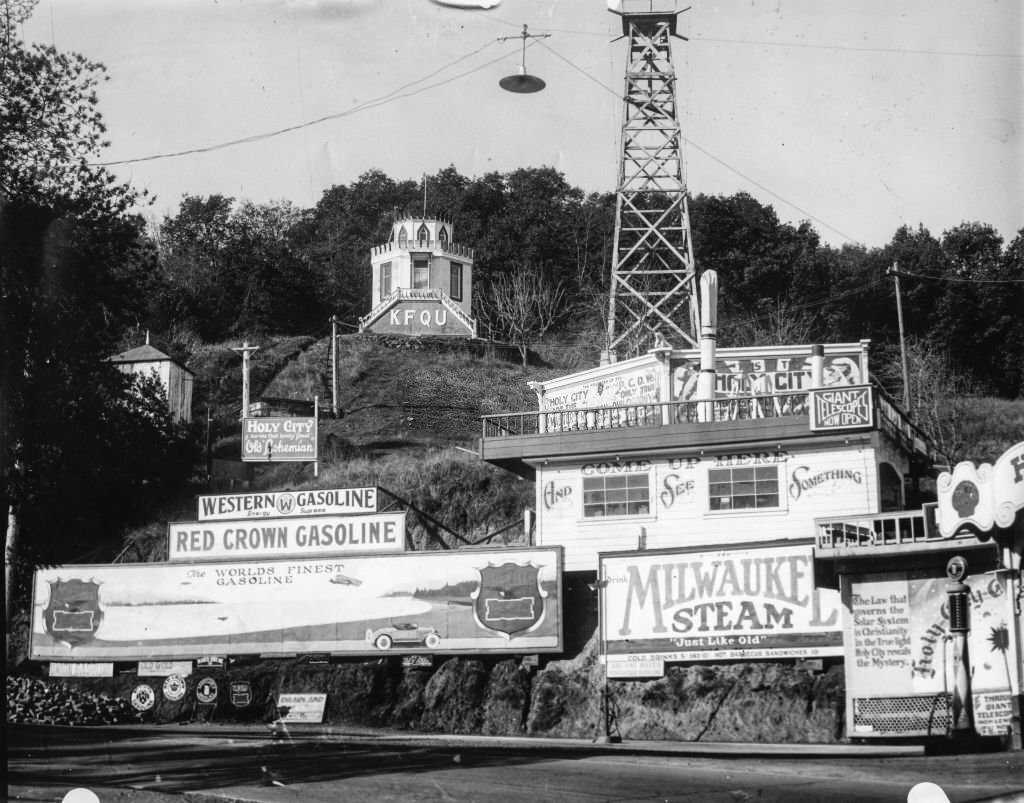
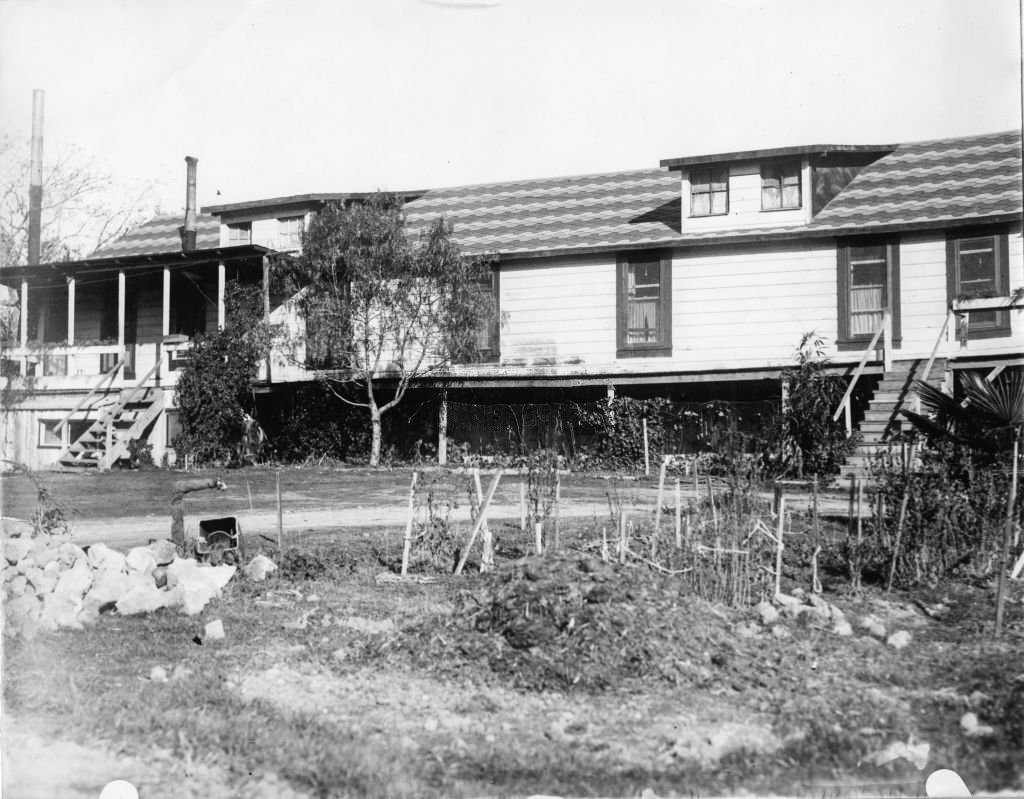
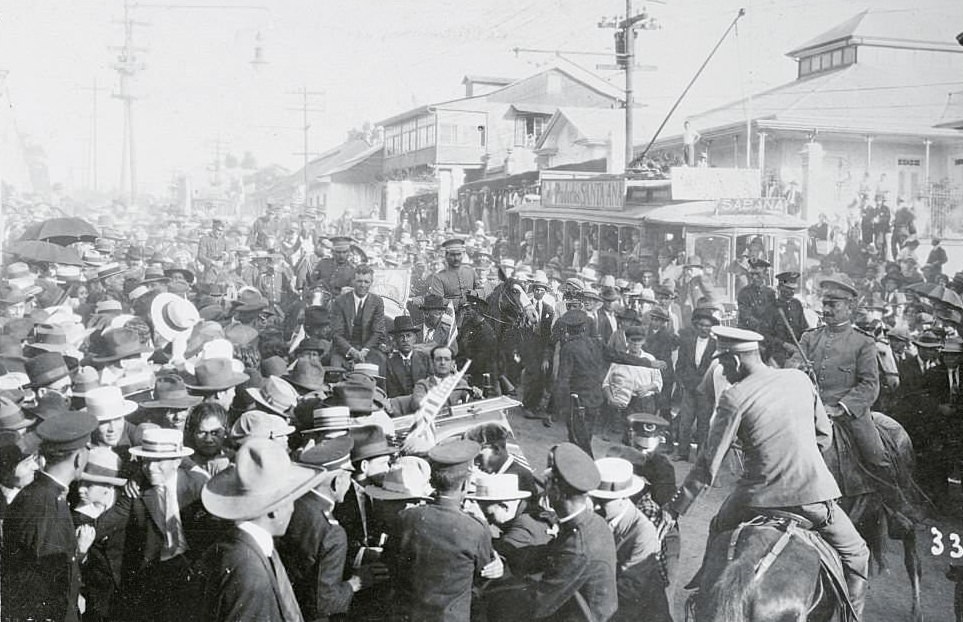
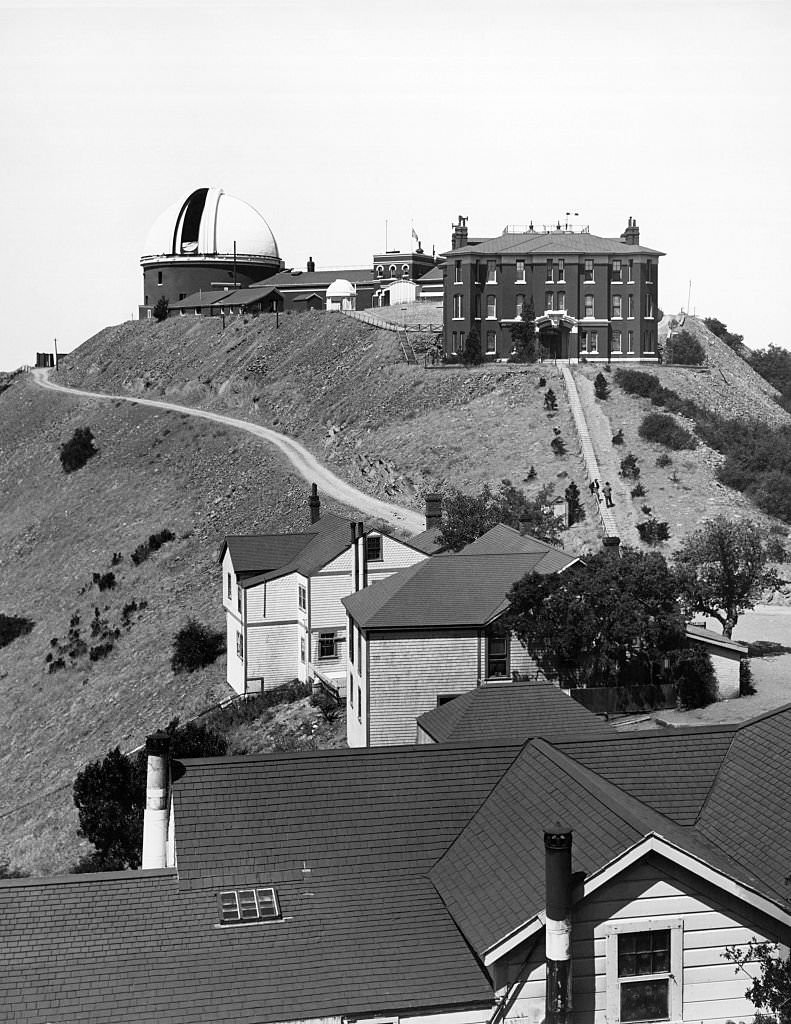
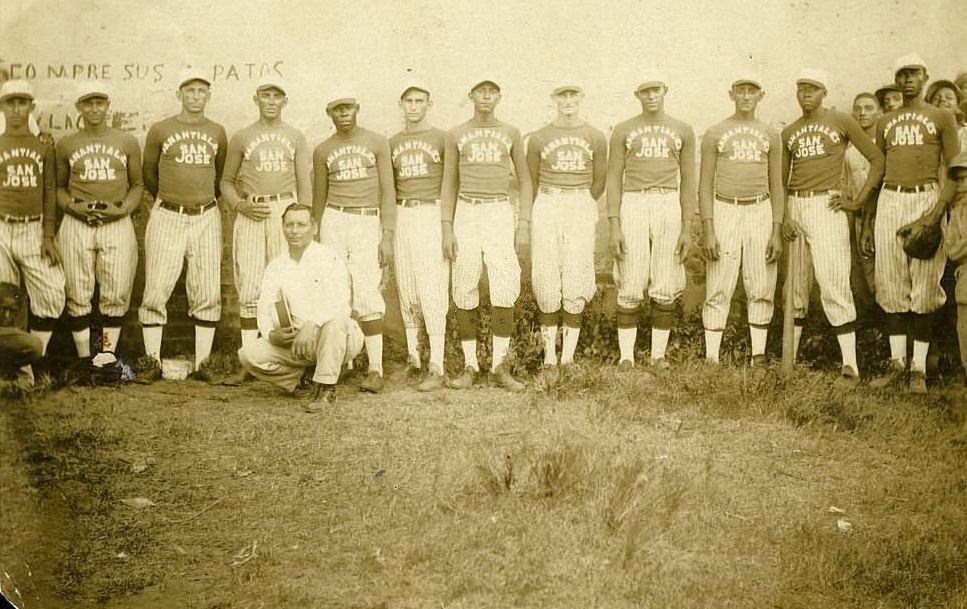
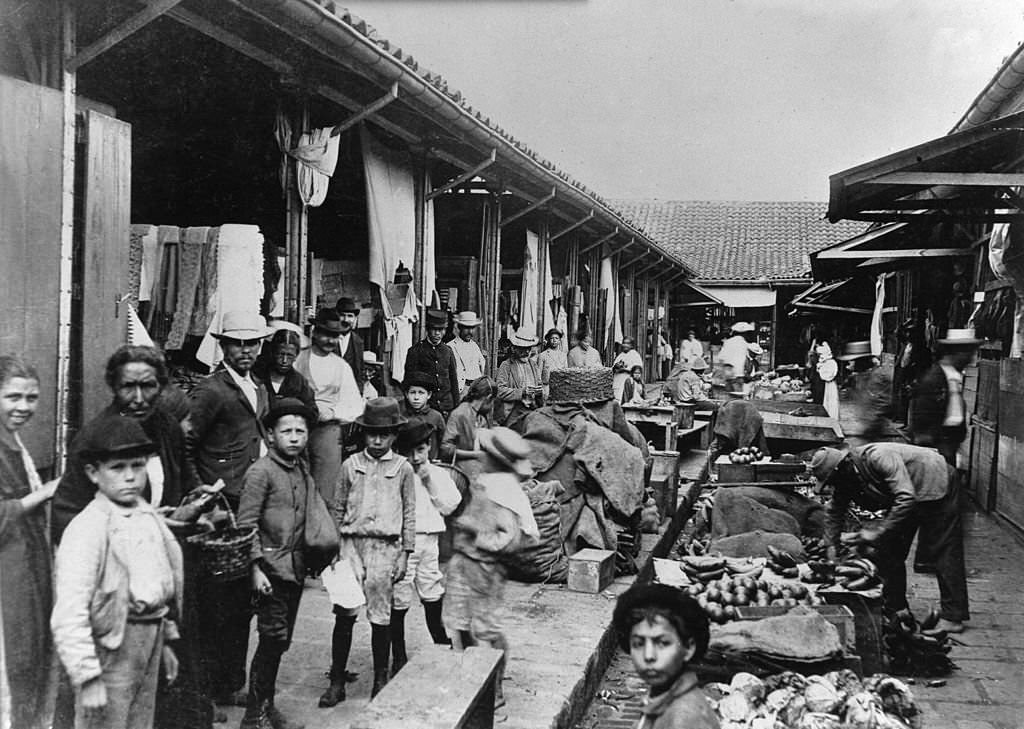




Some cool bicycle photos. I wonder if the one of the track cyclists was at Hellyer? it’s a board track in the photo, and that could have been anywhere, but I don’t know the history of Hellyer and whether it had something before the current track.